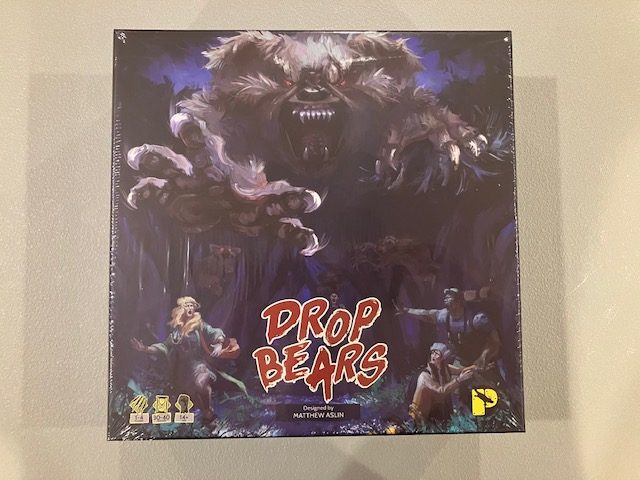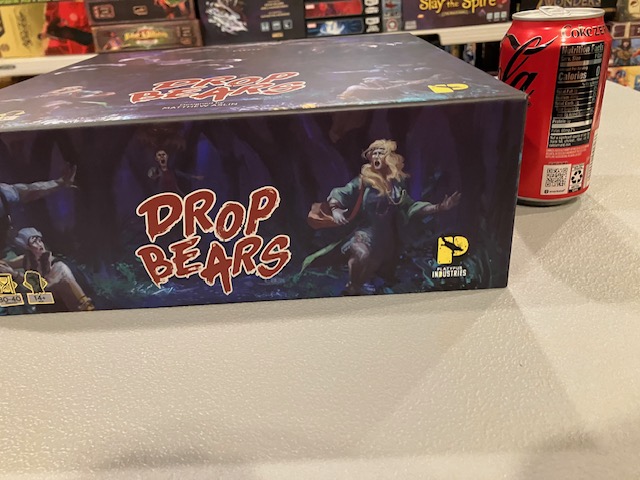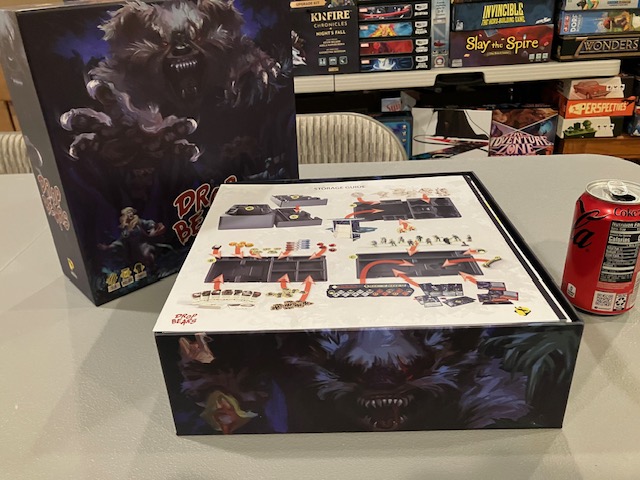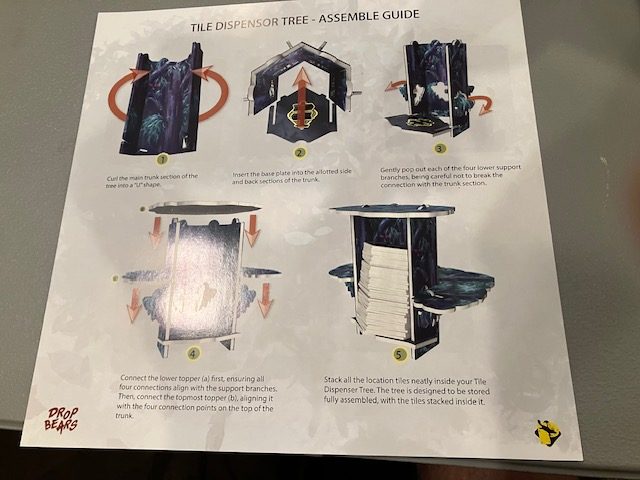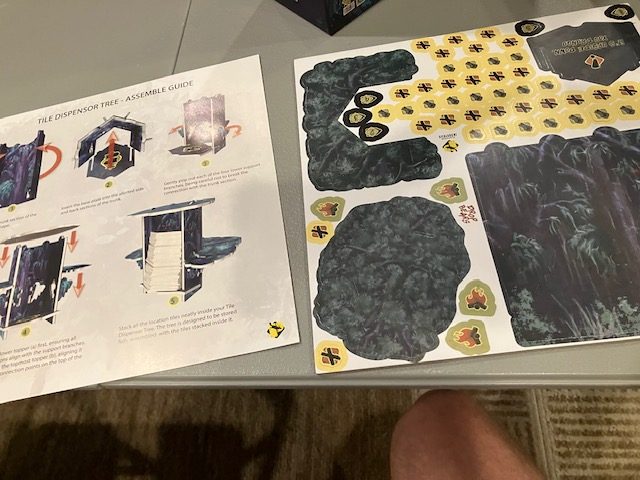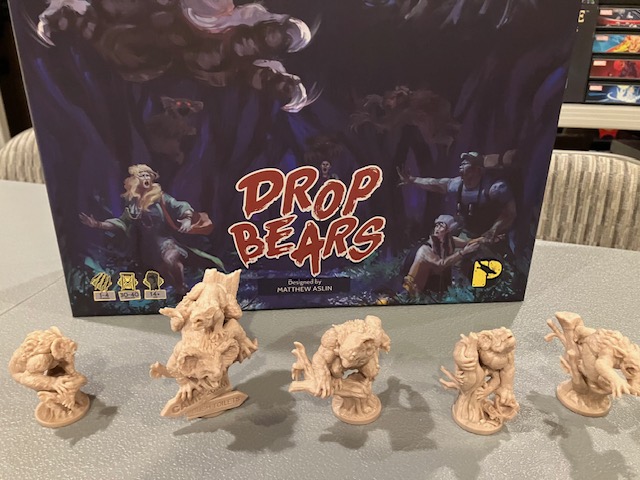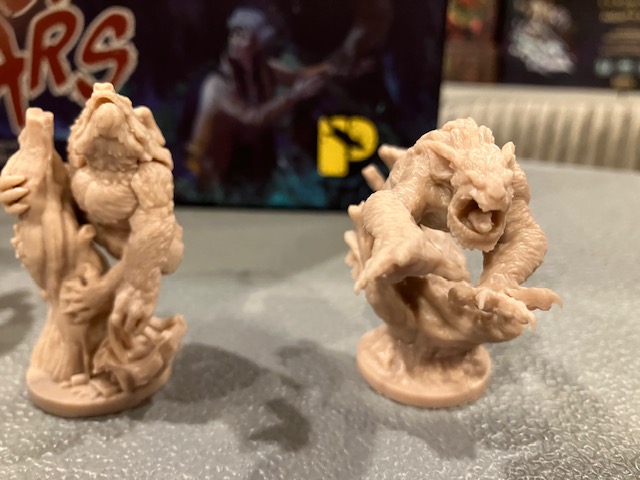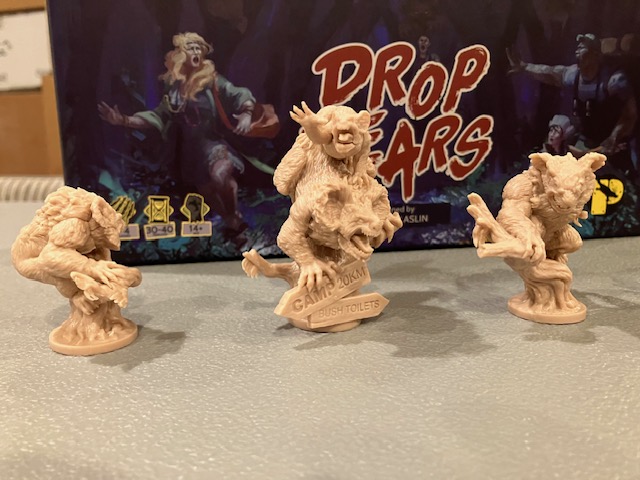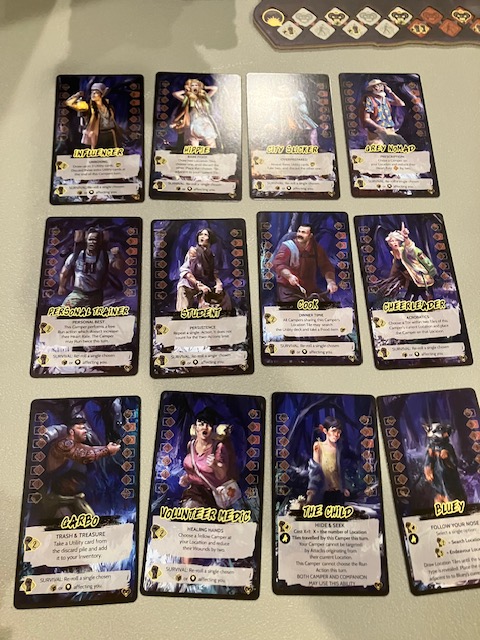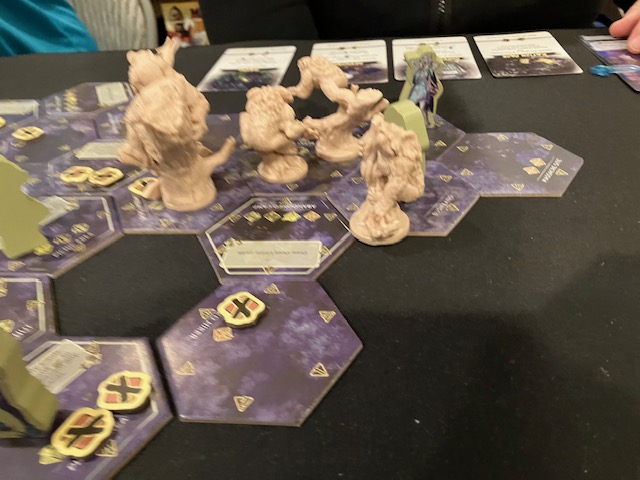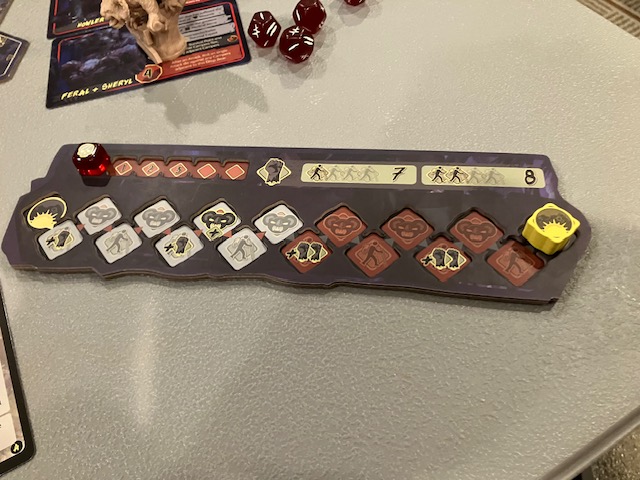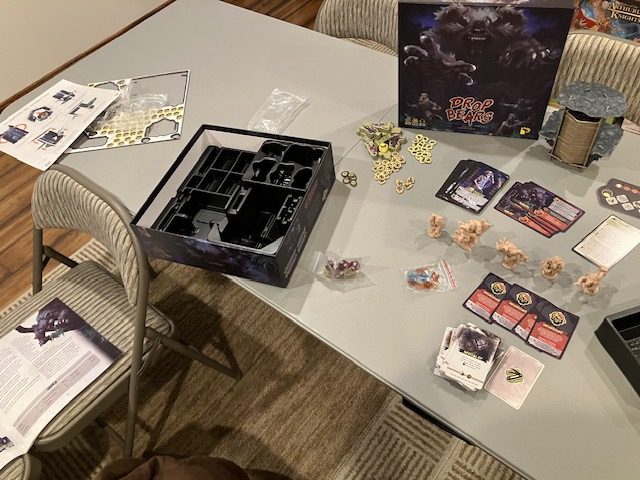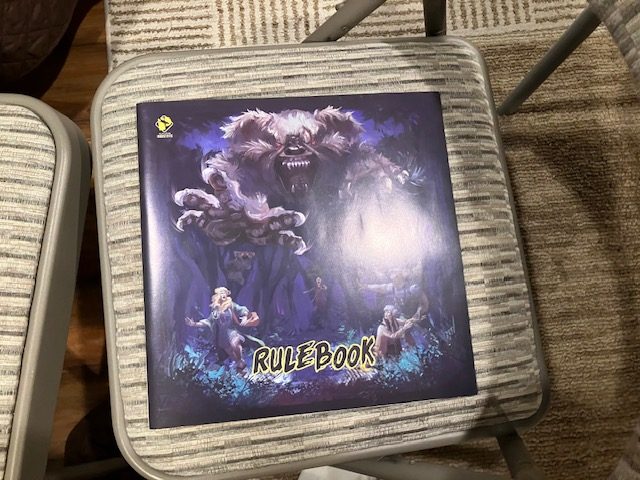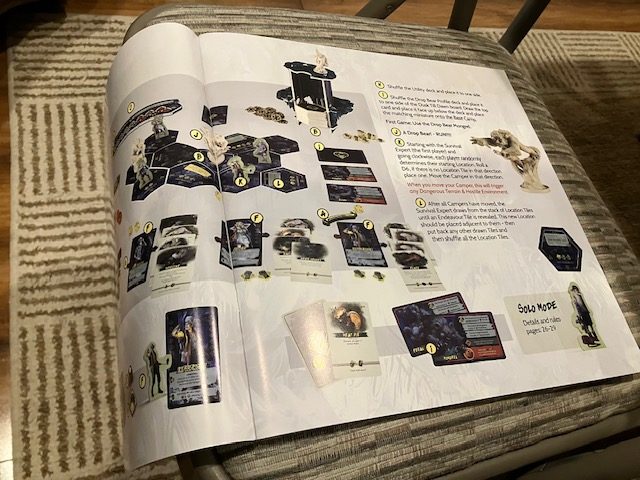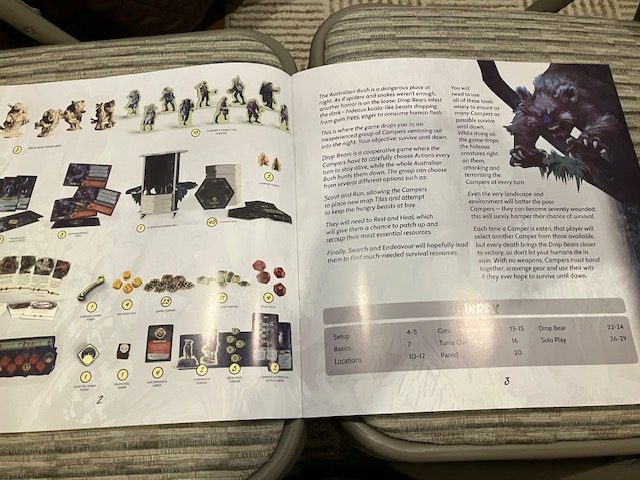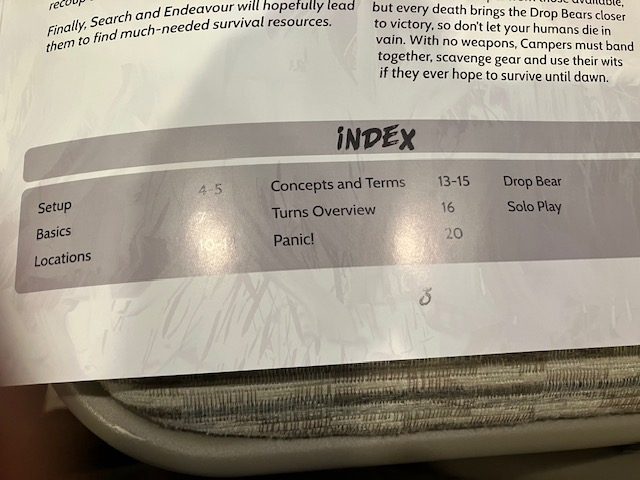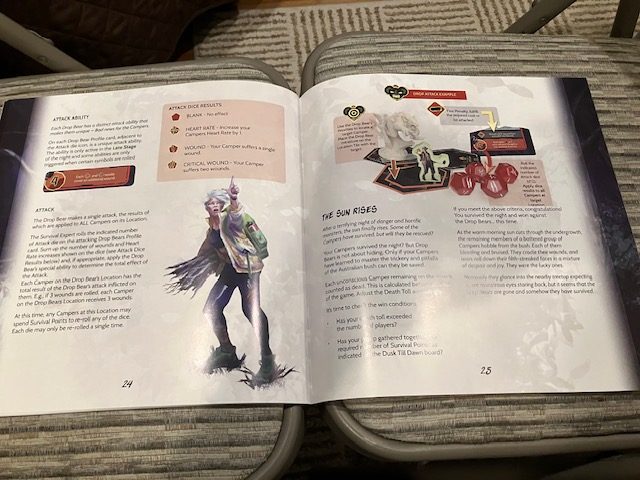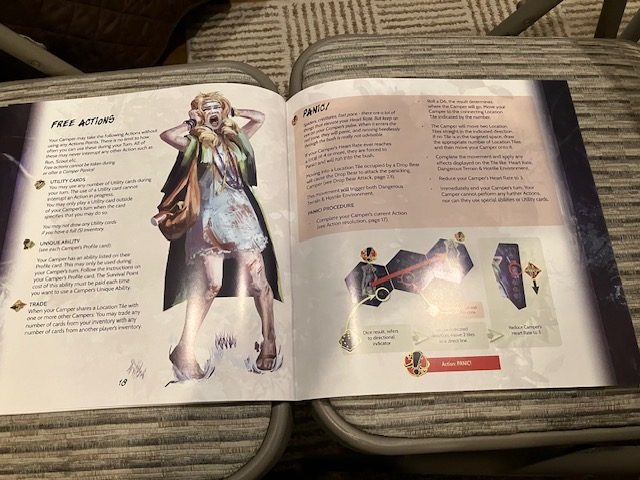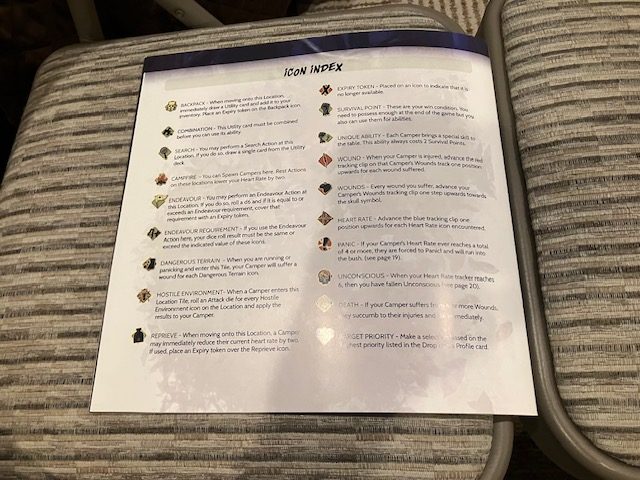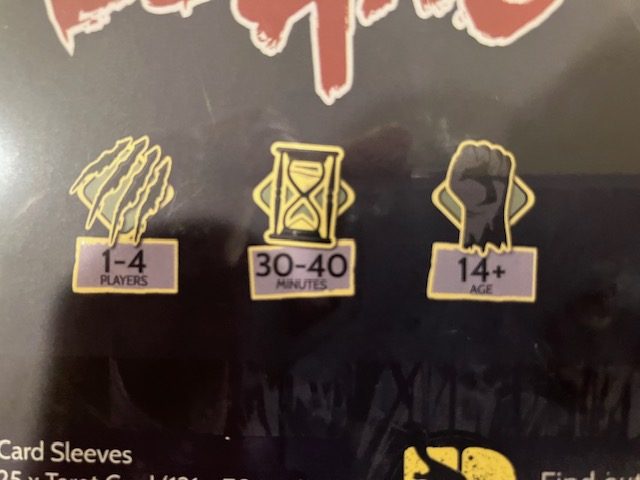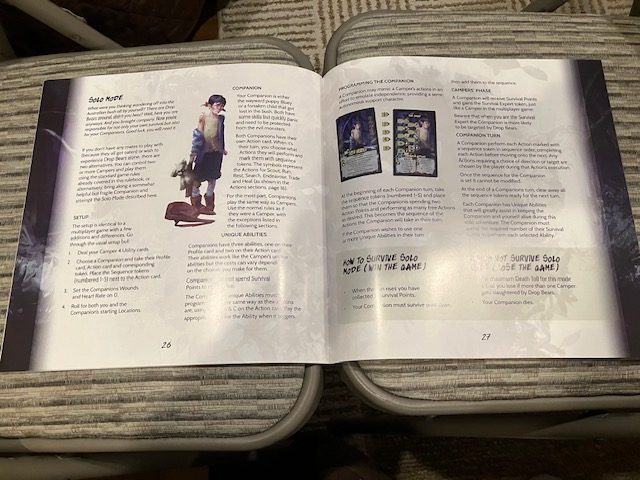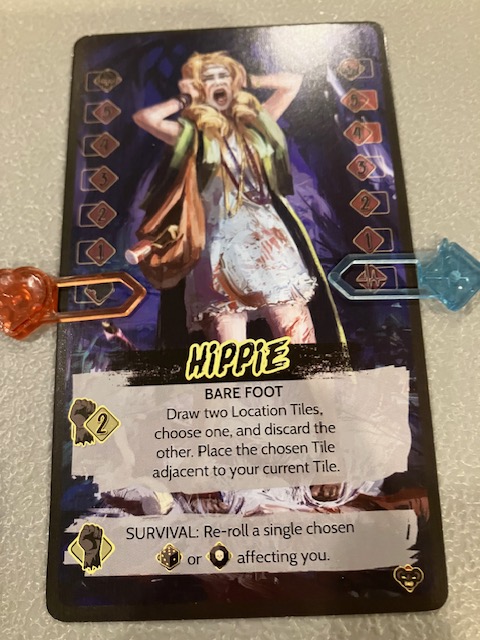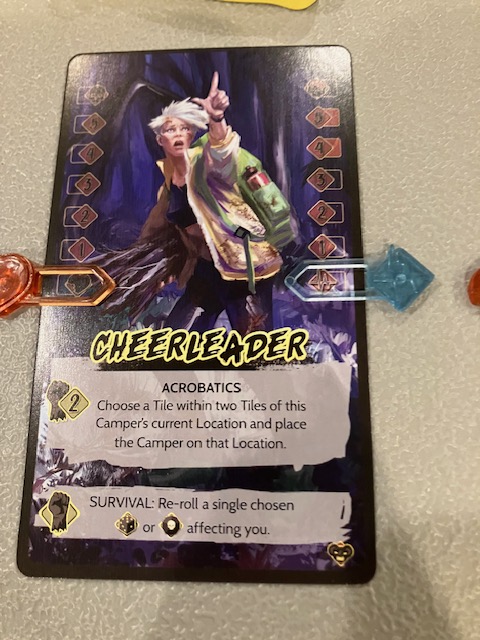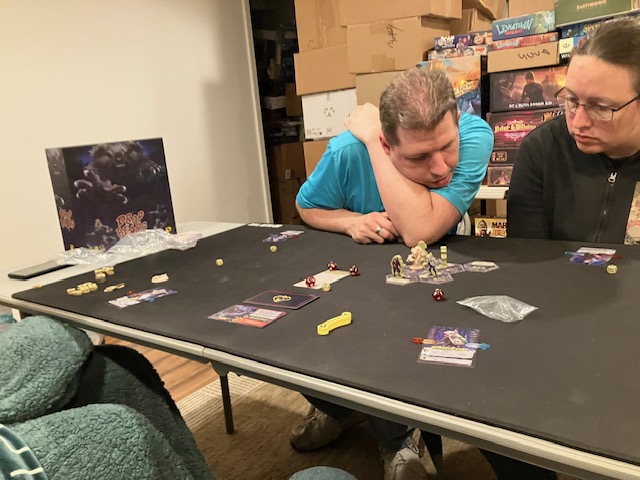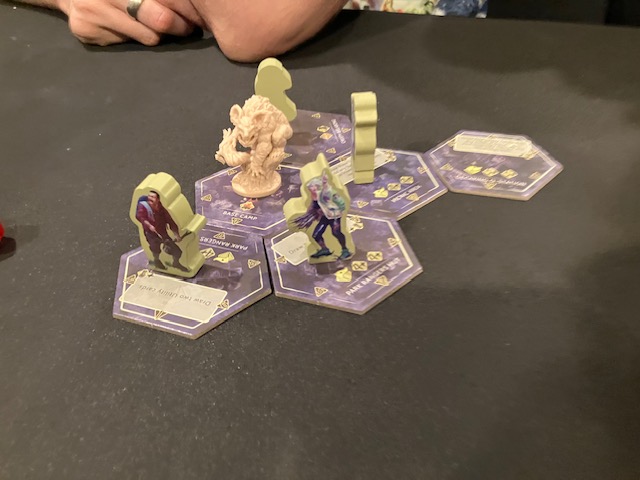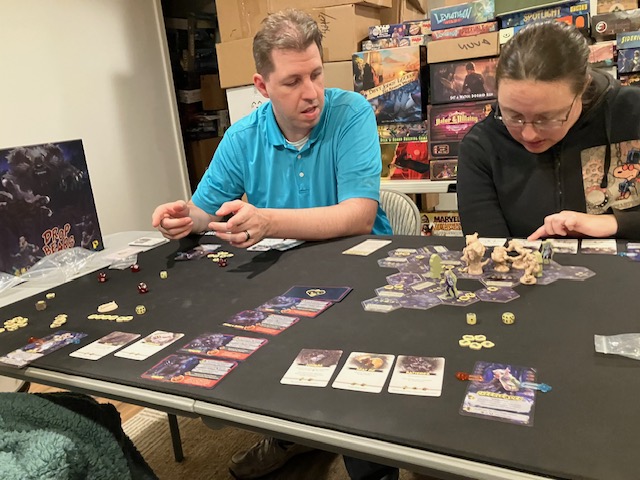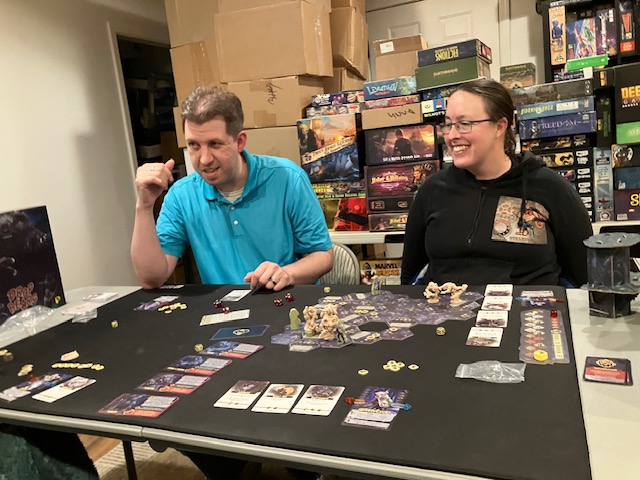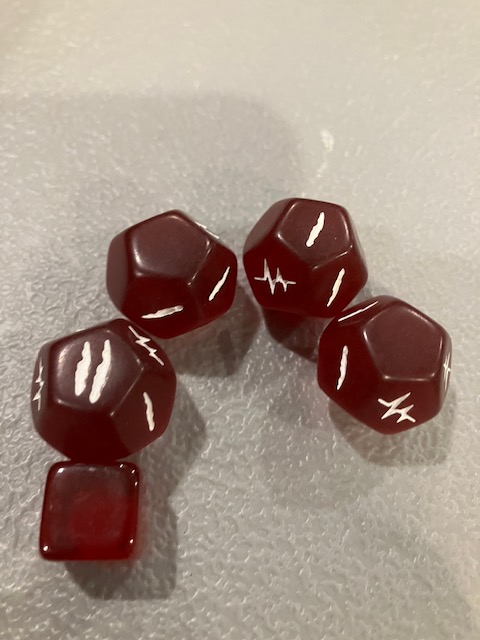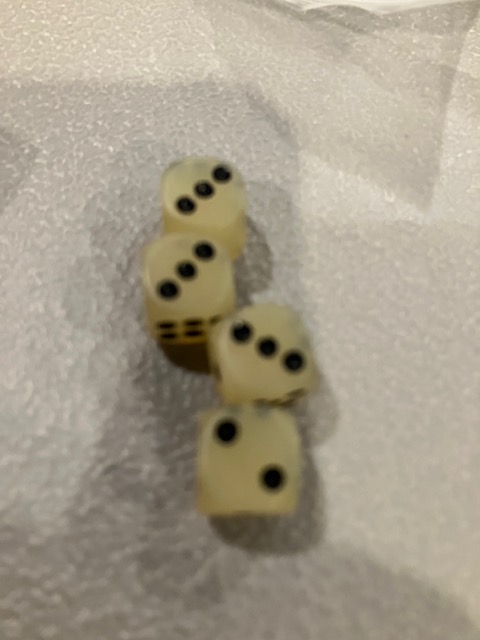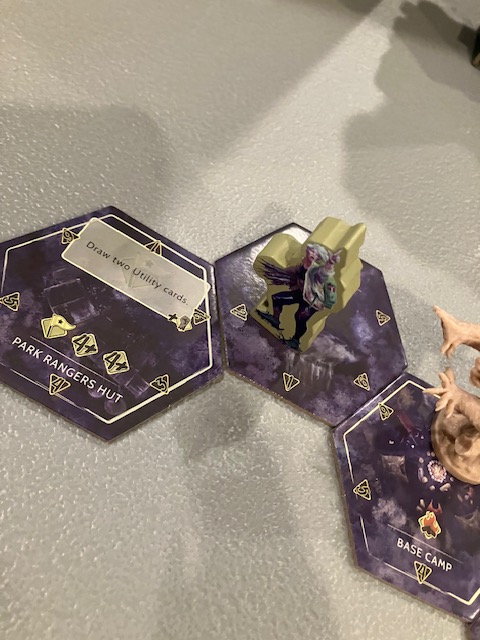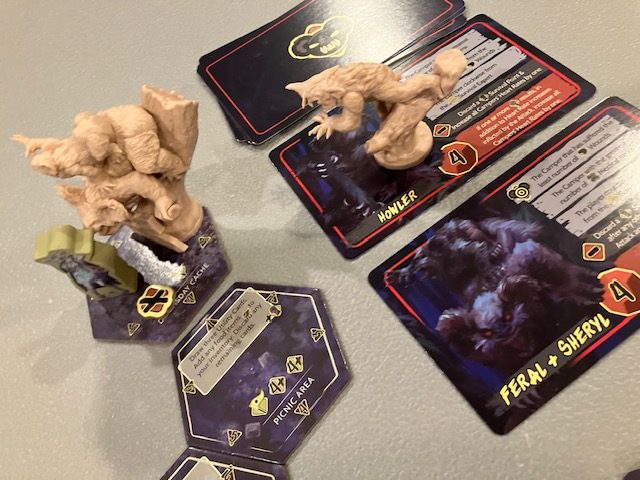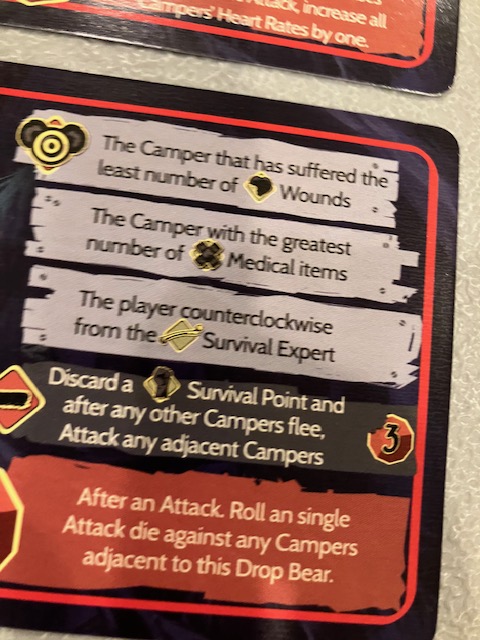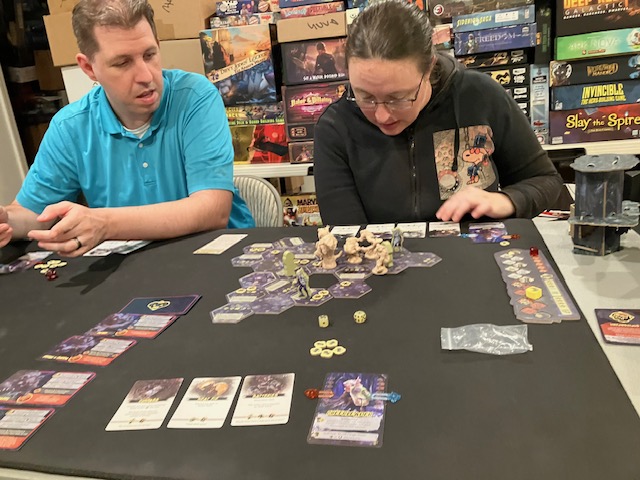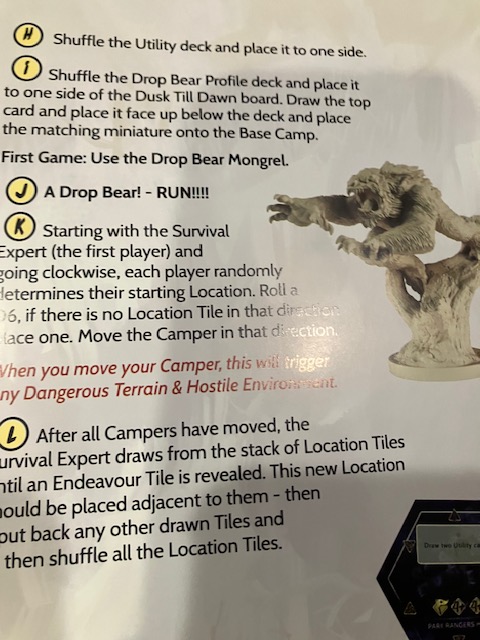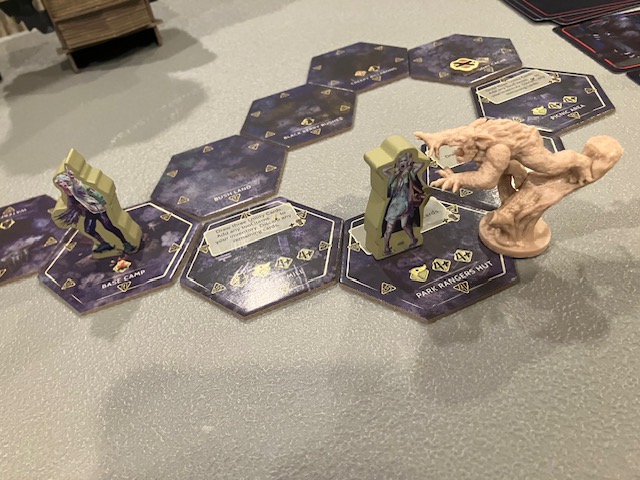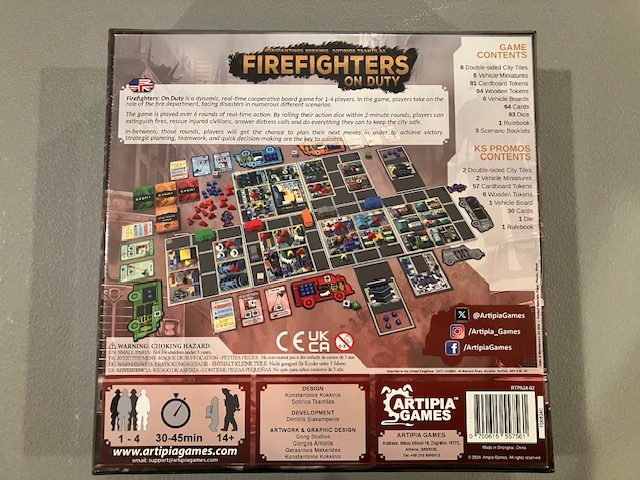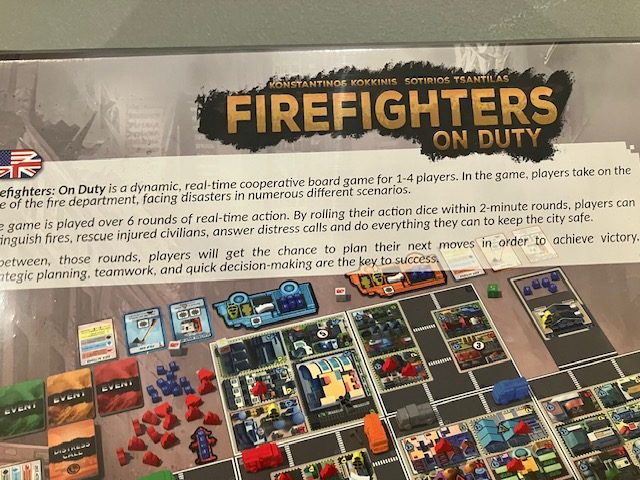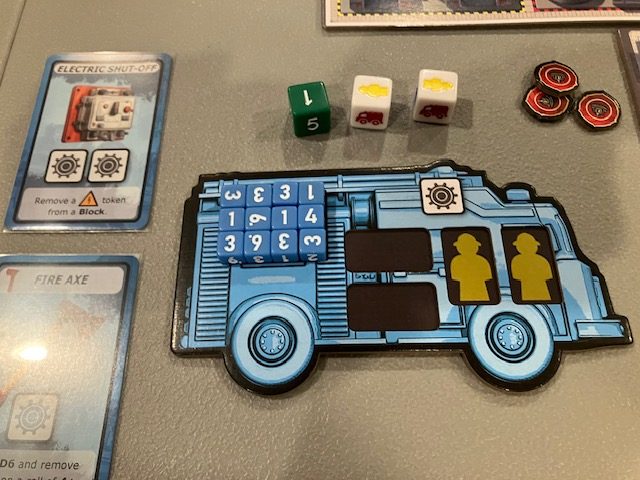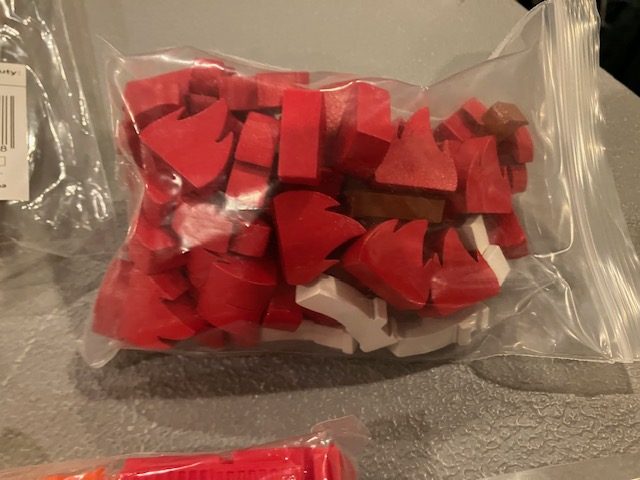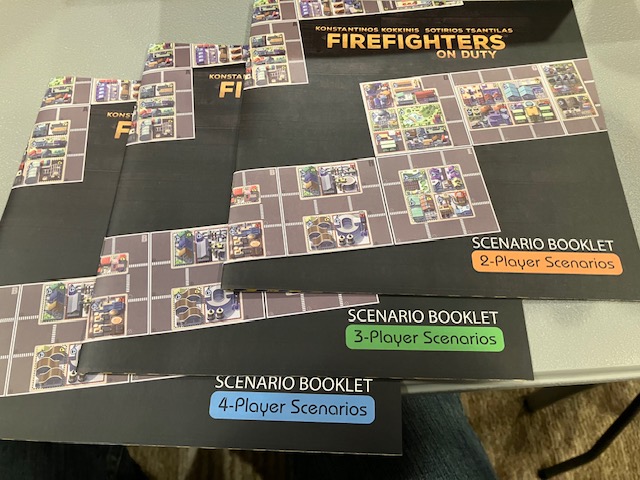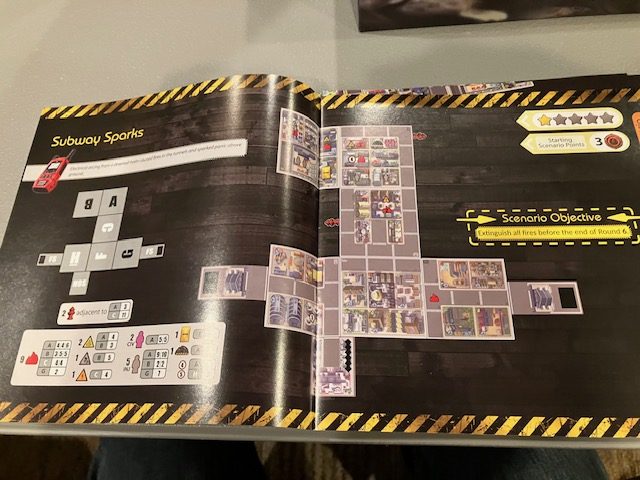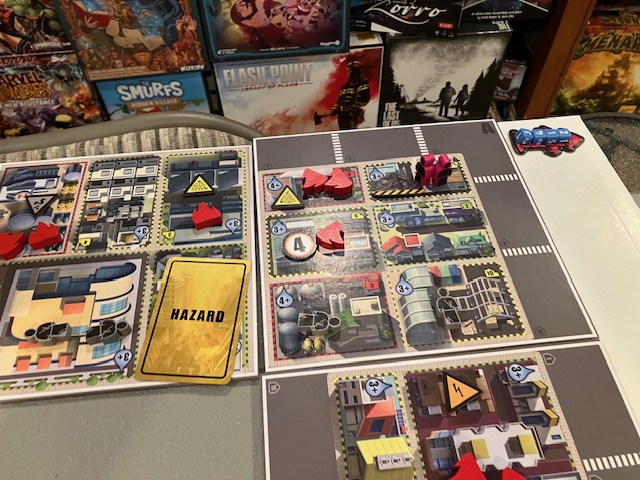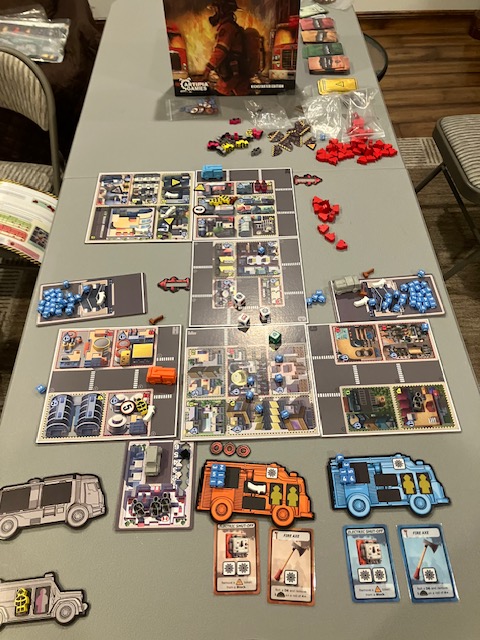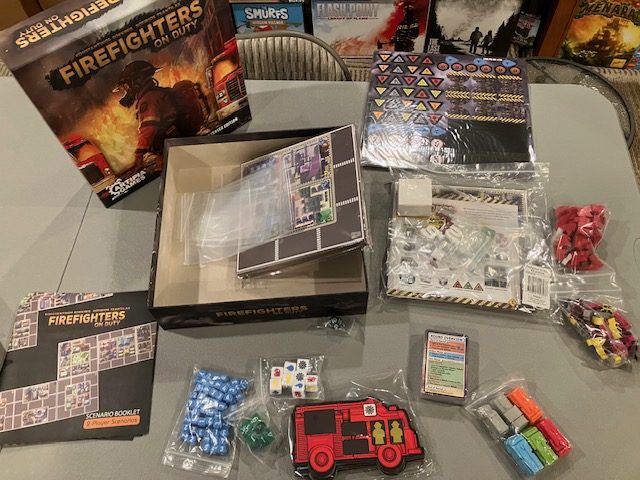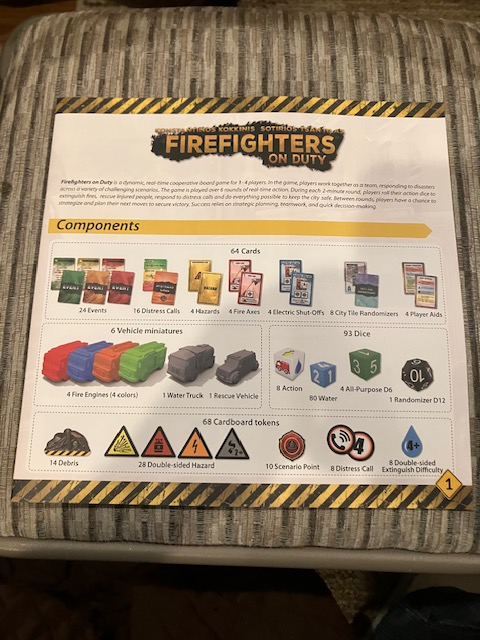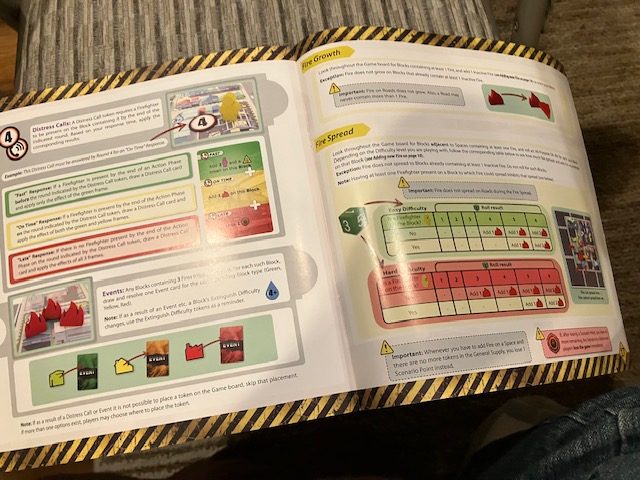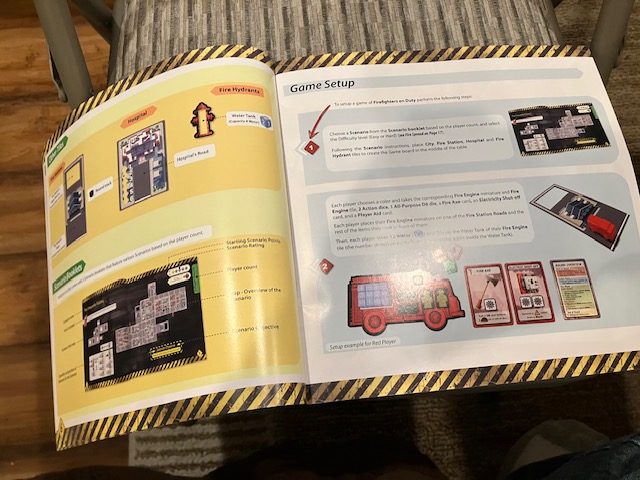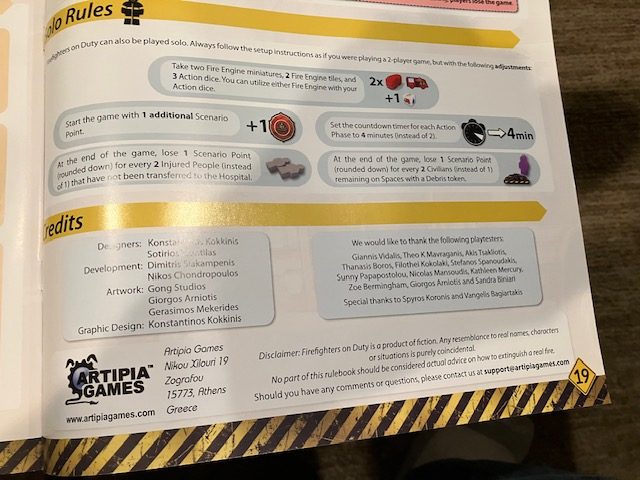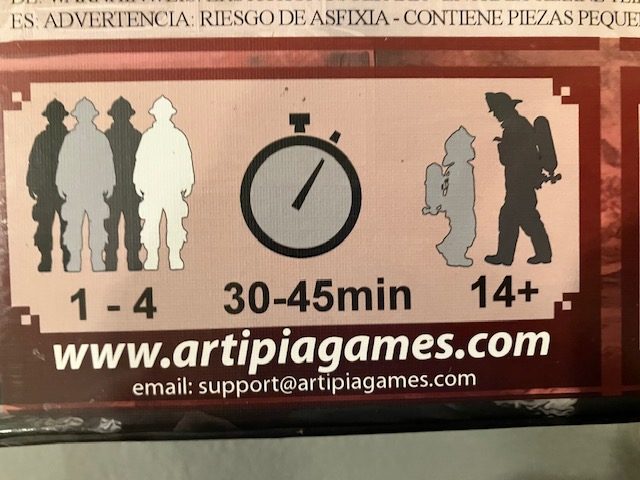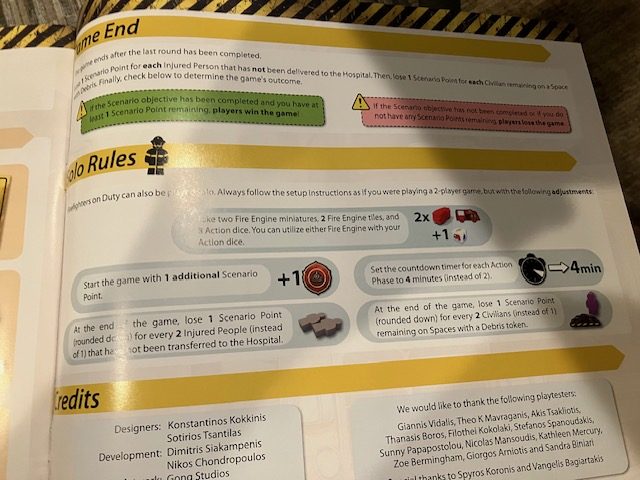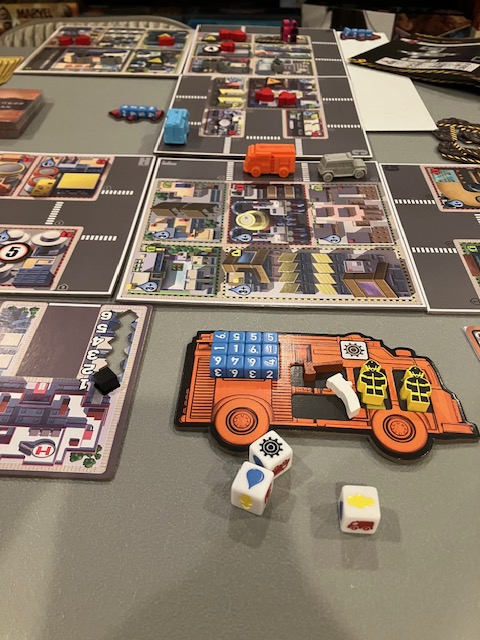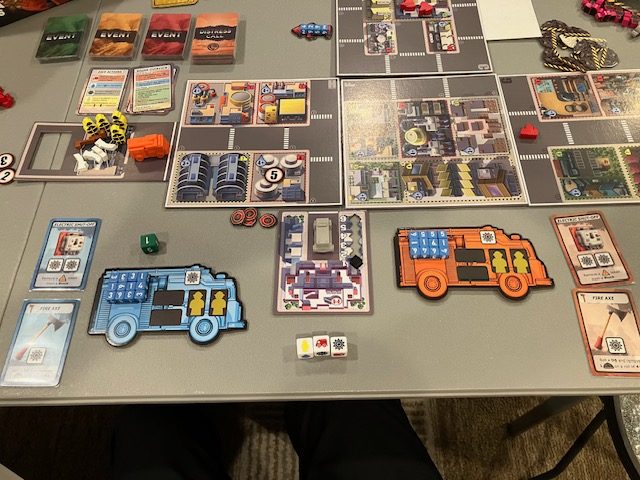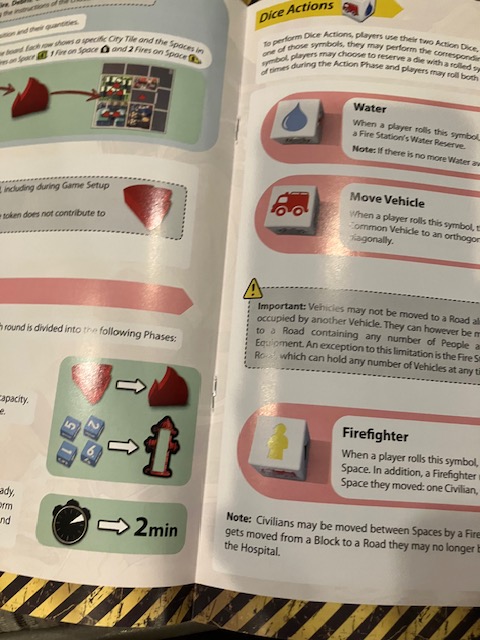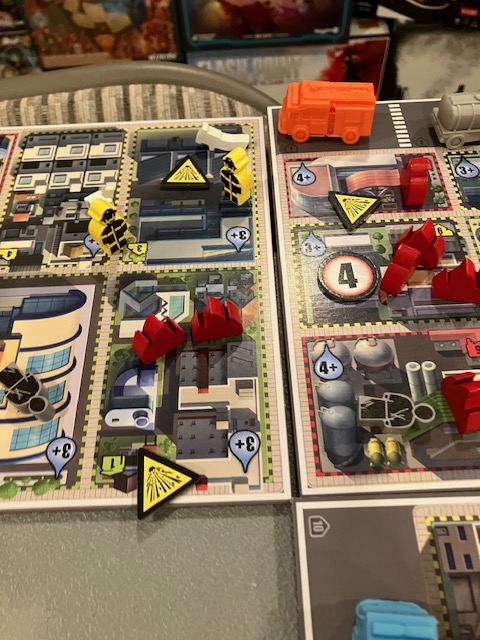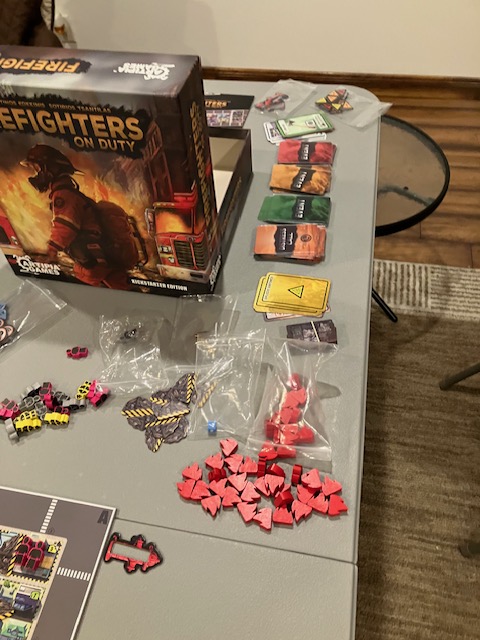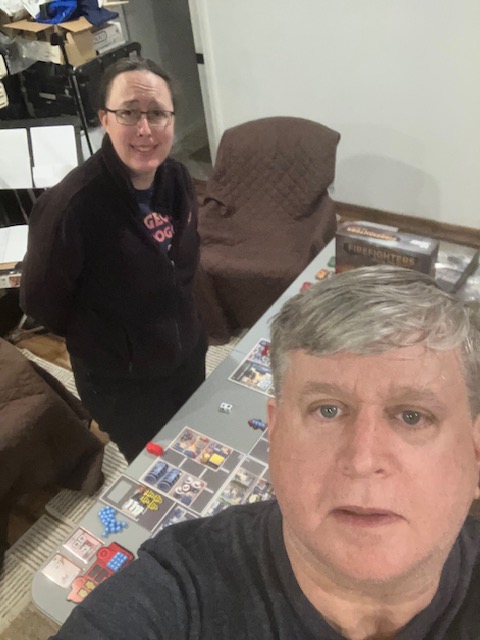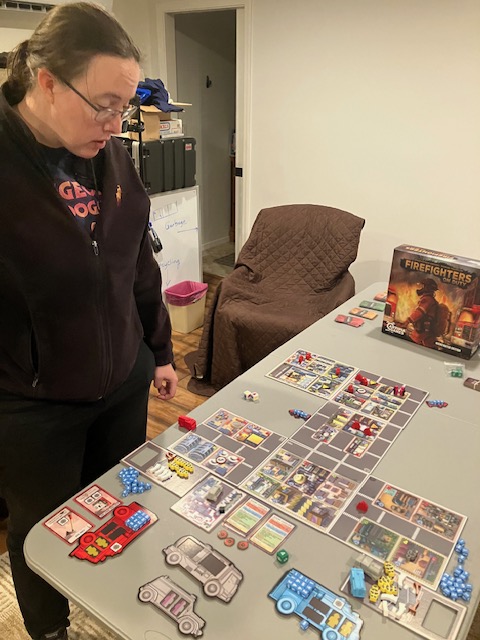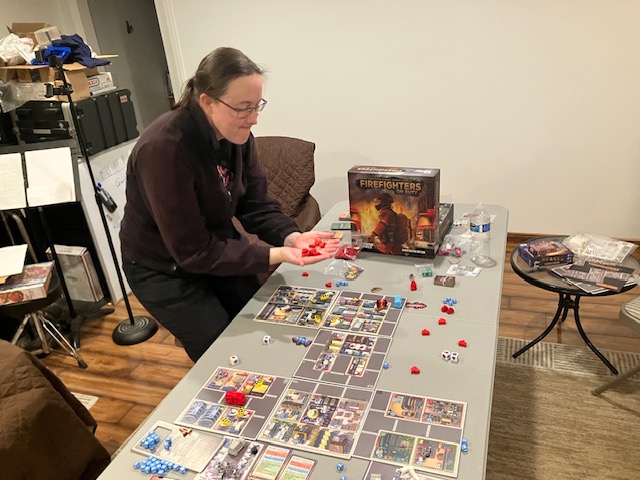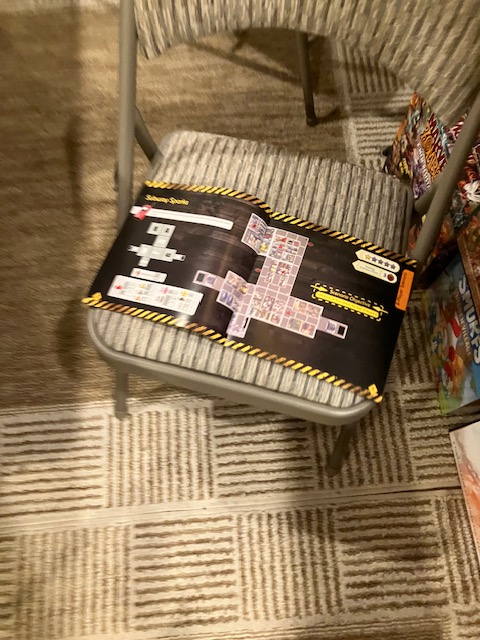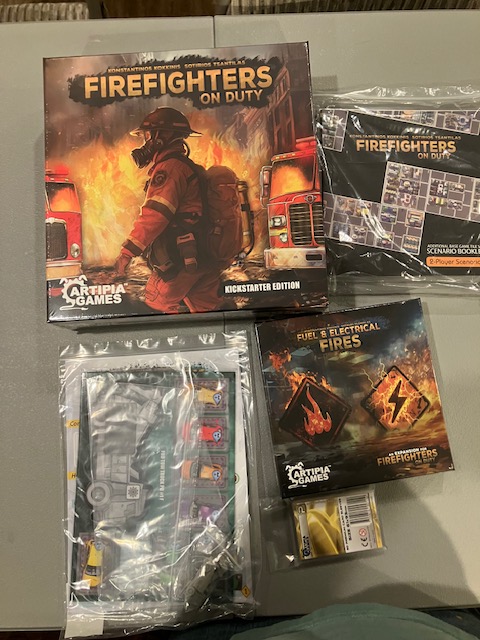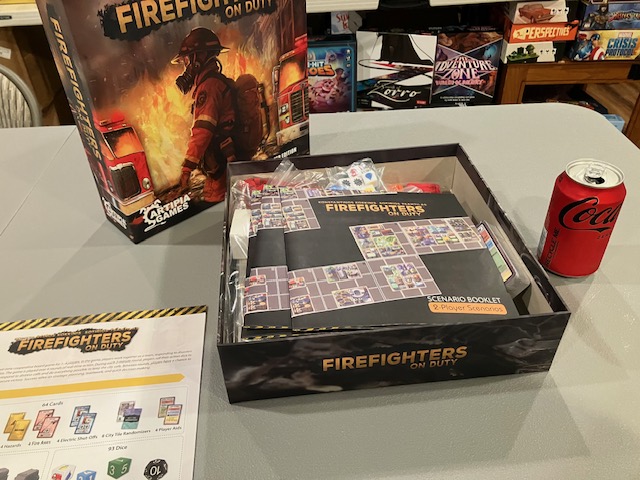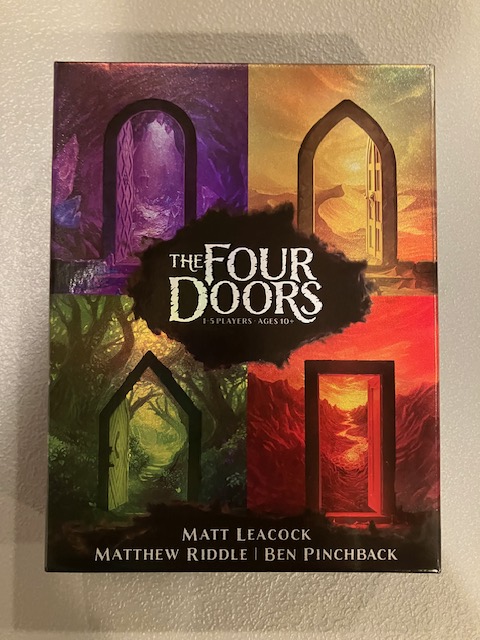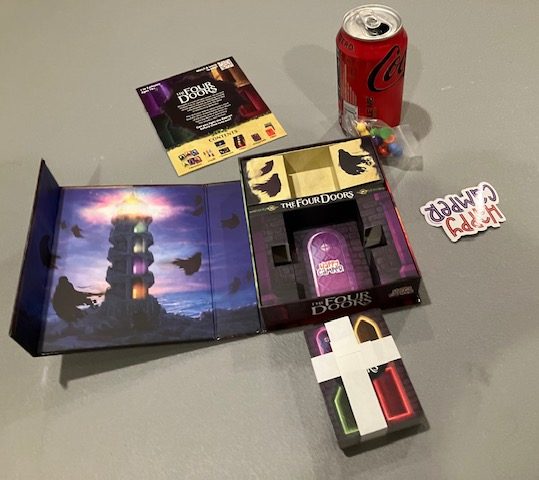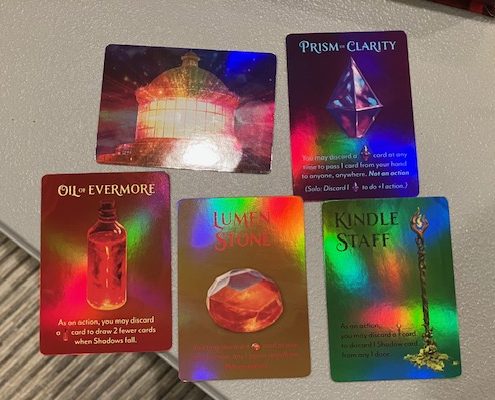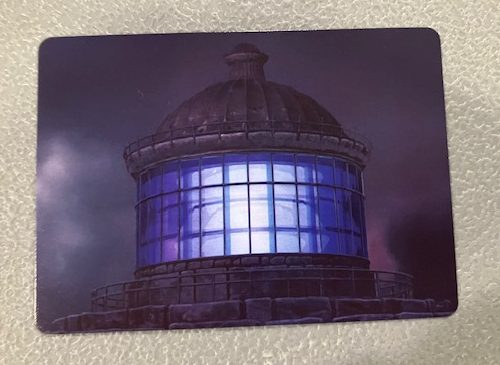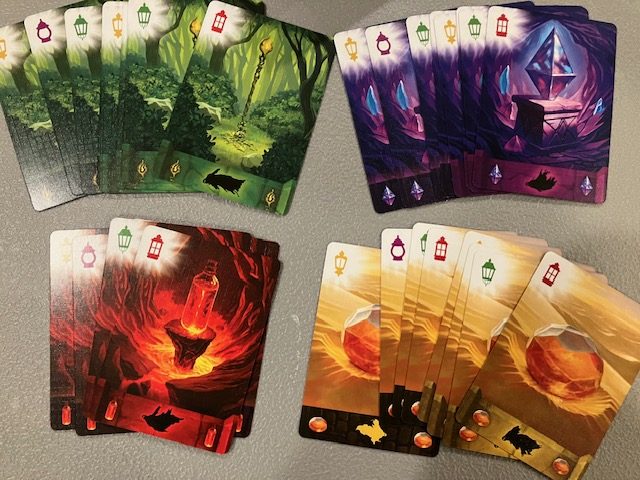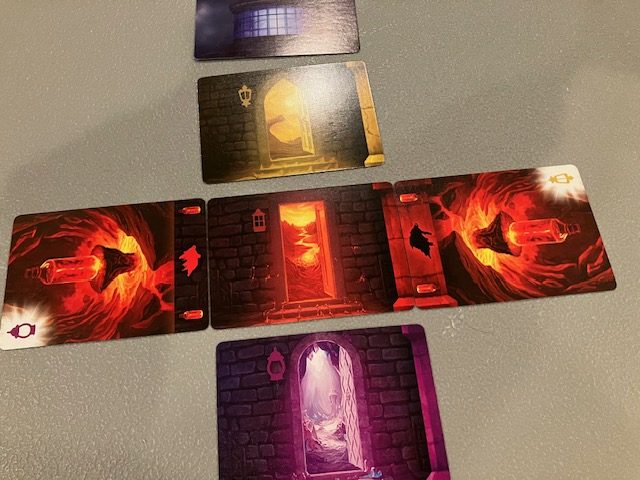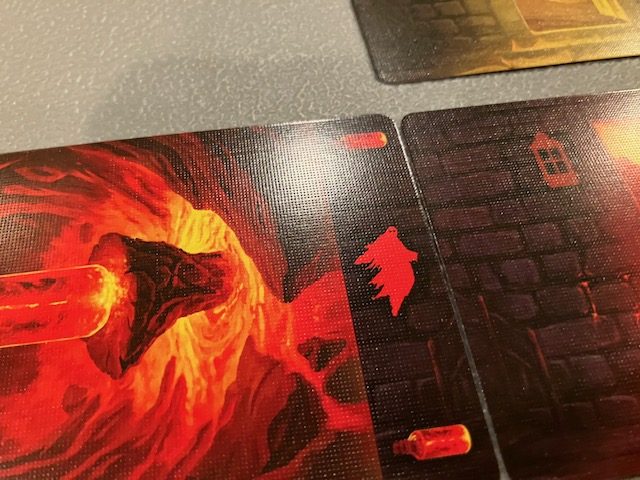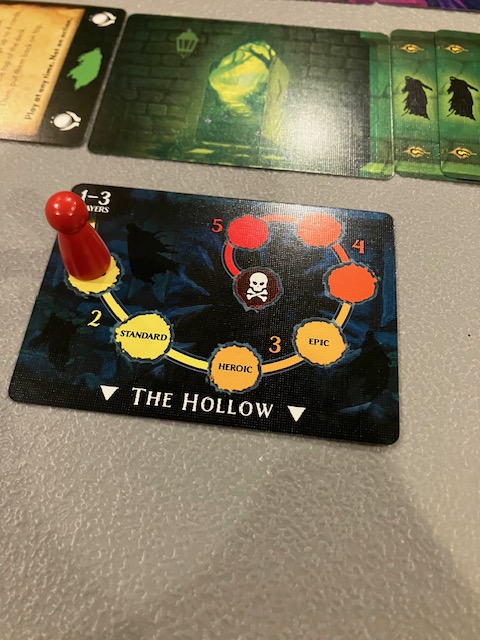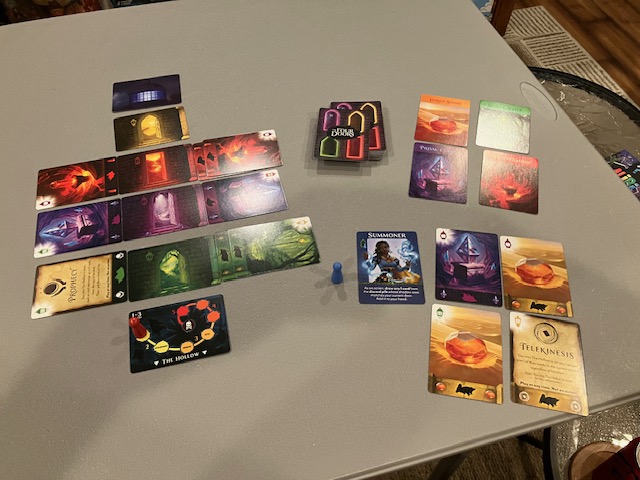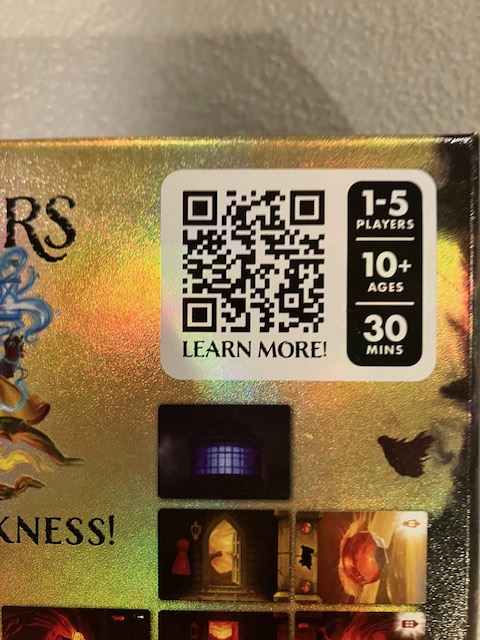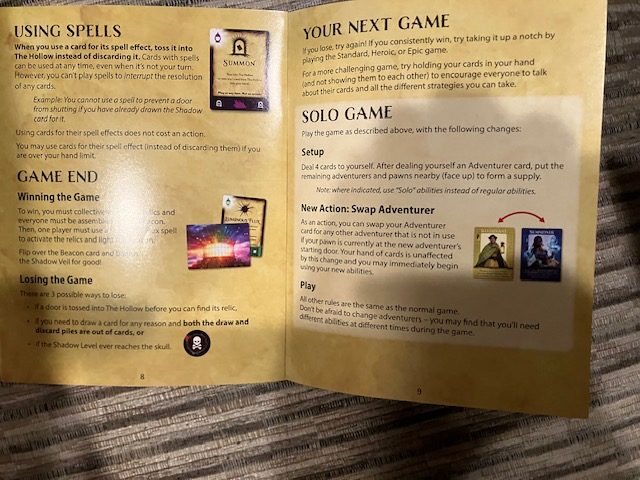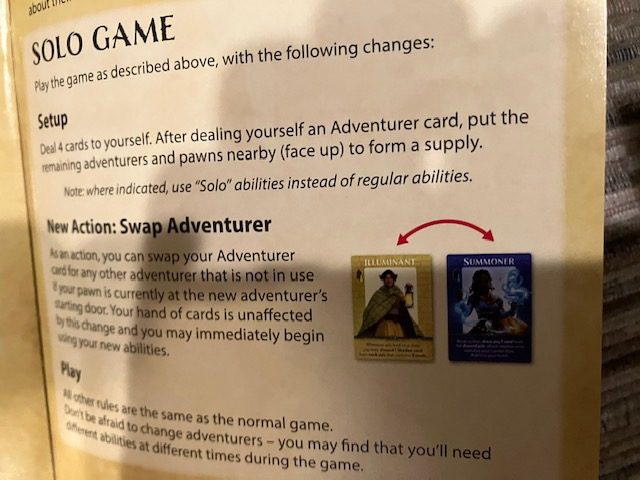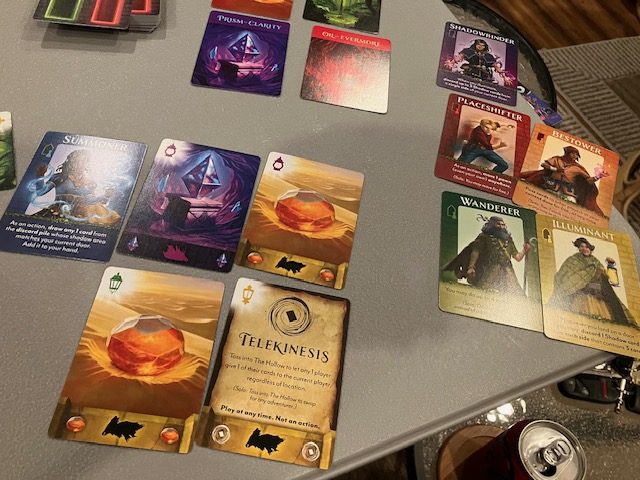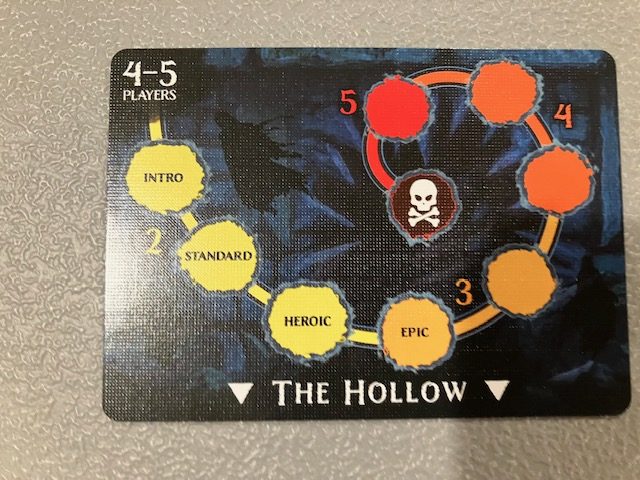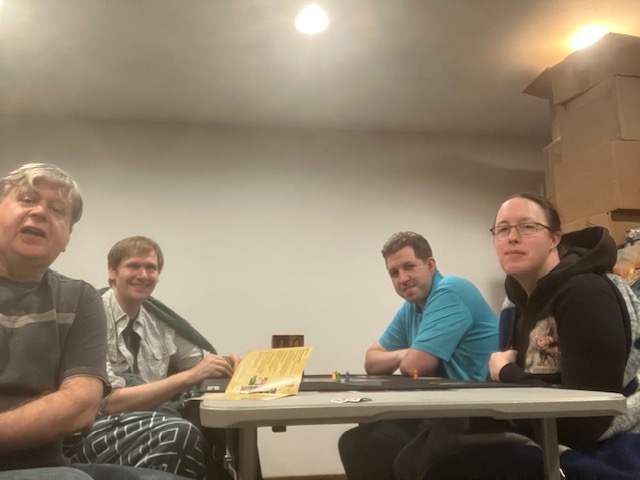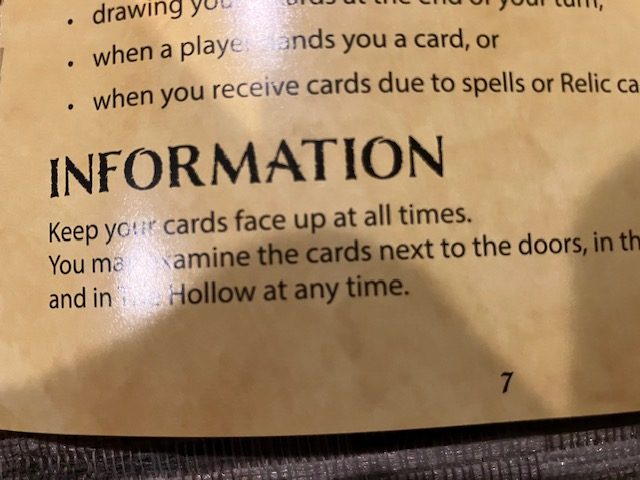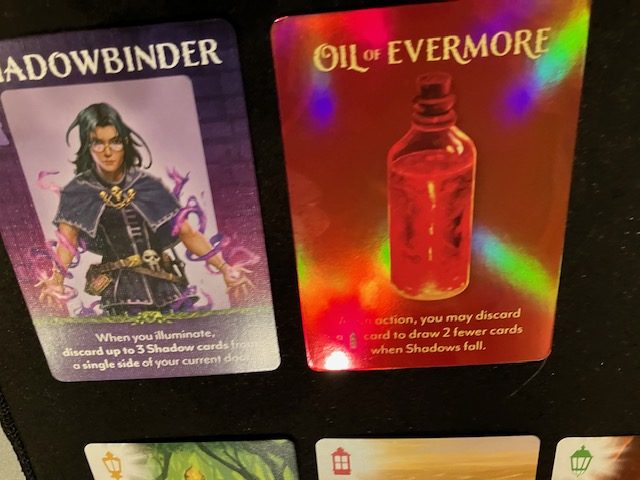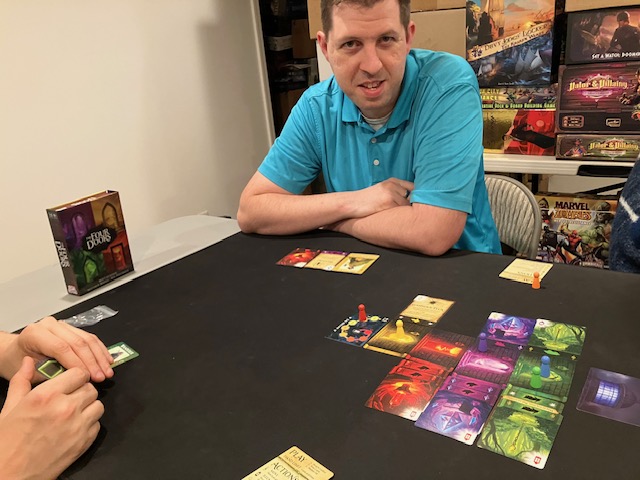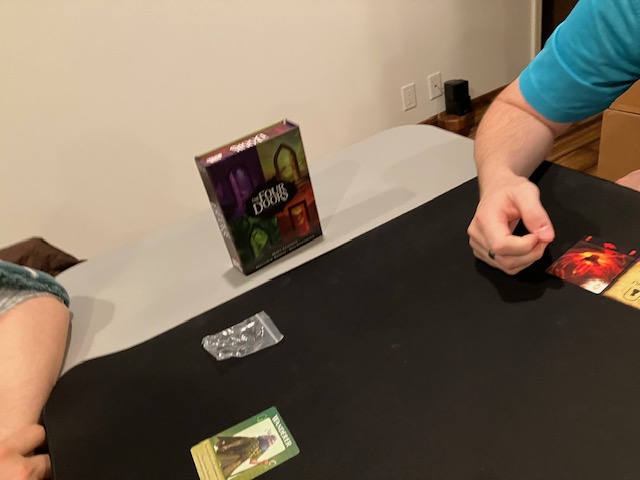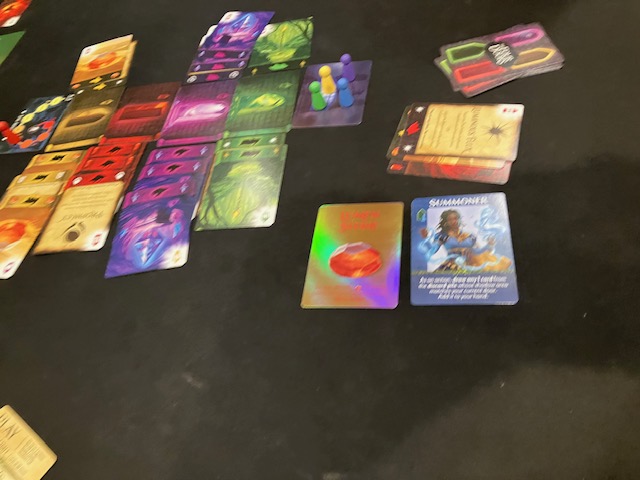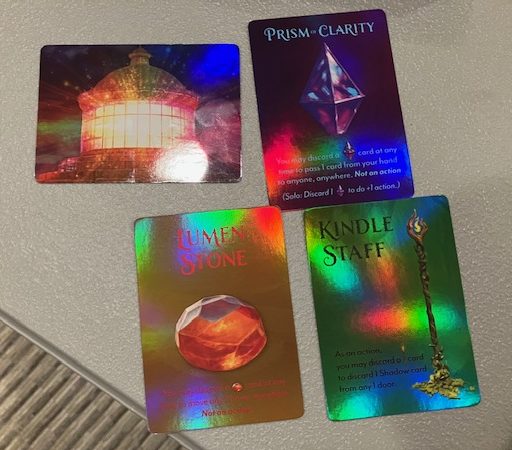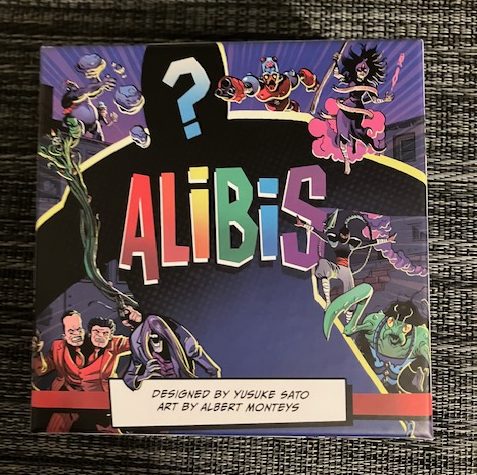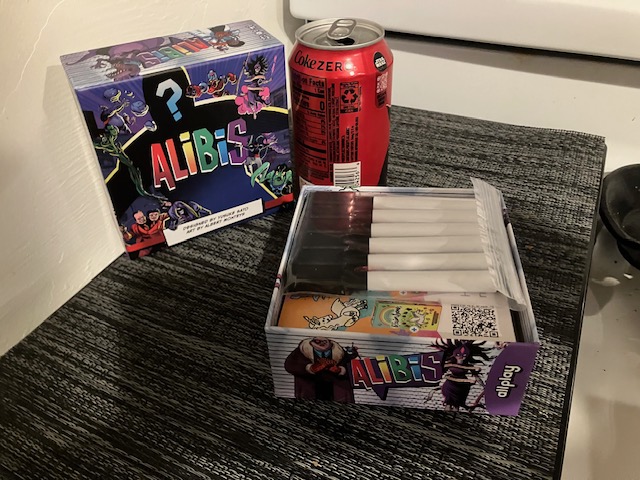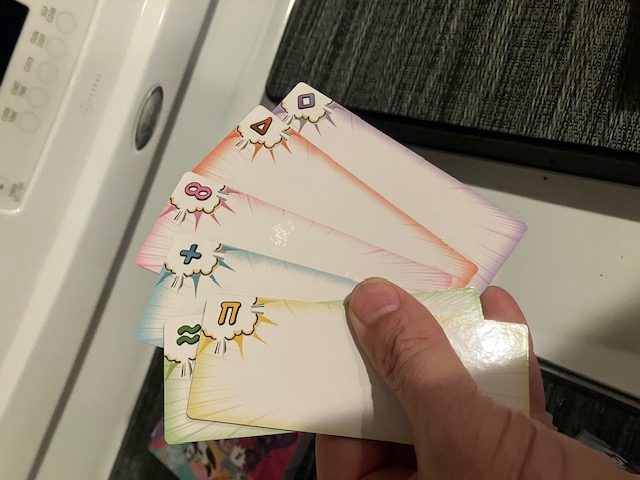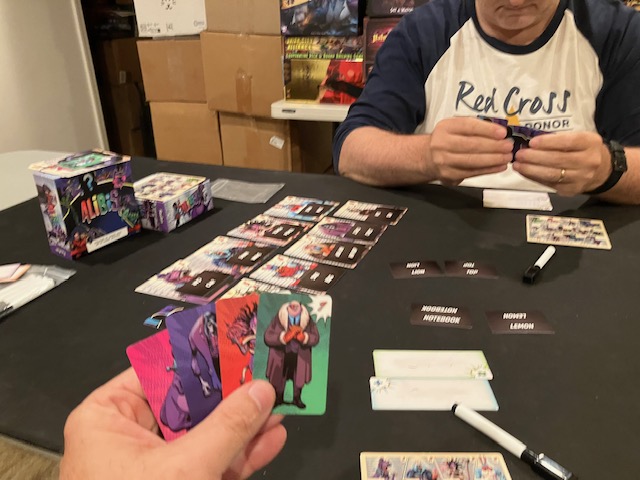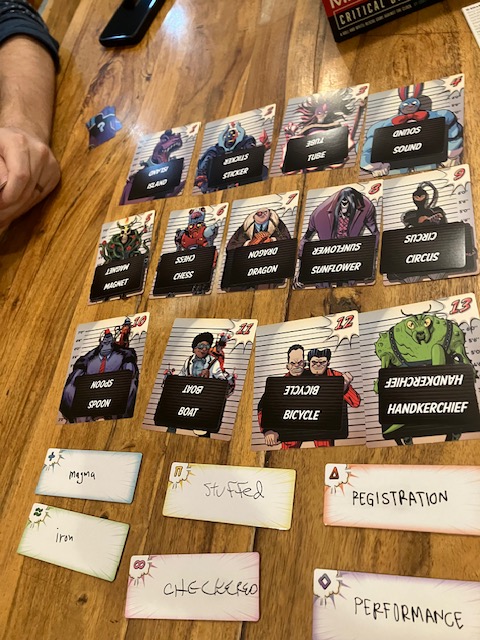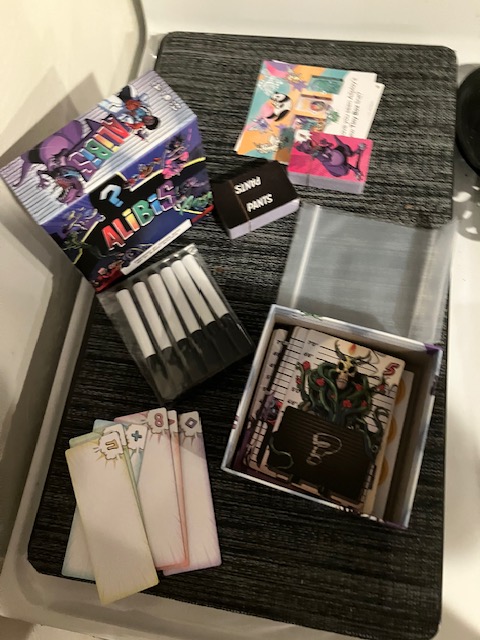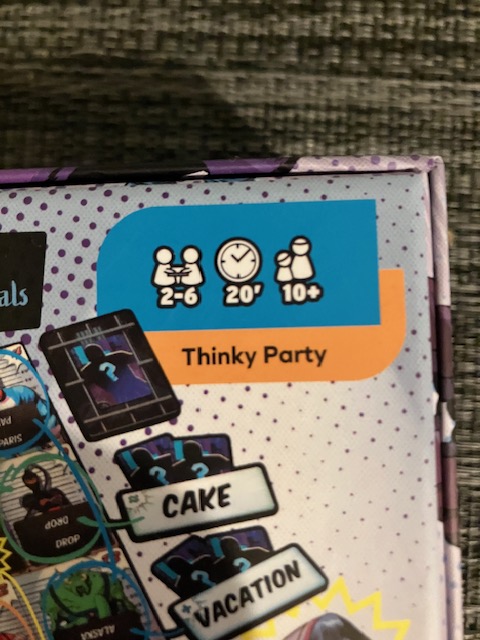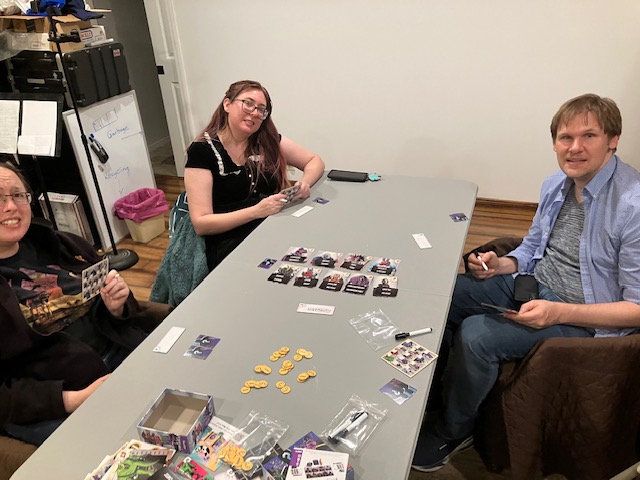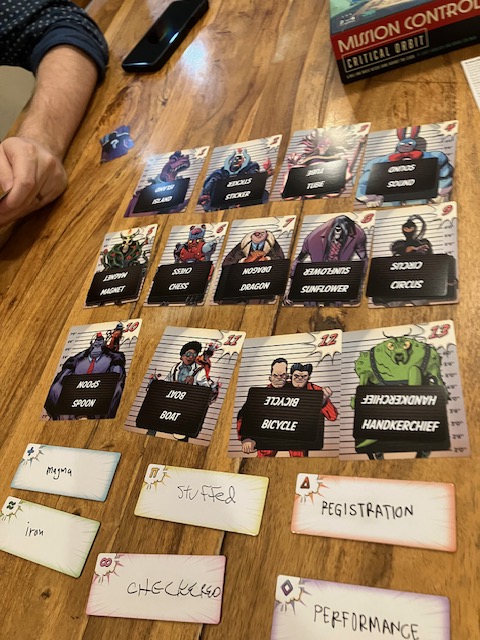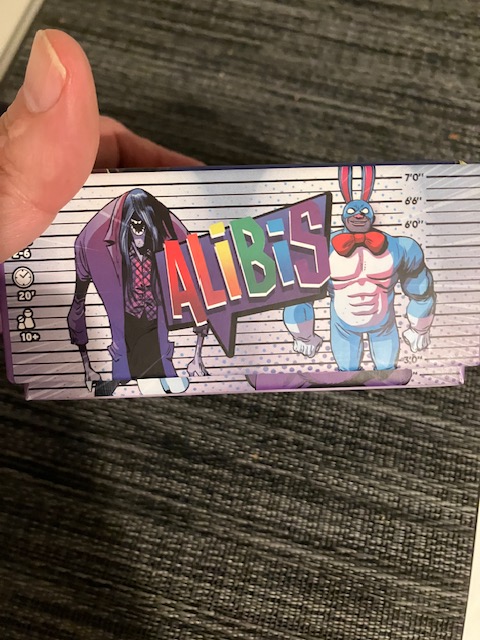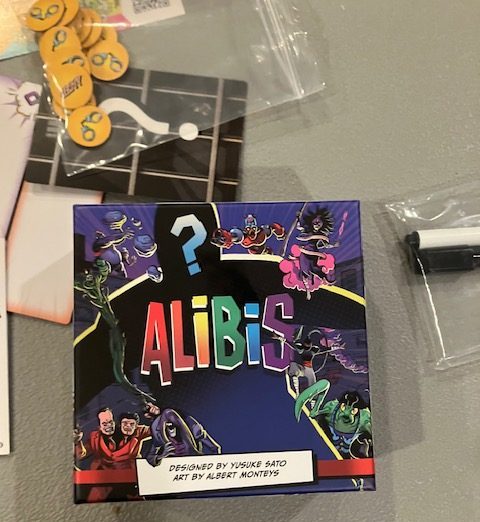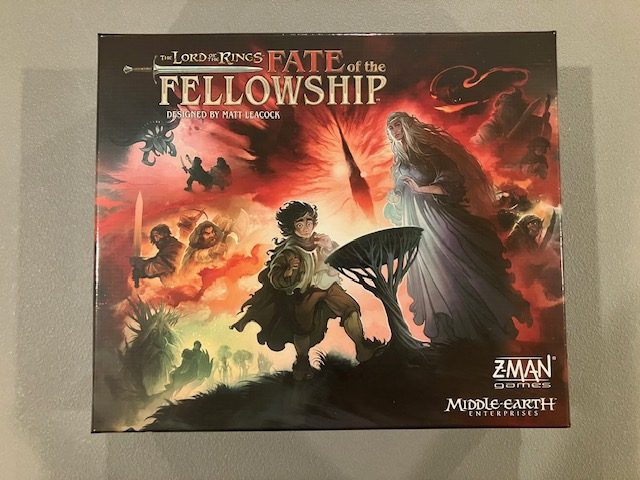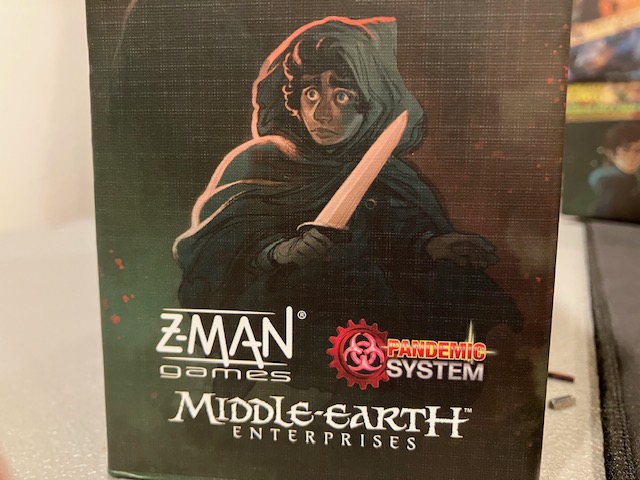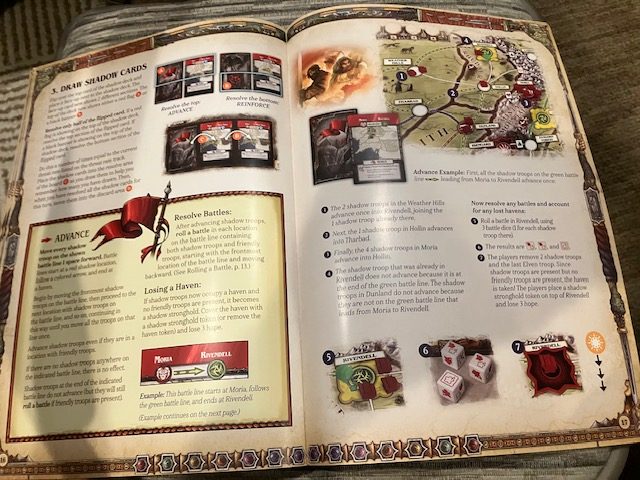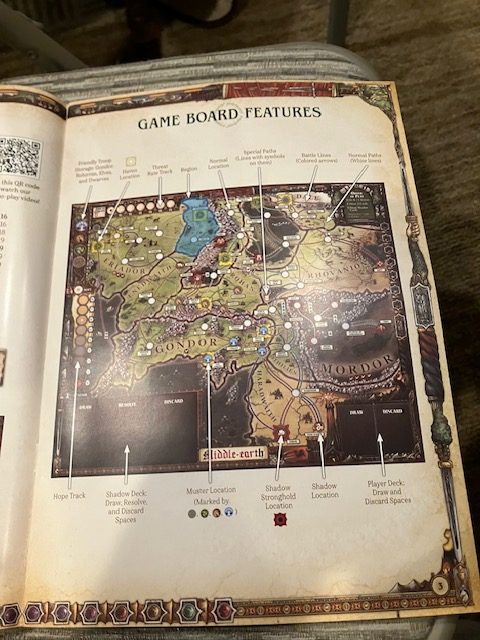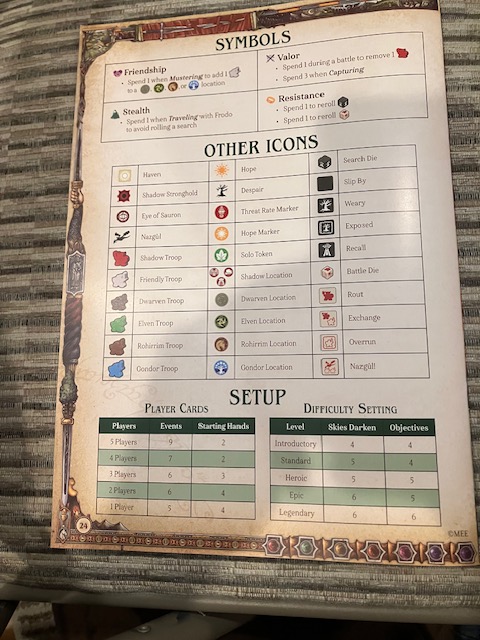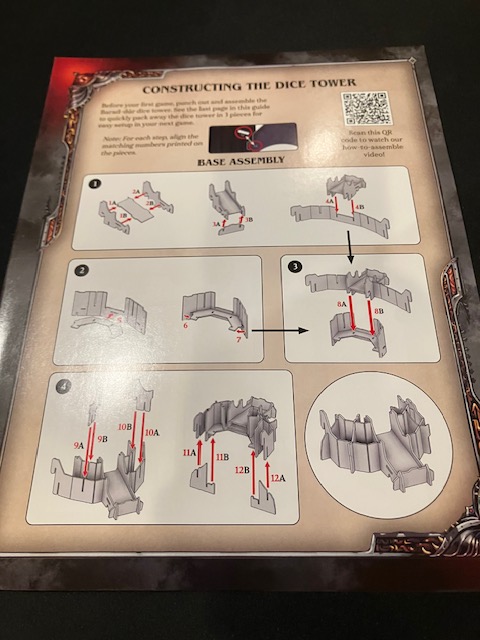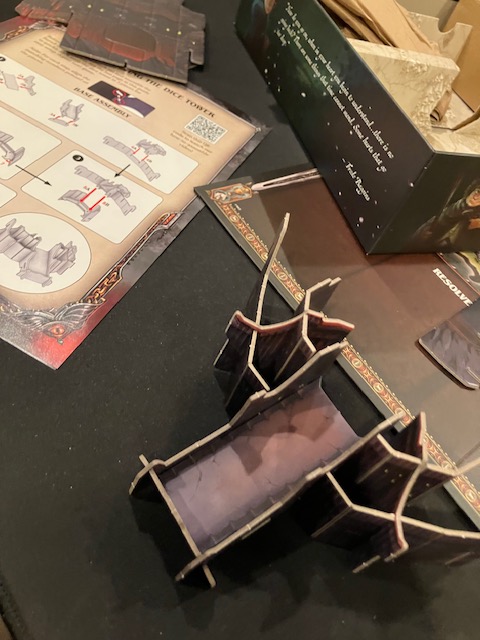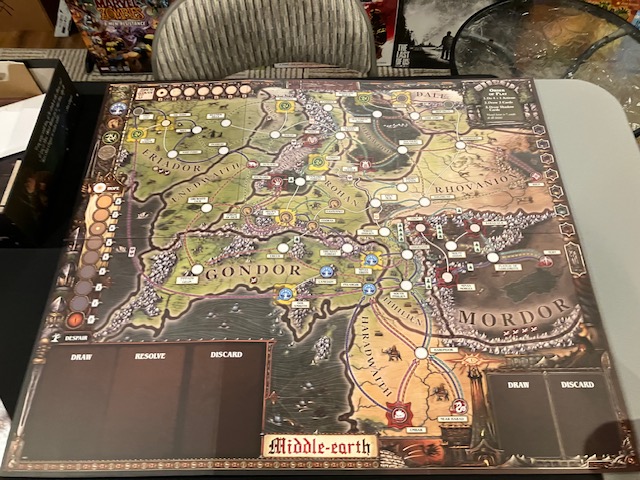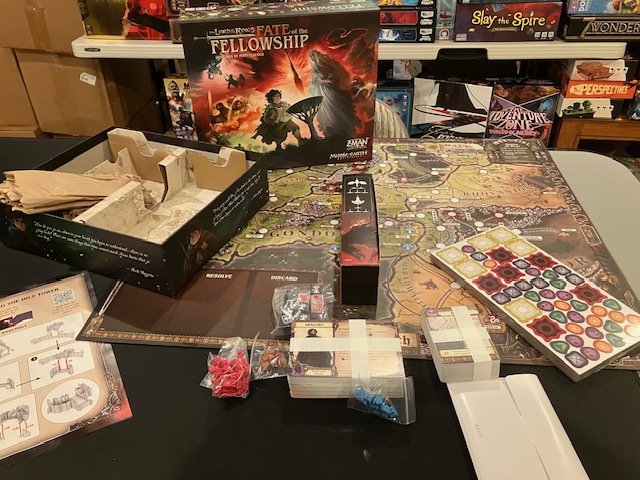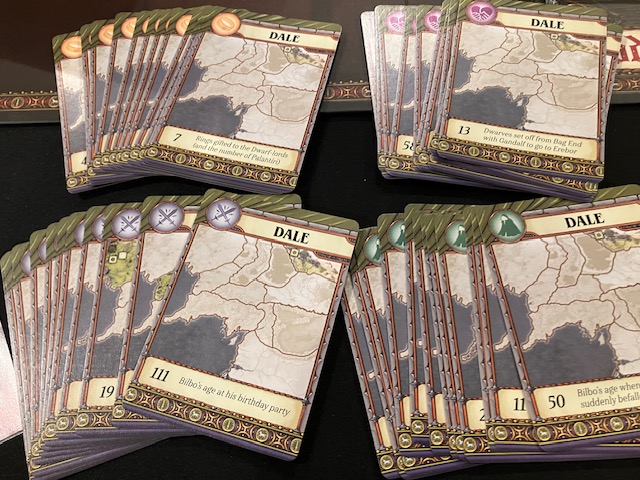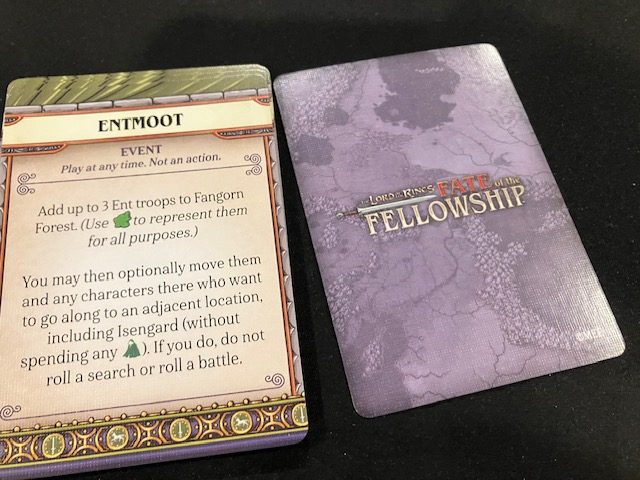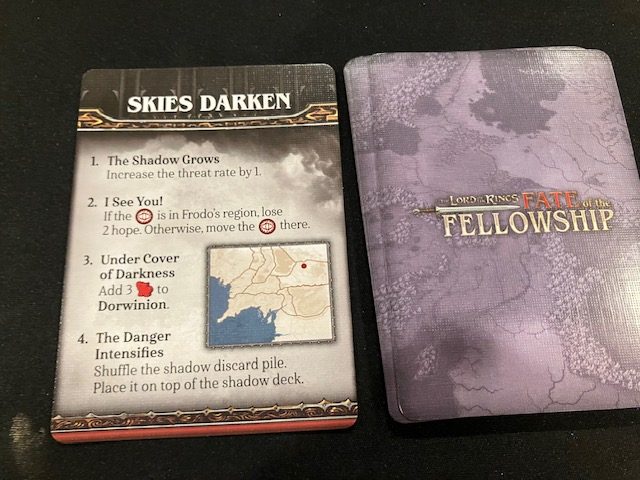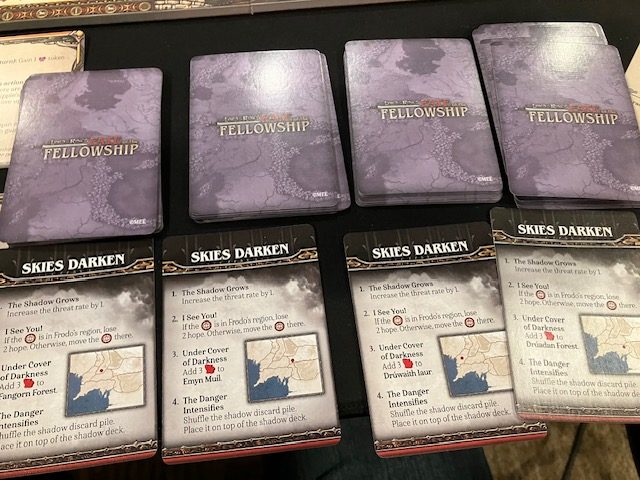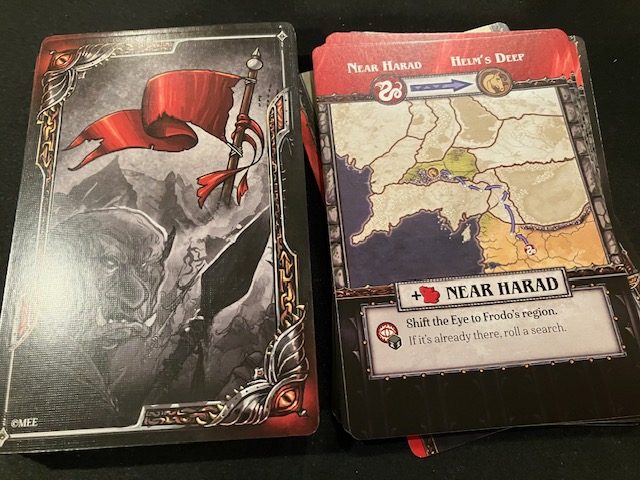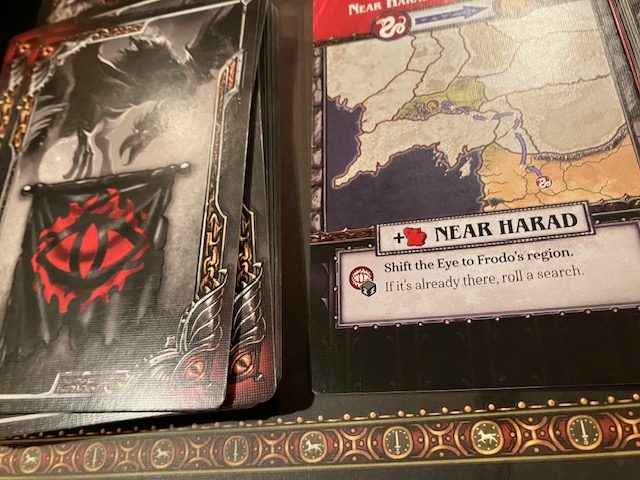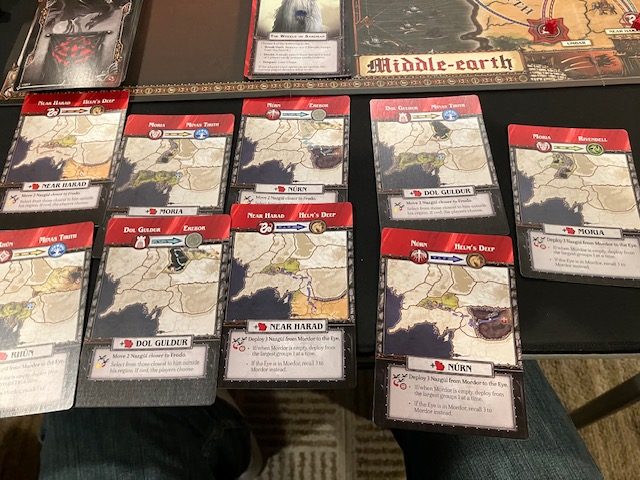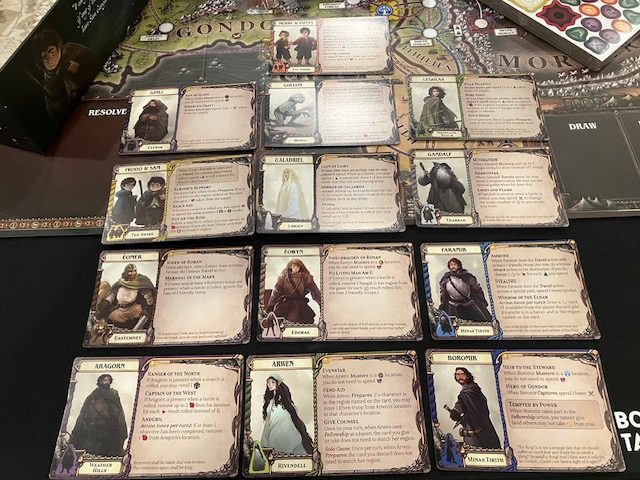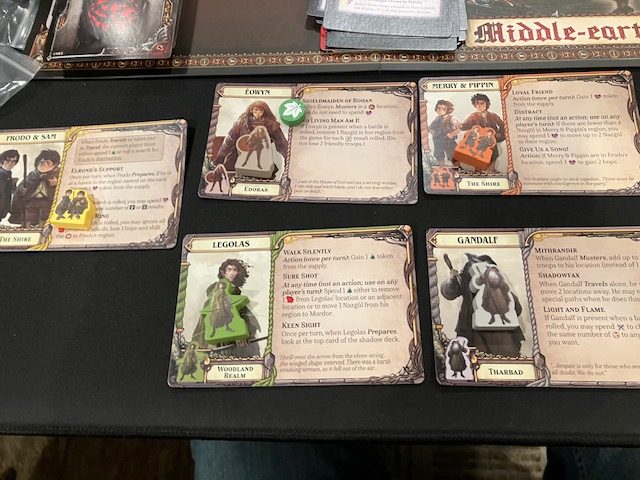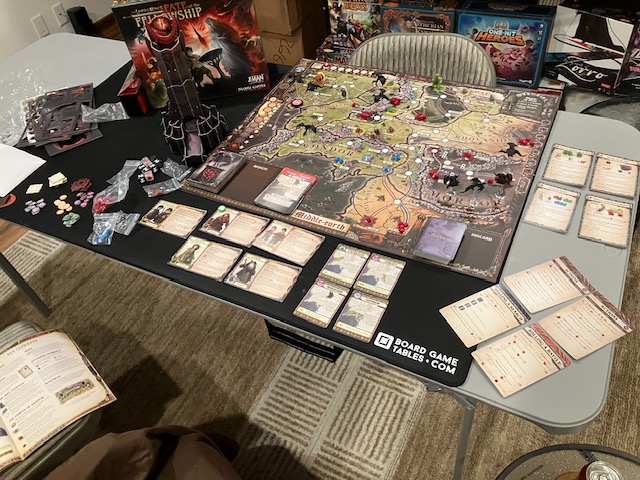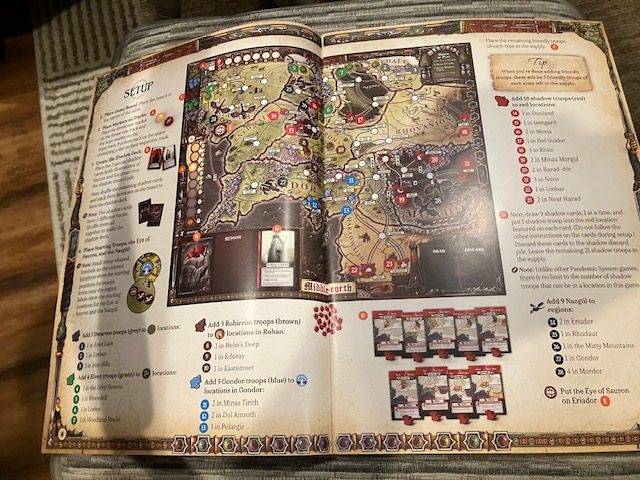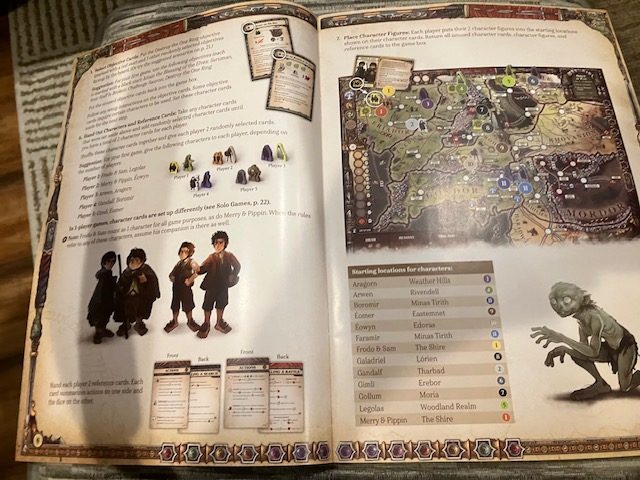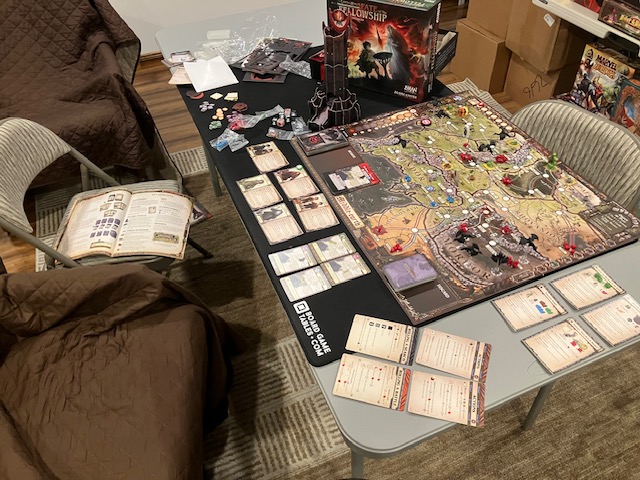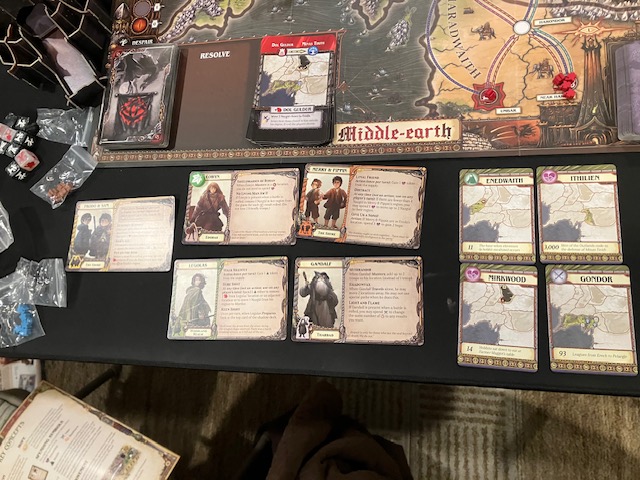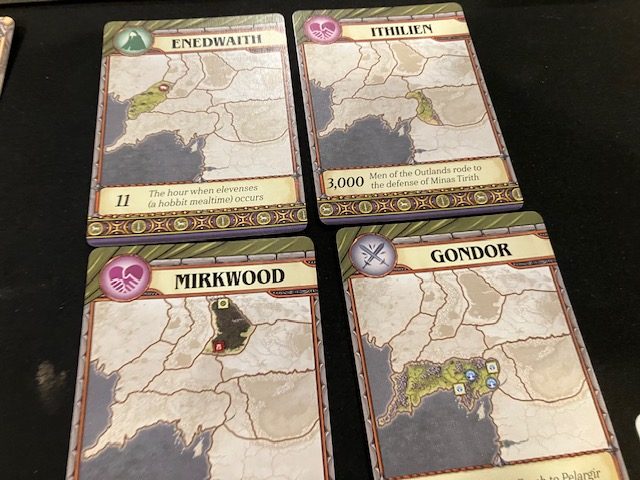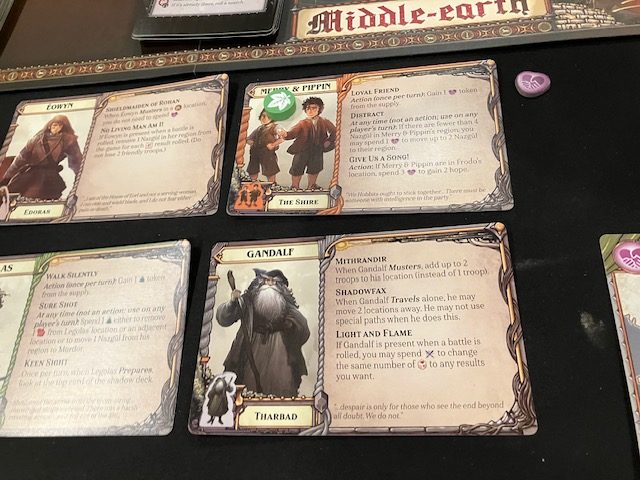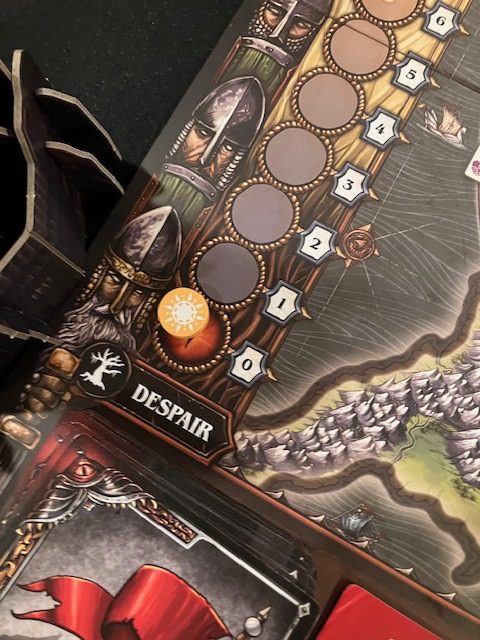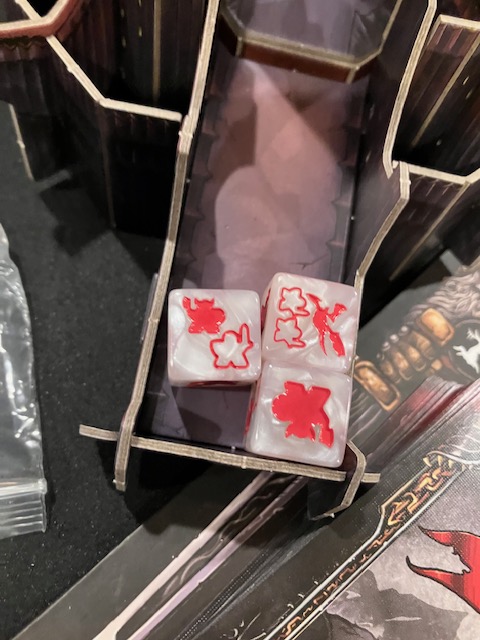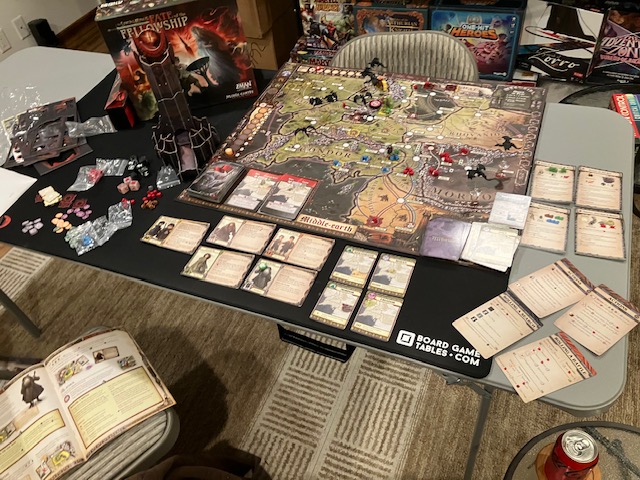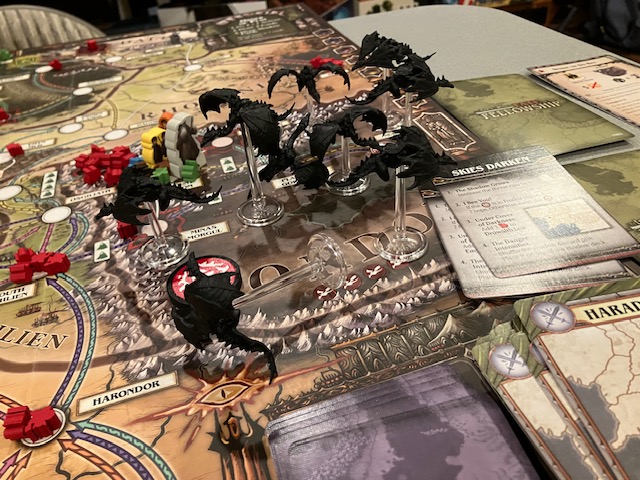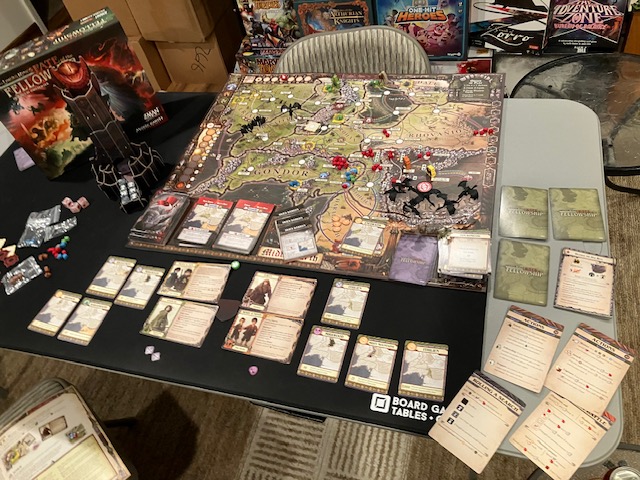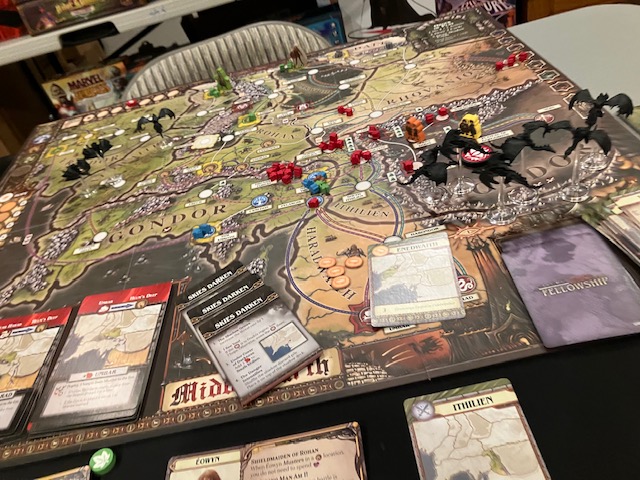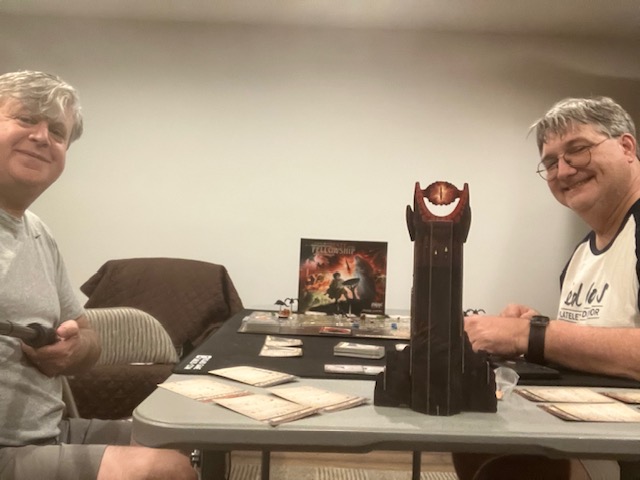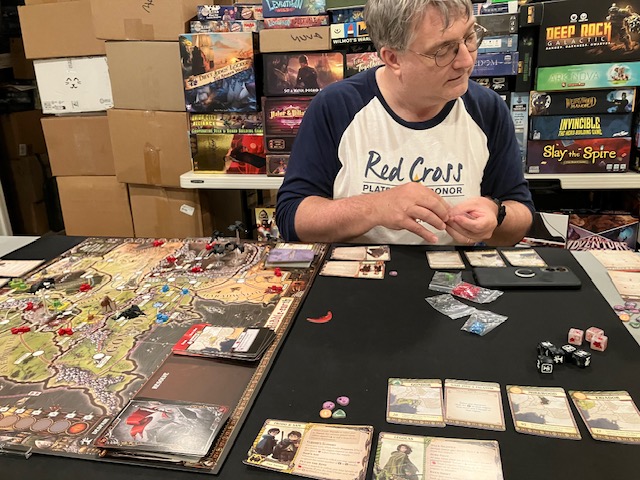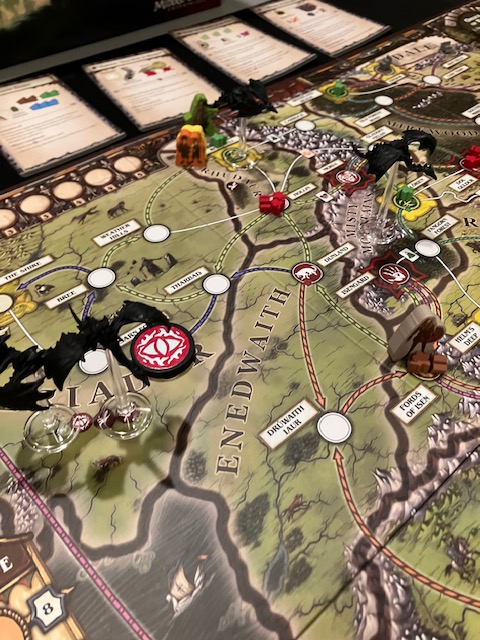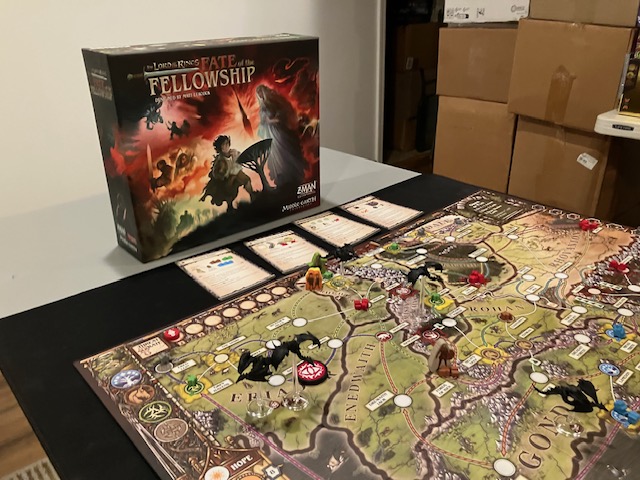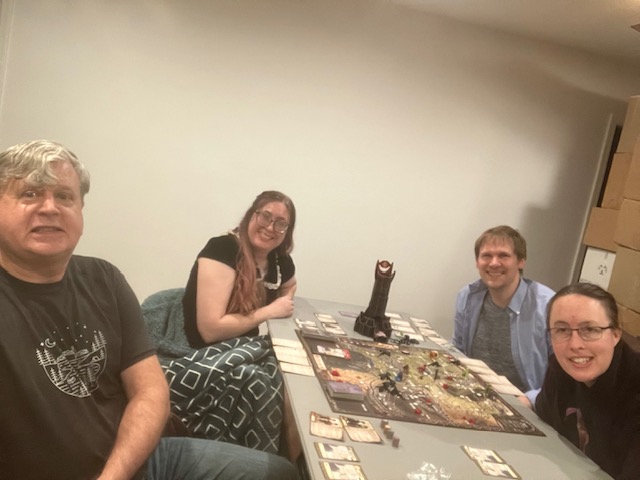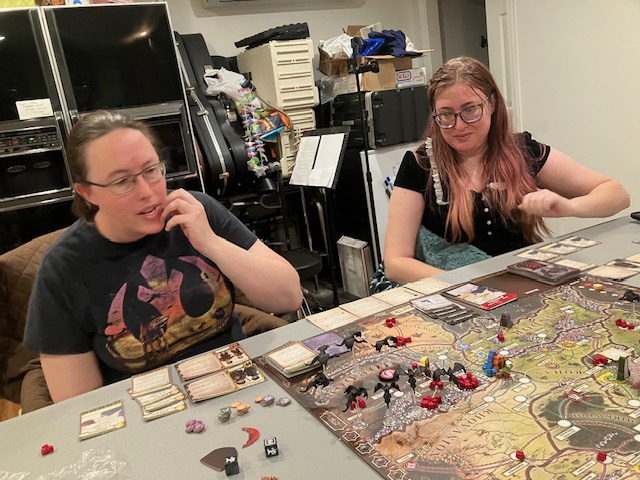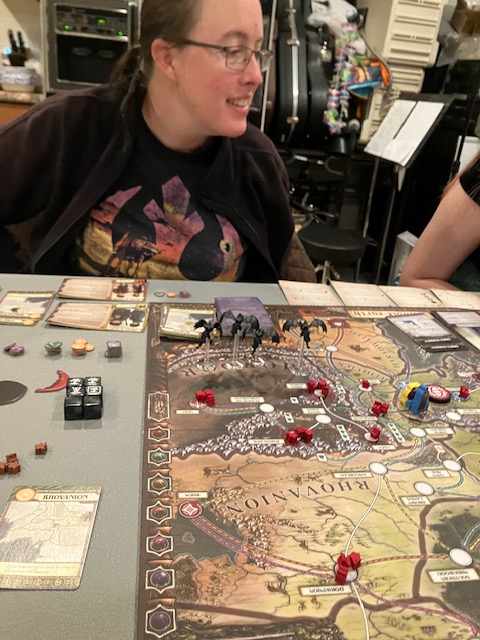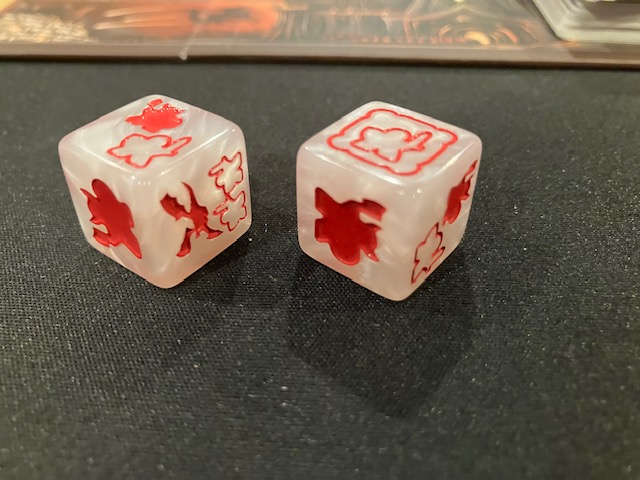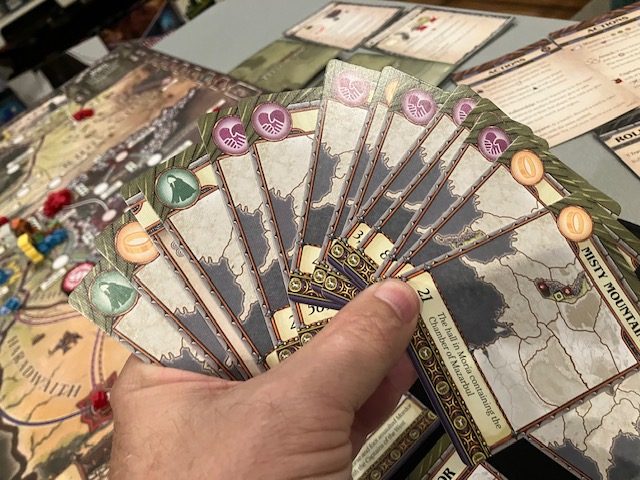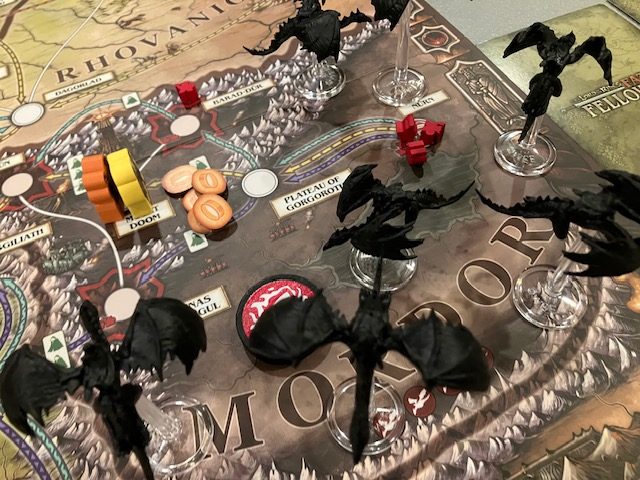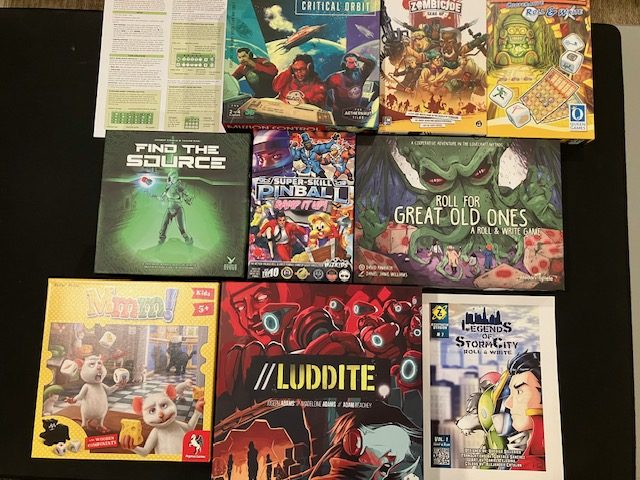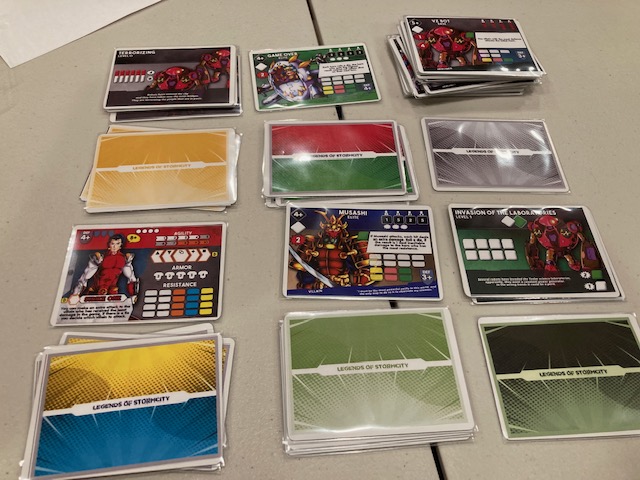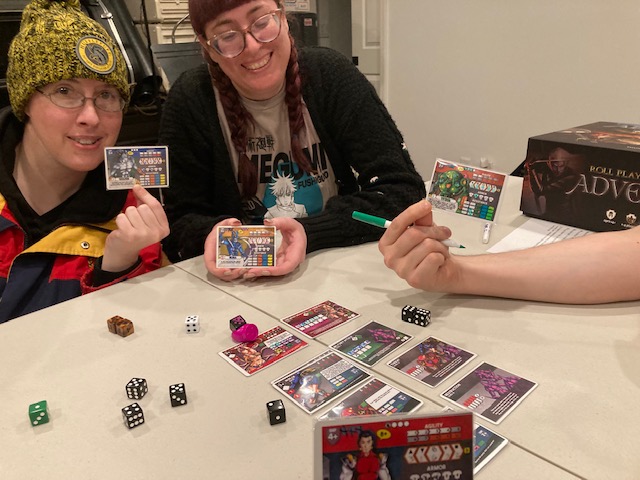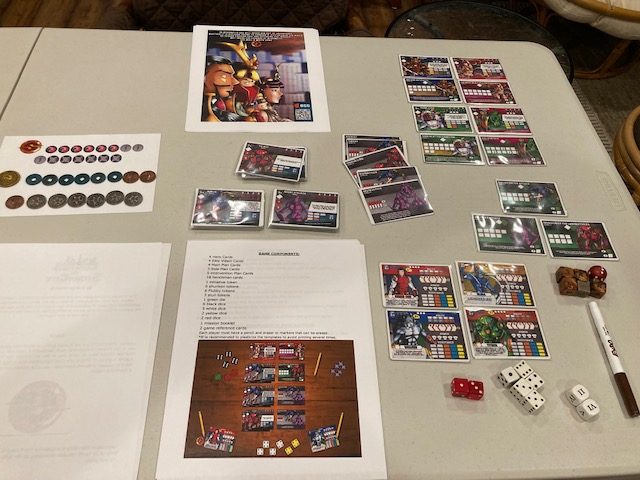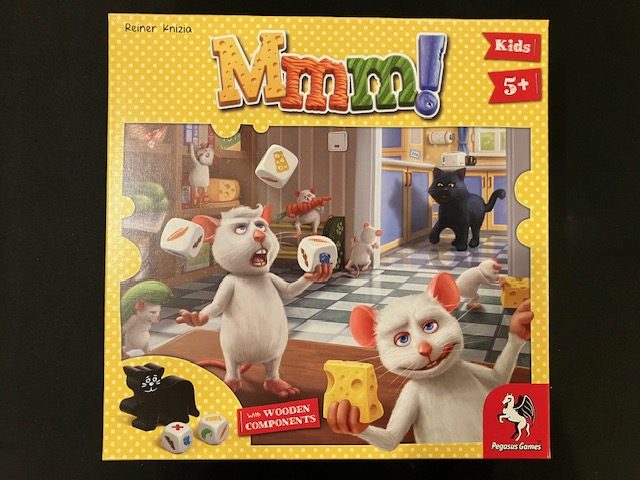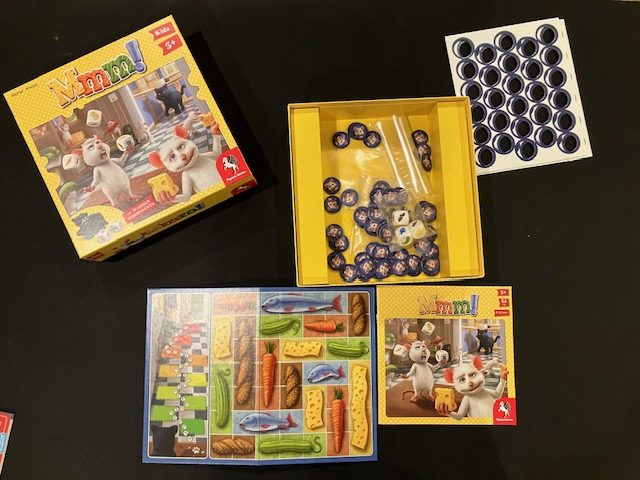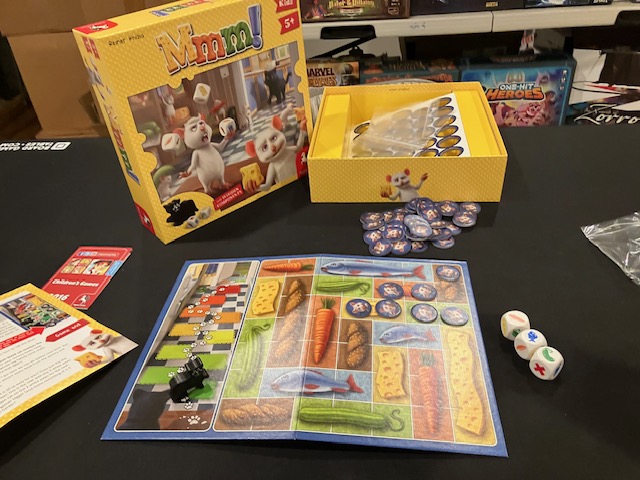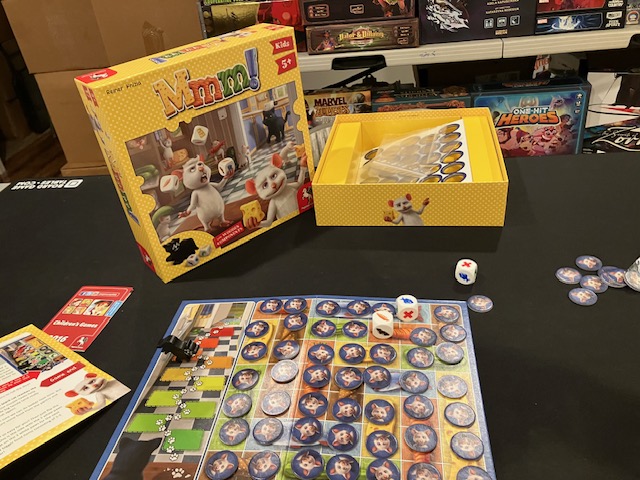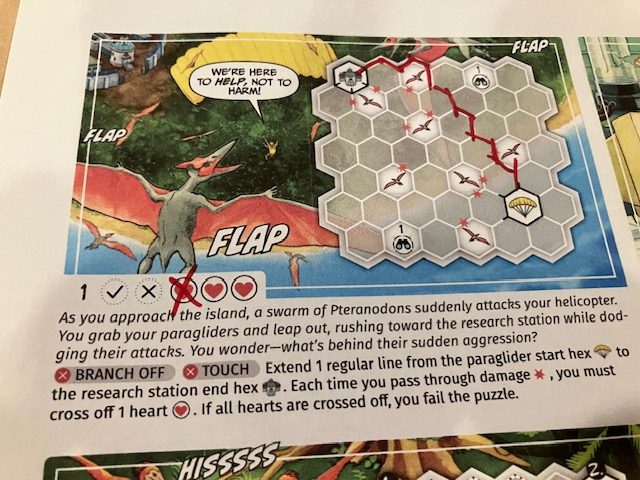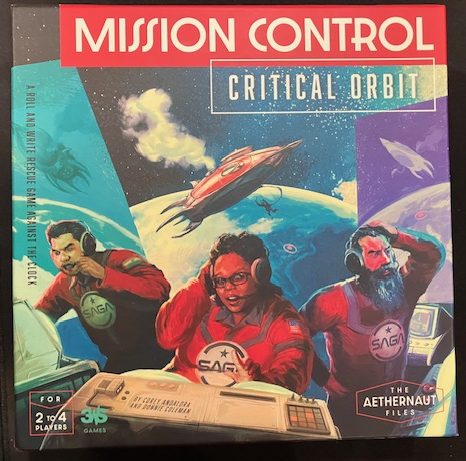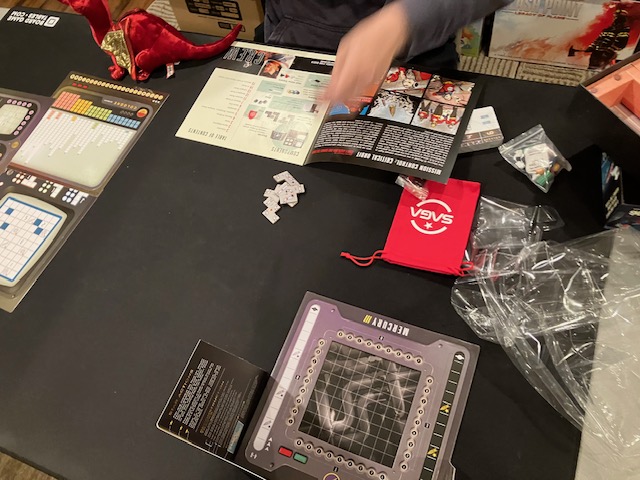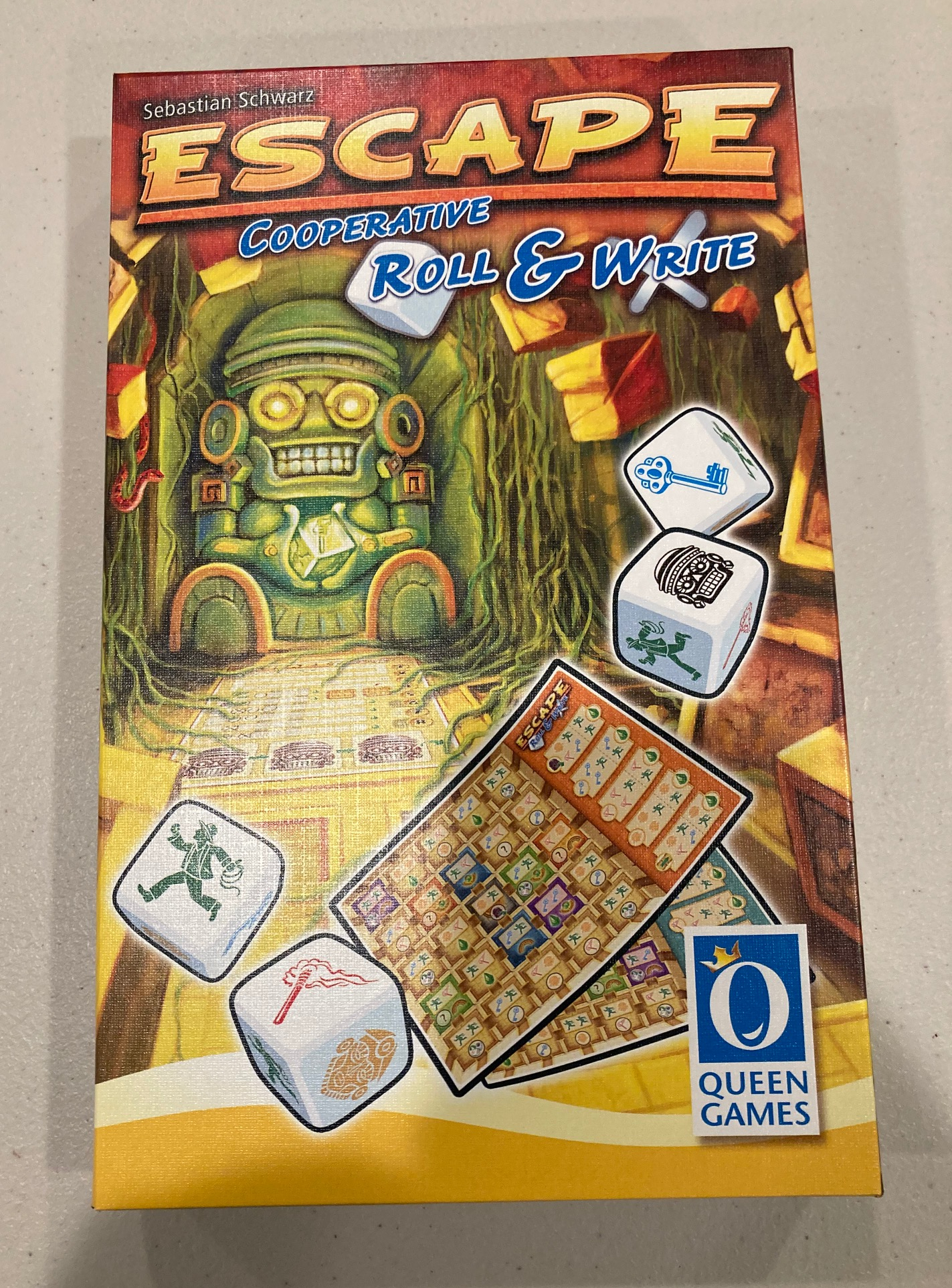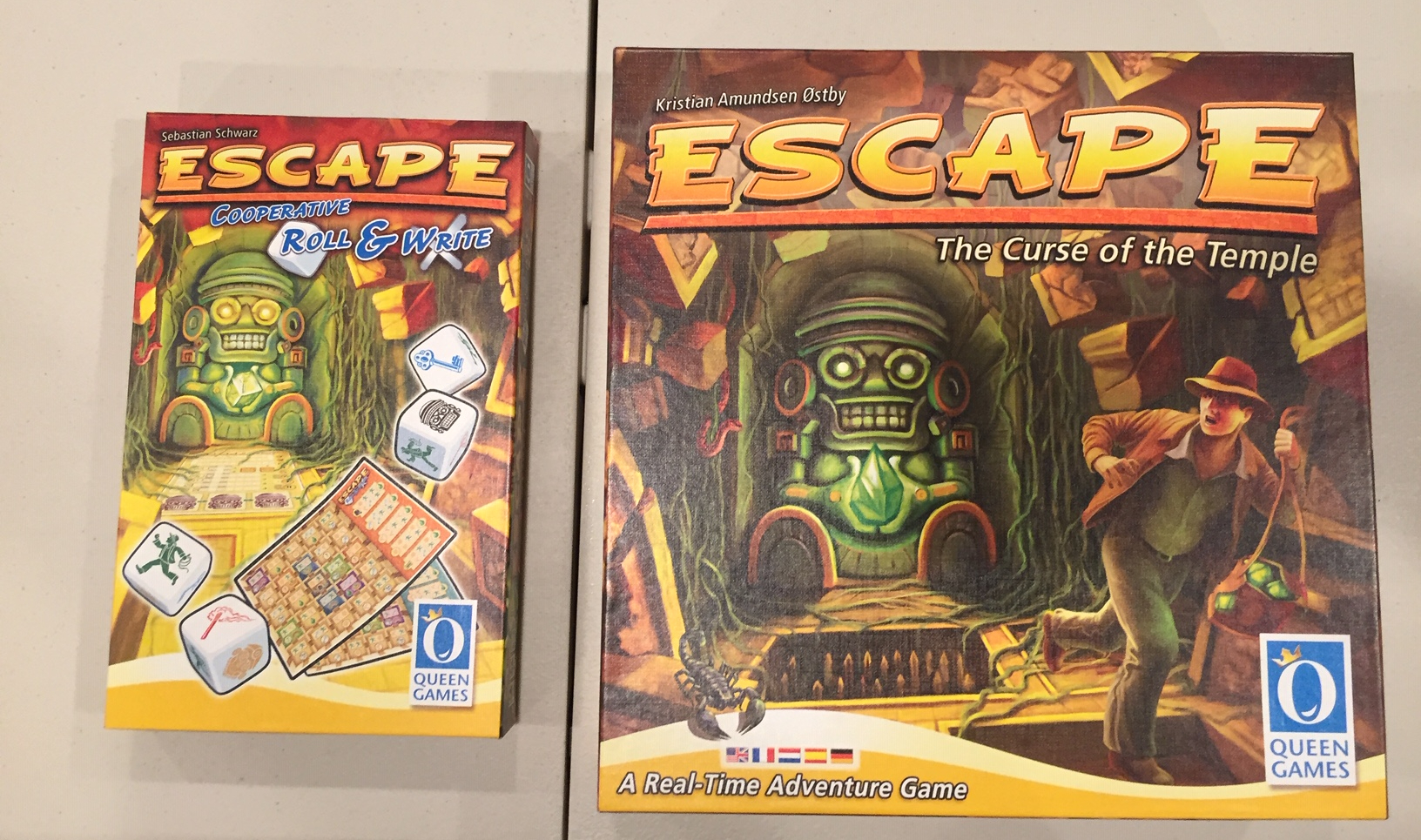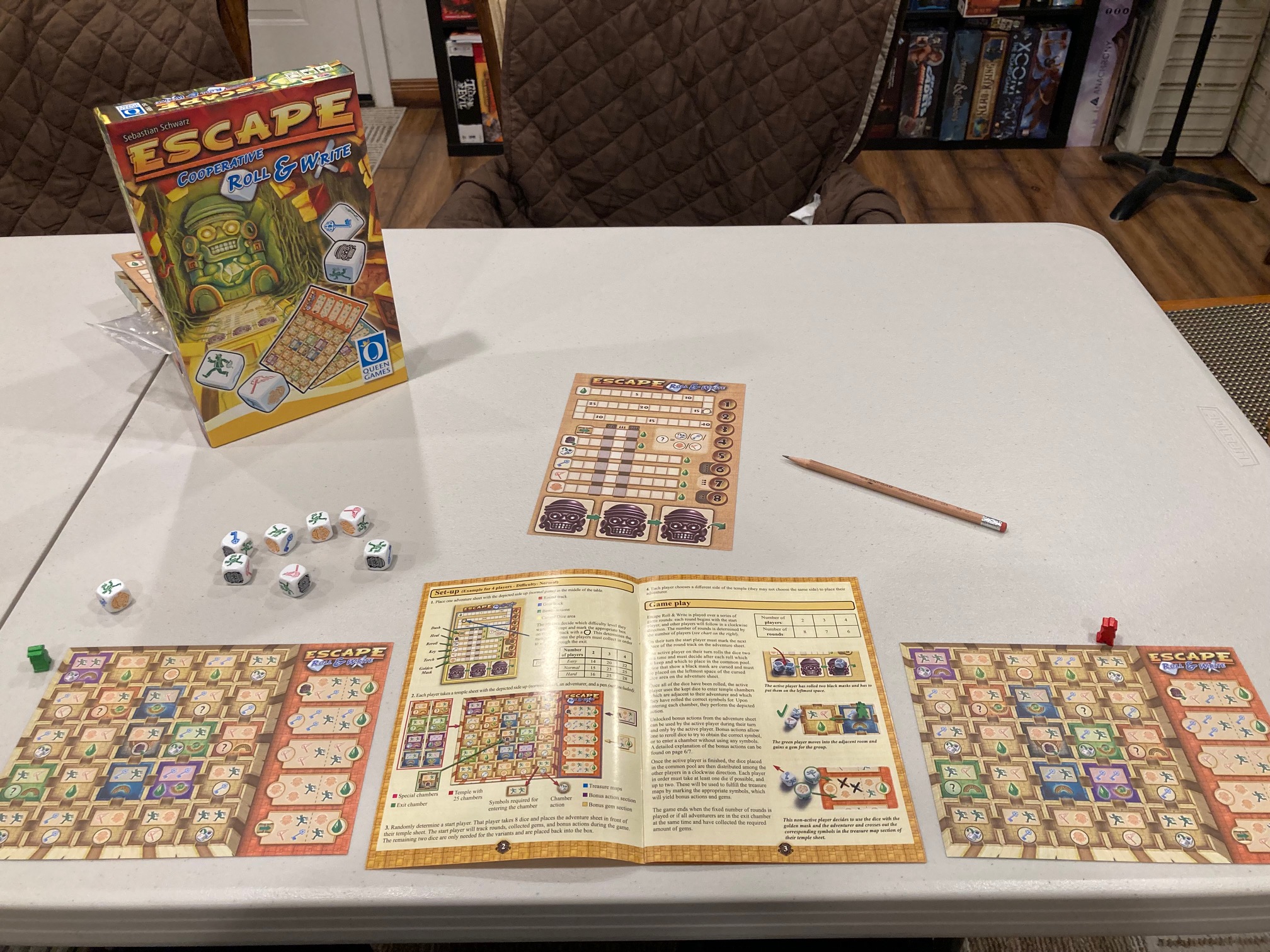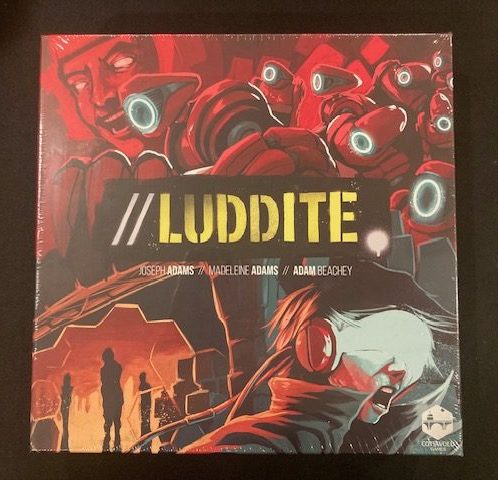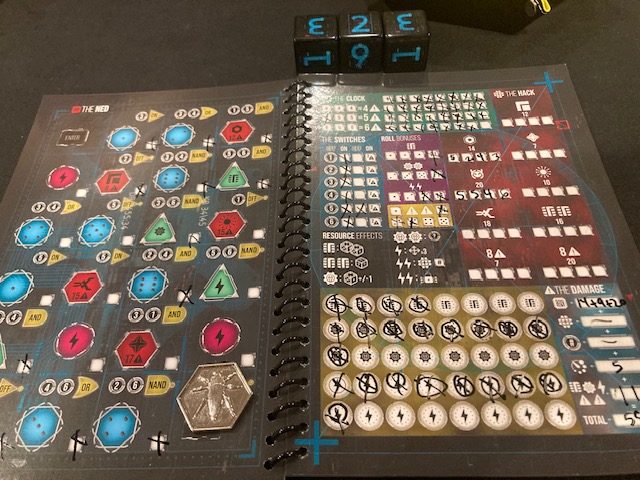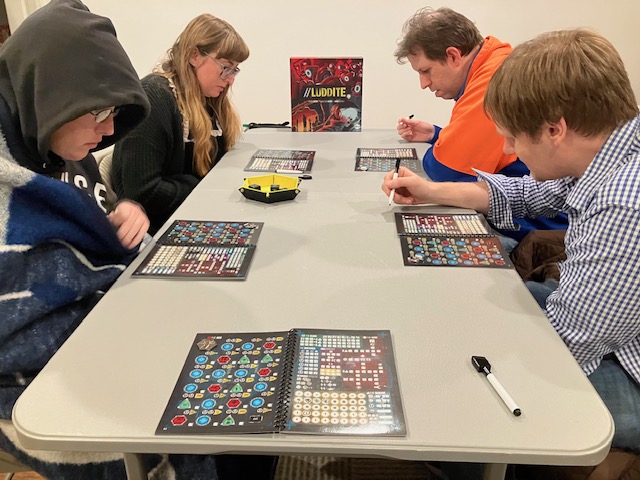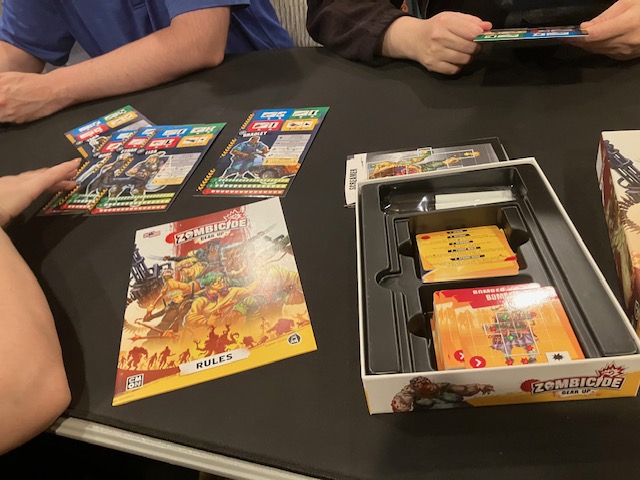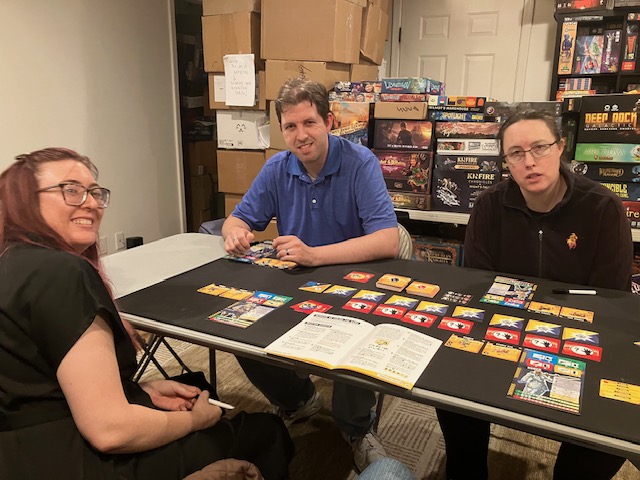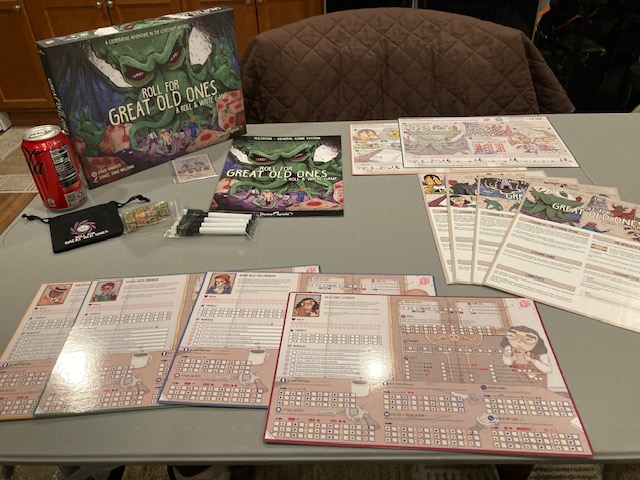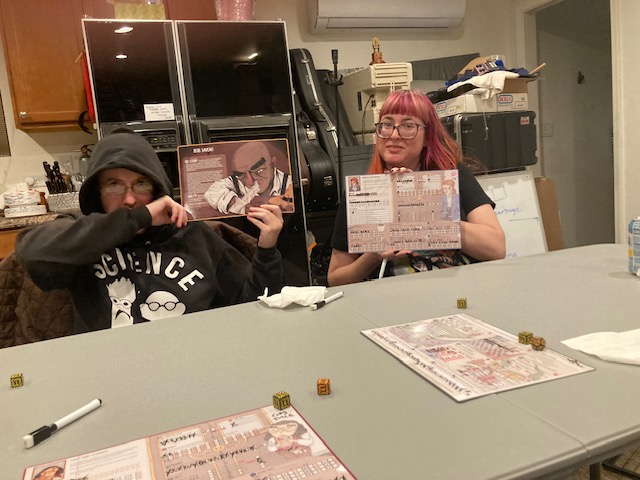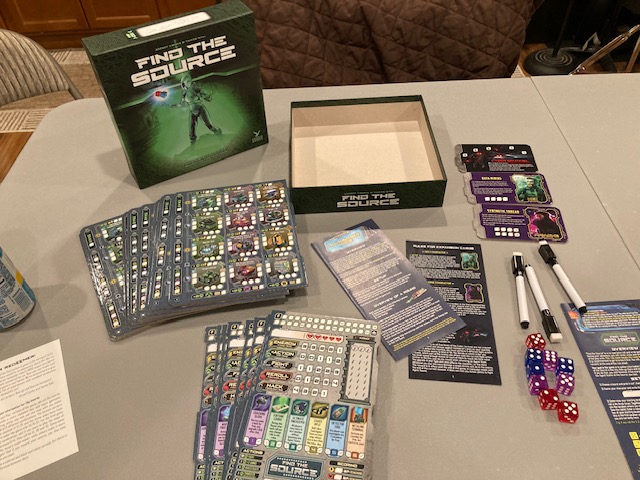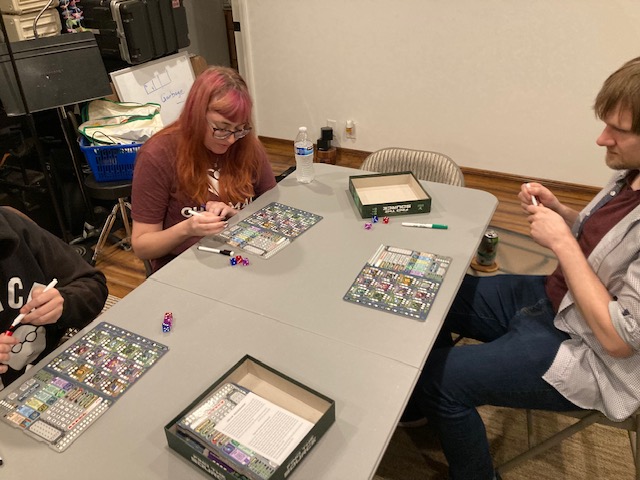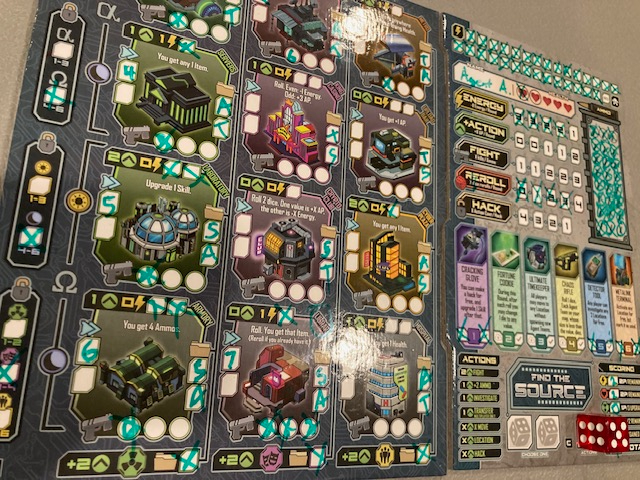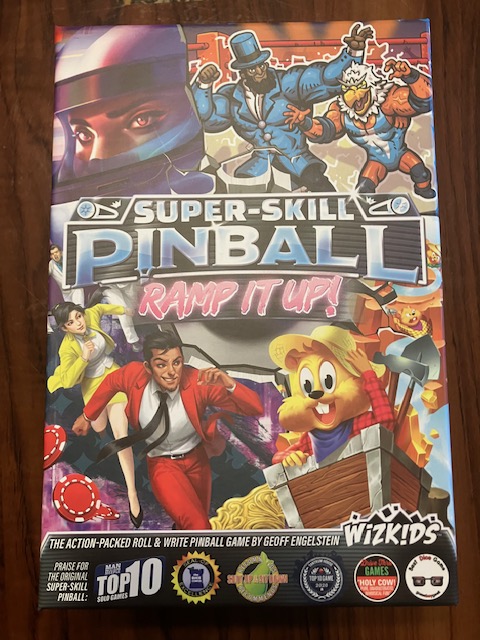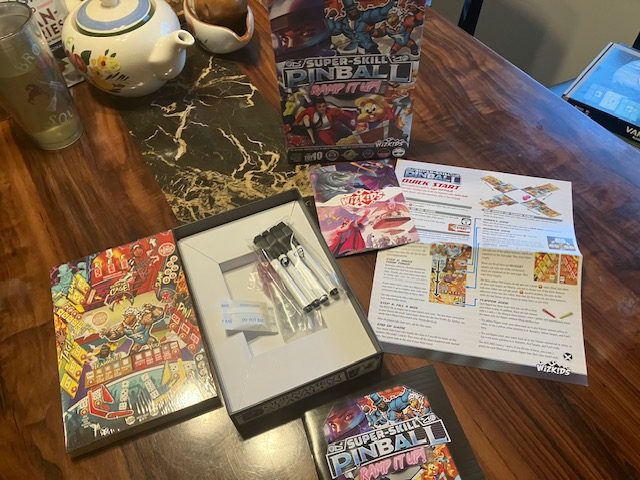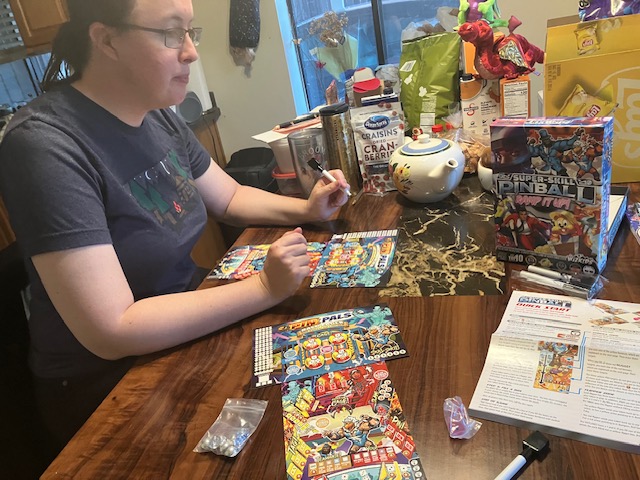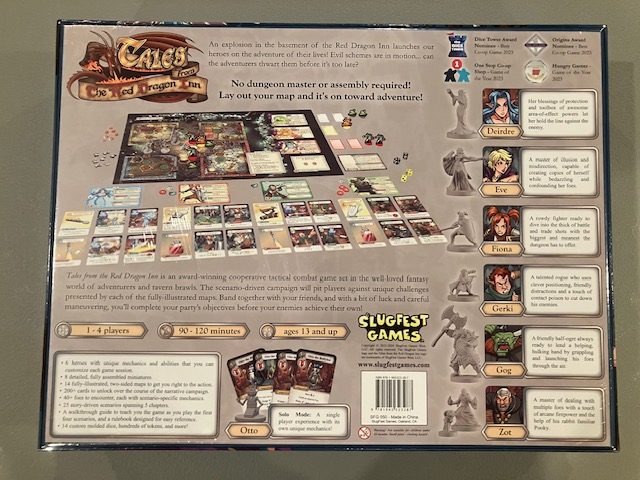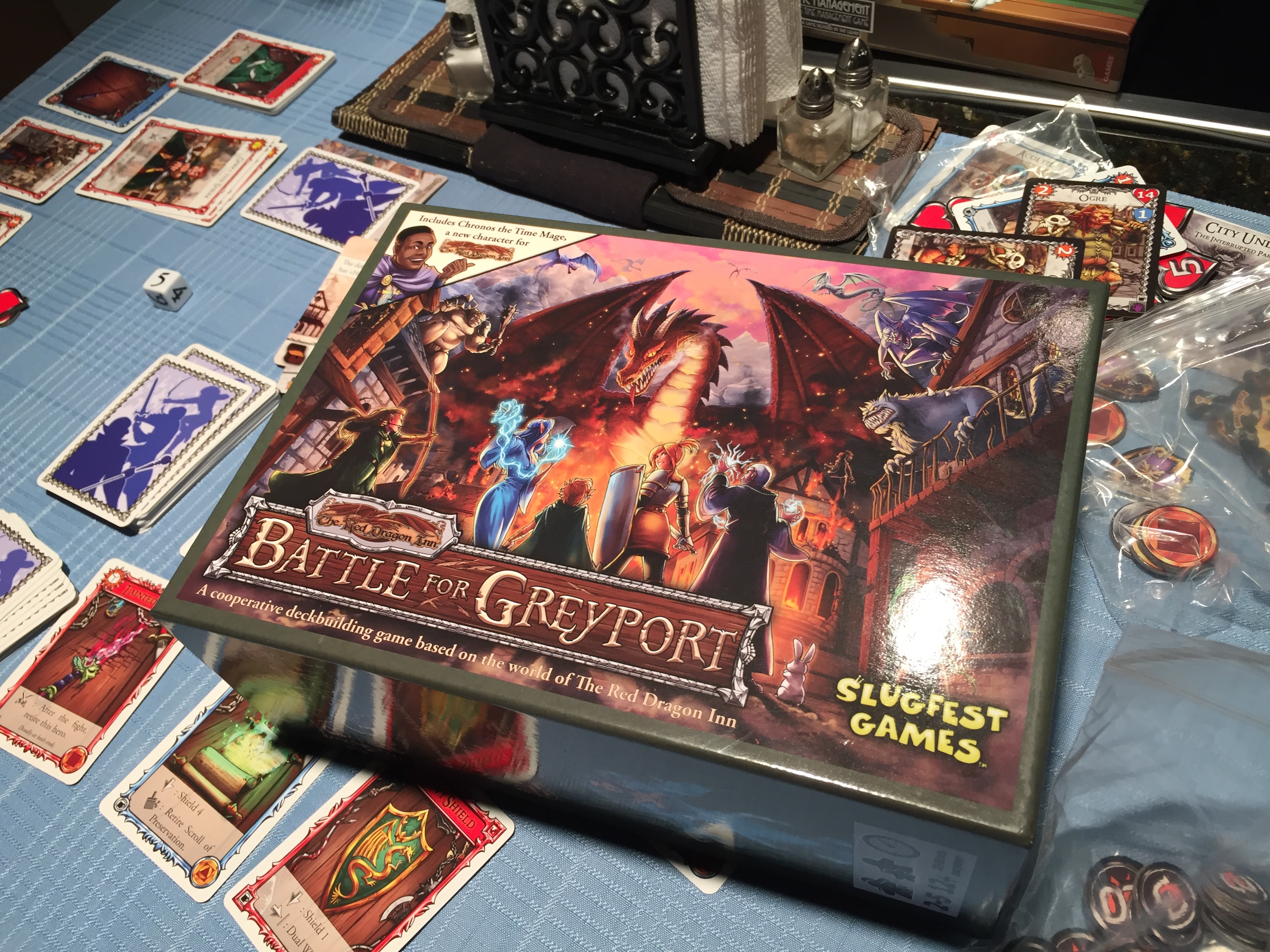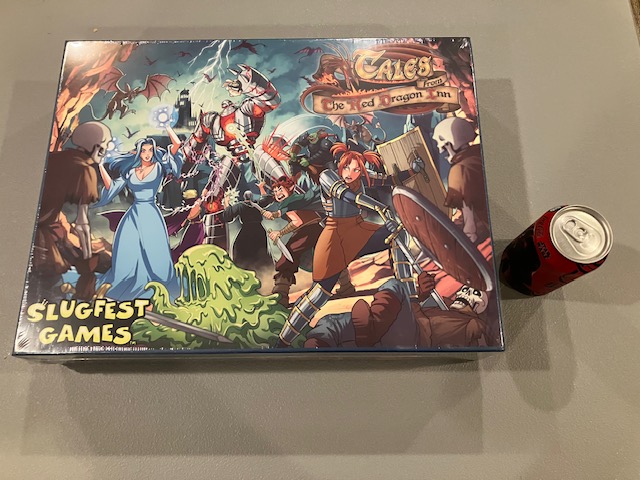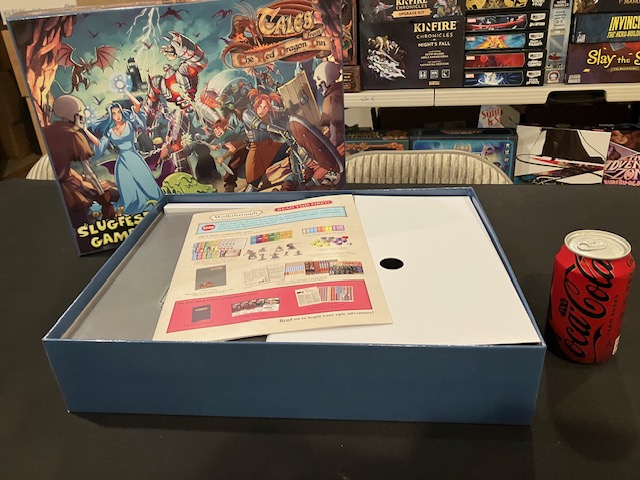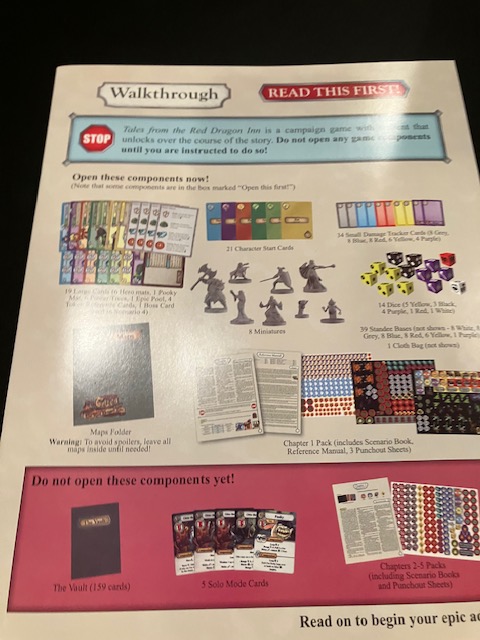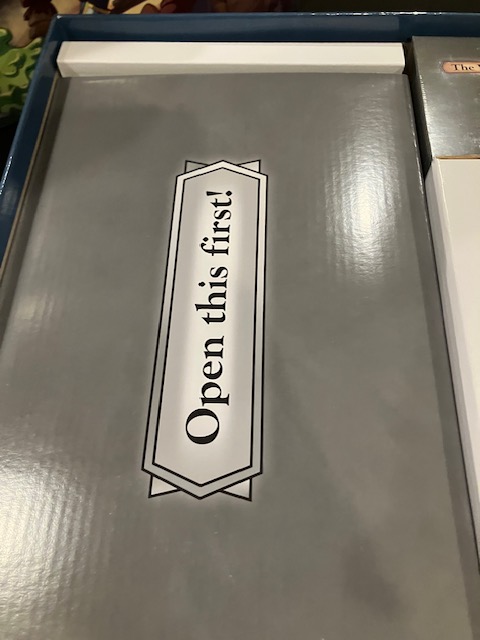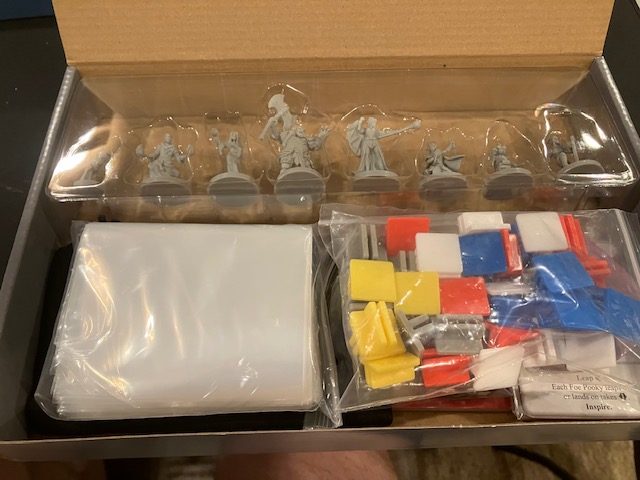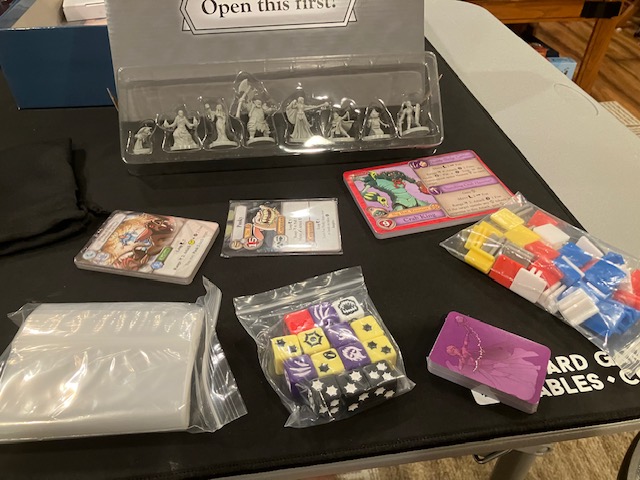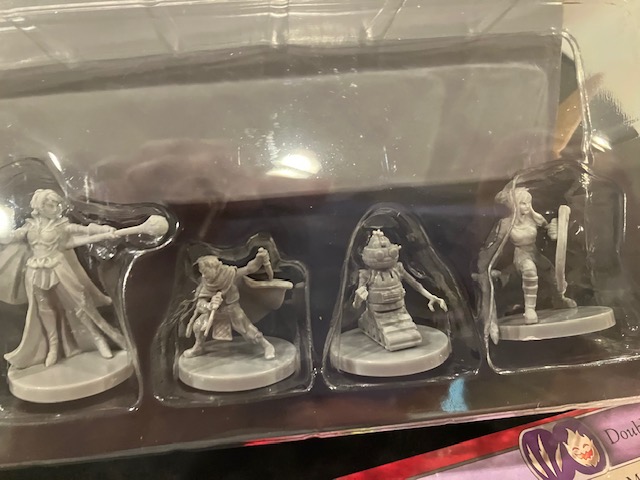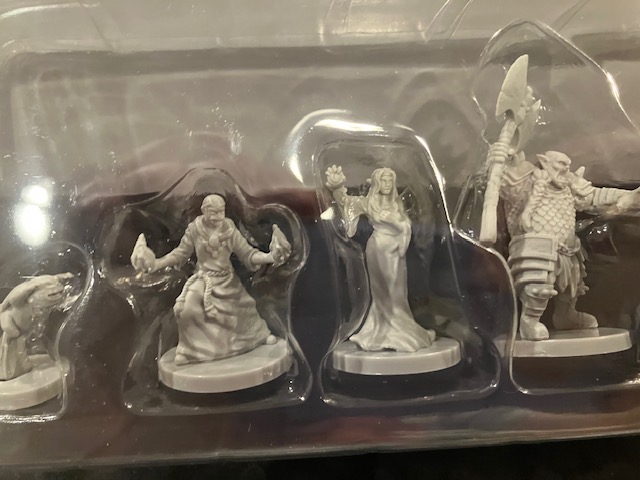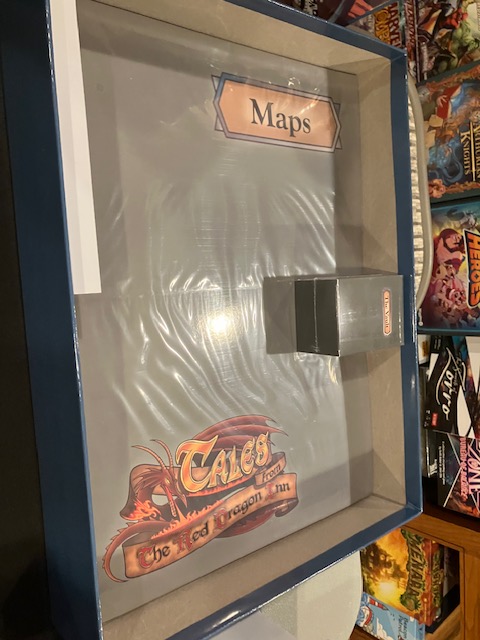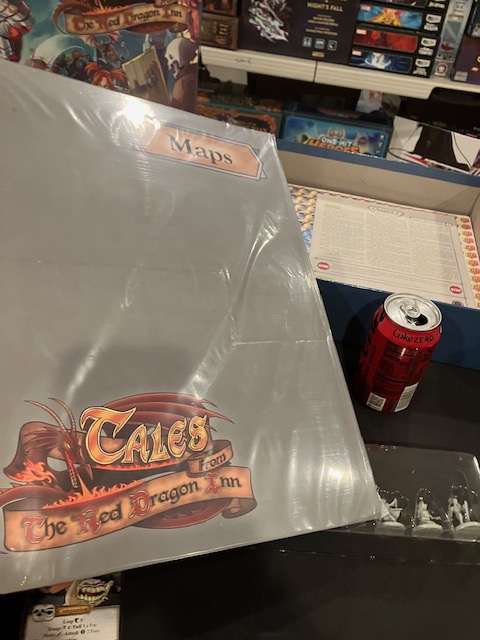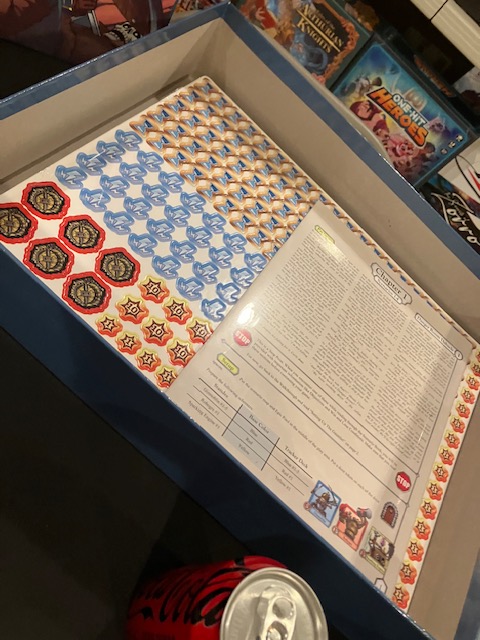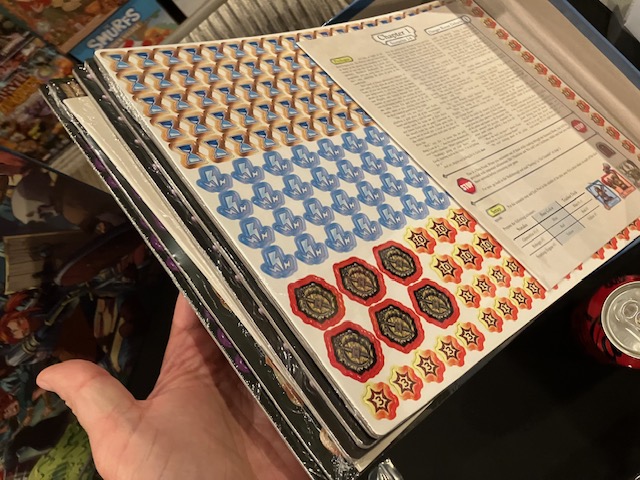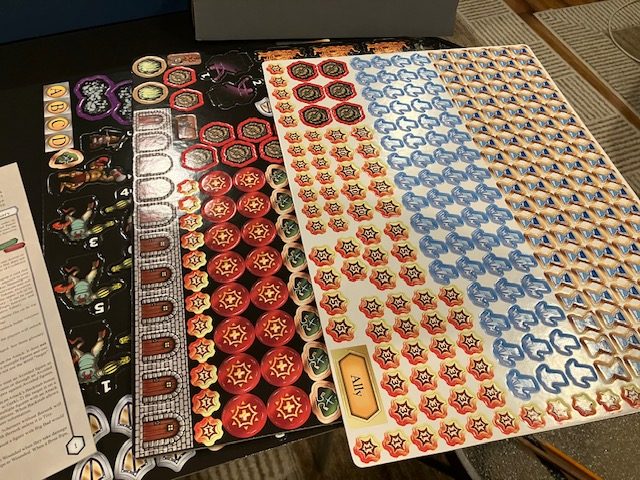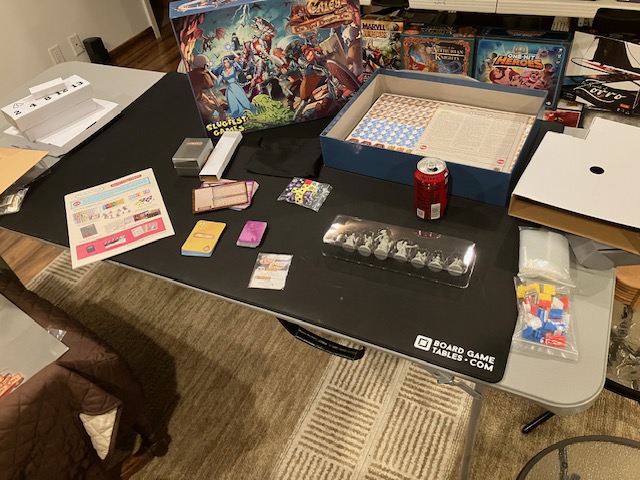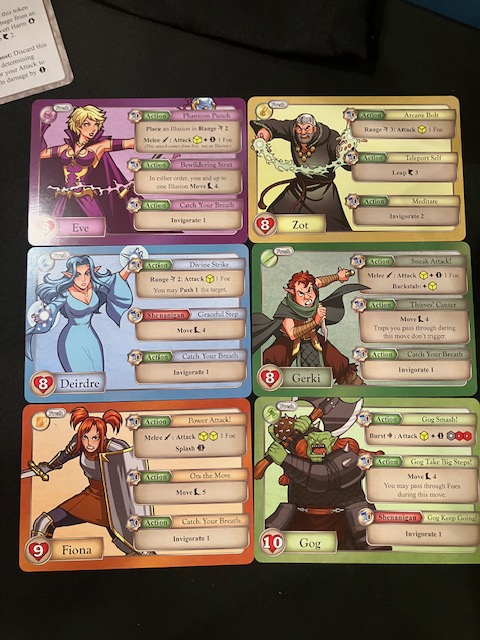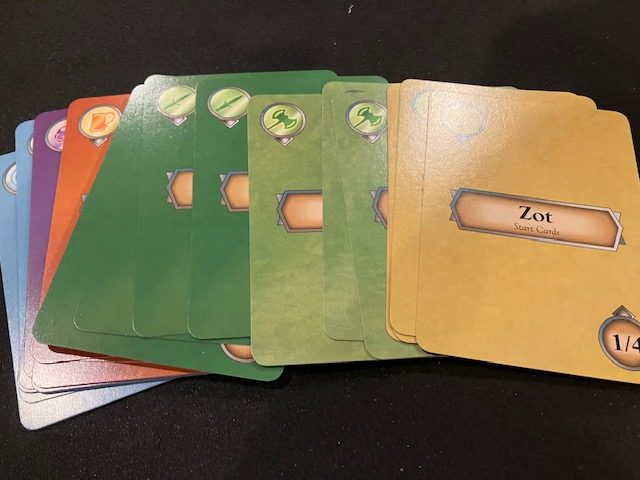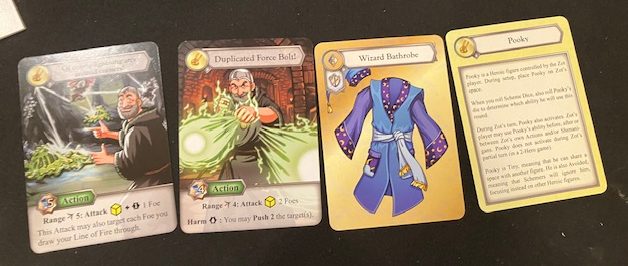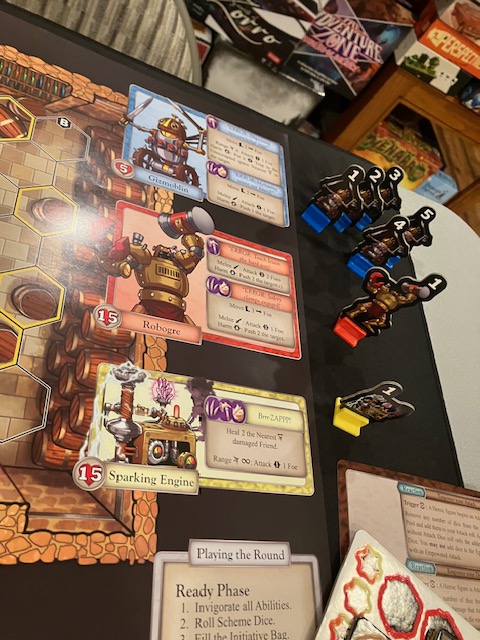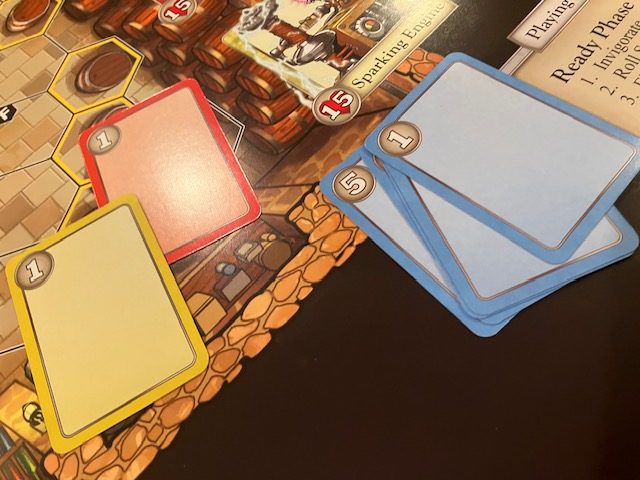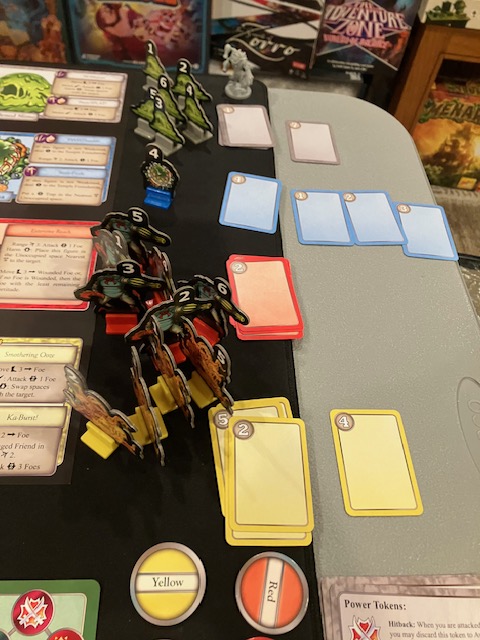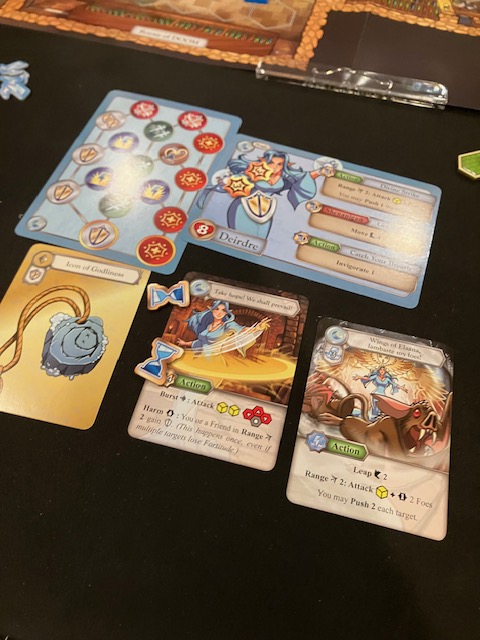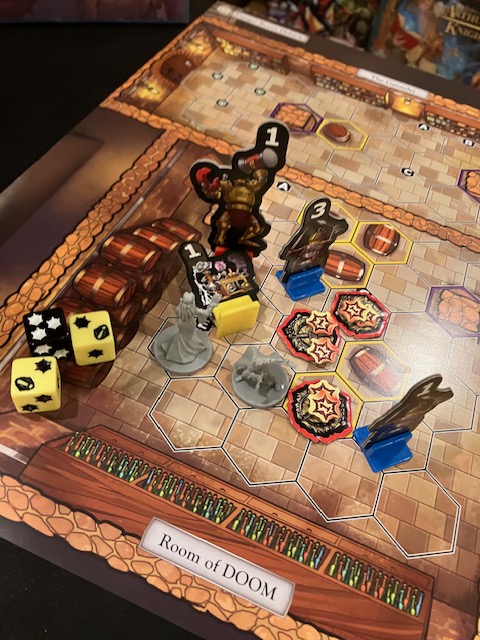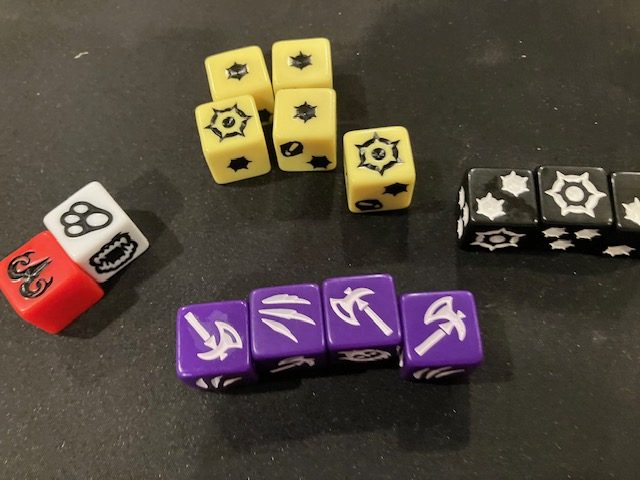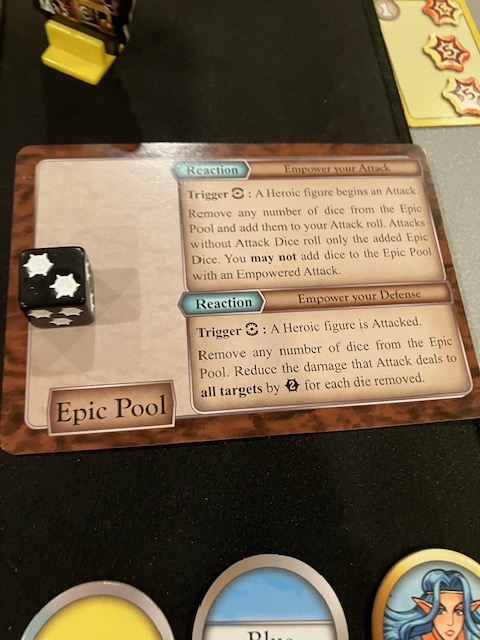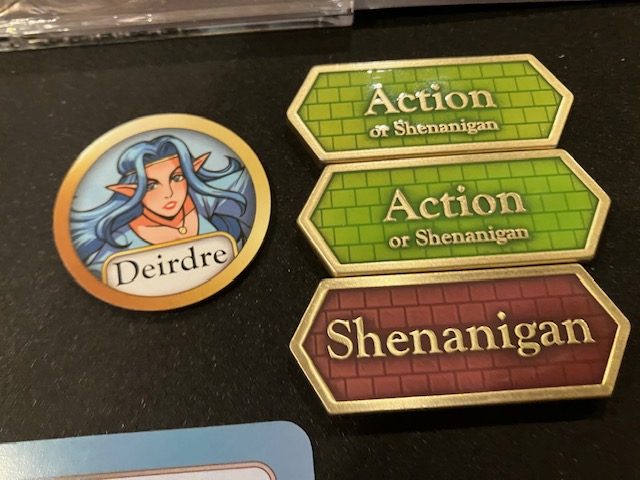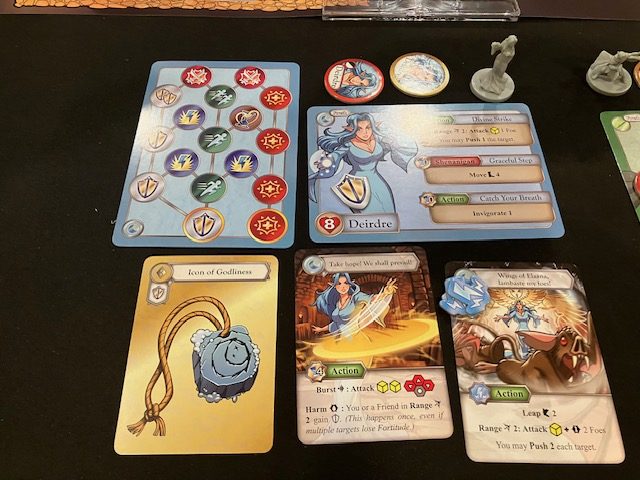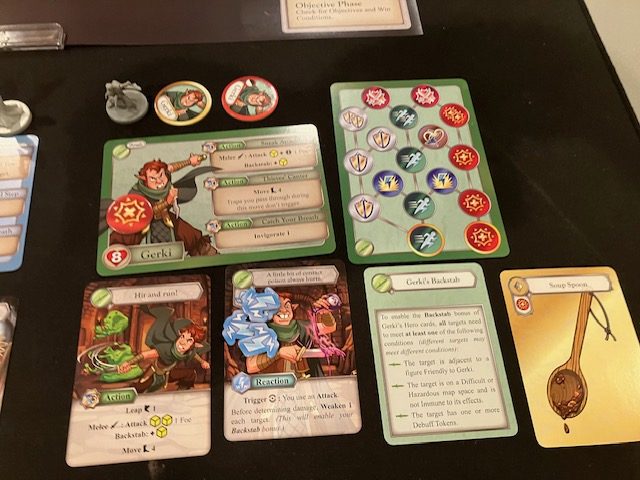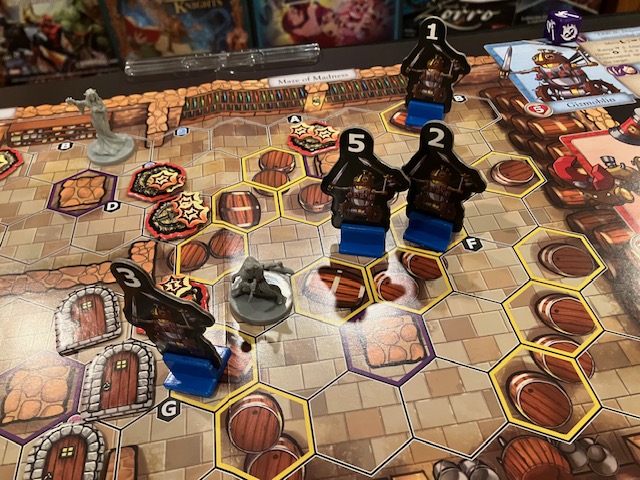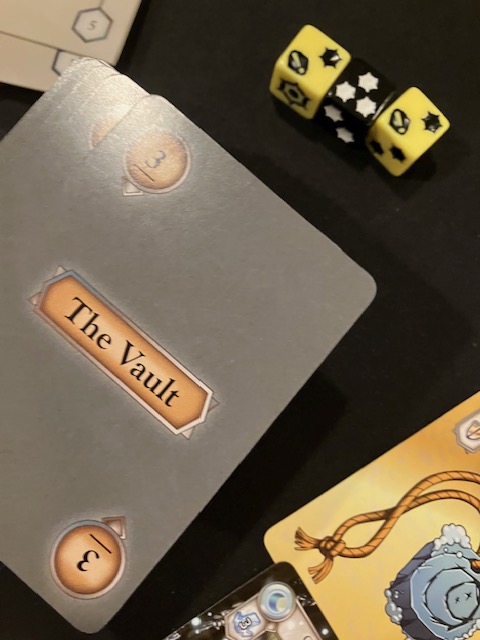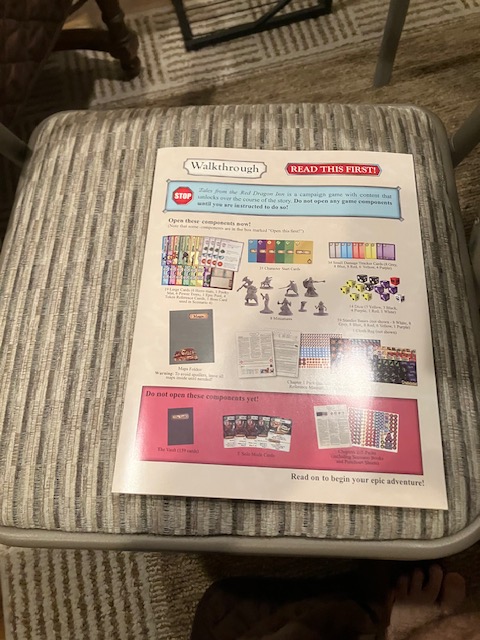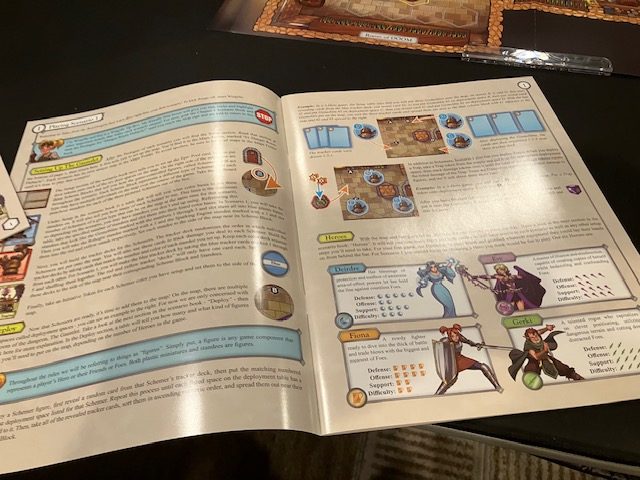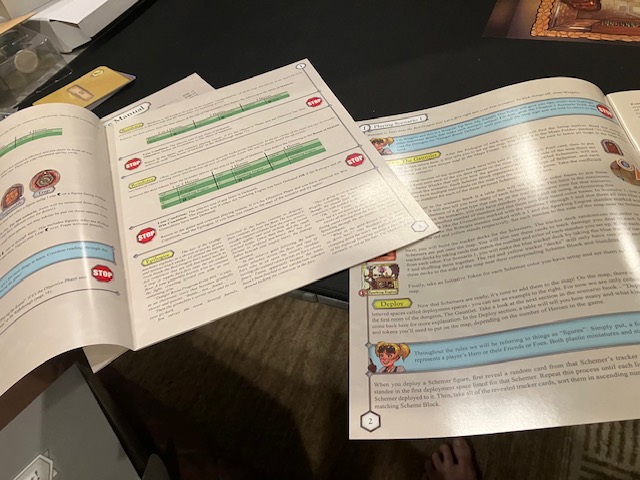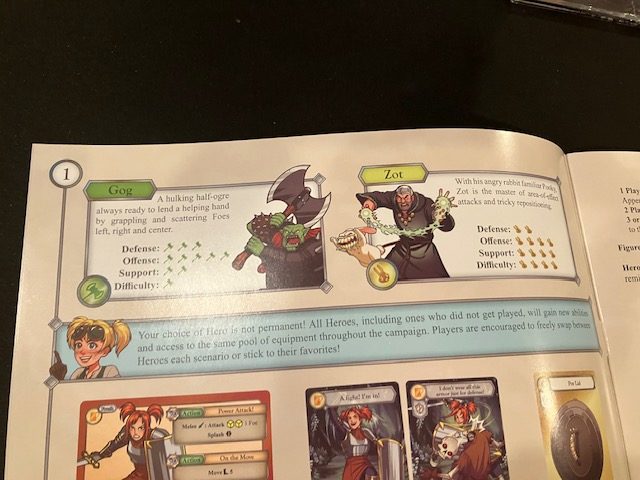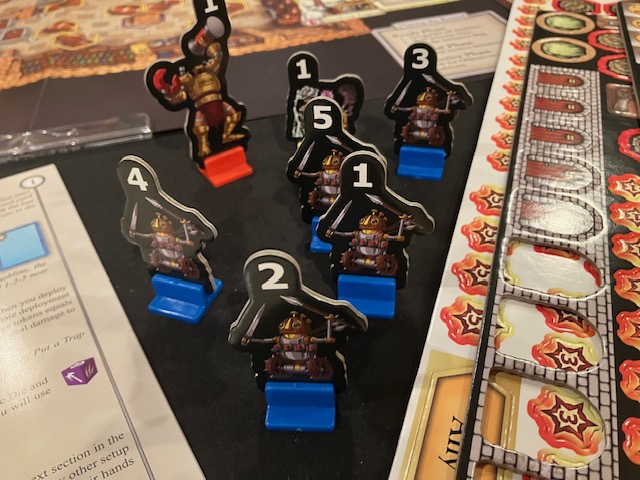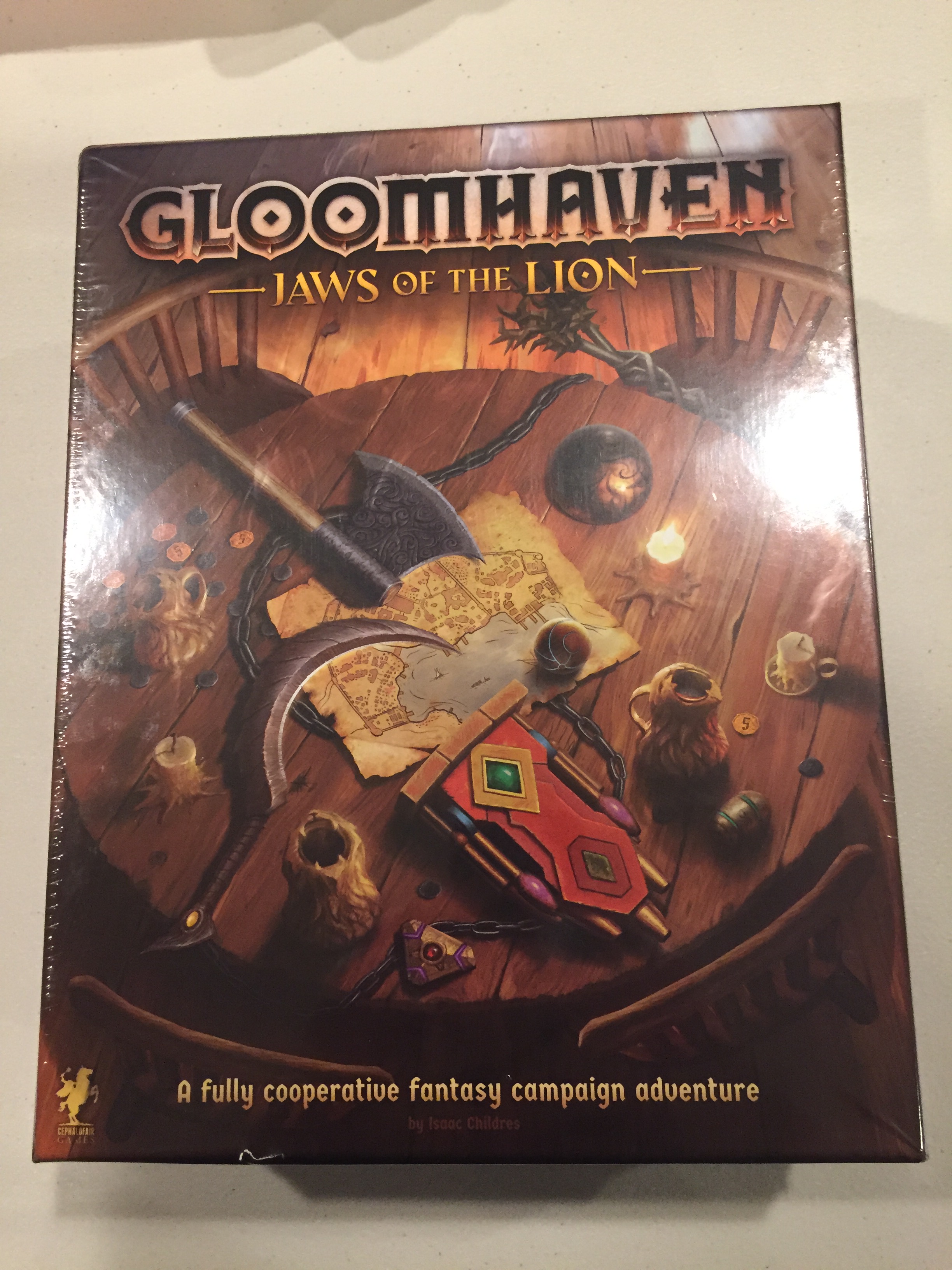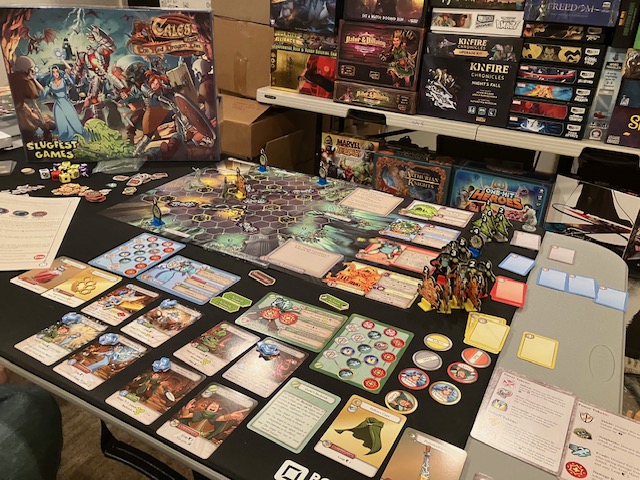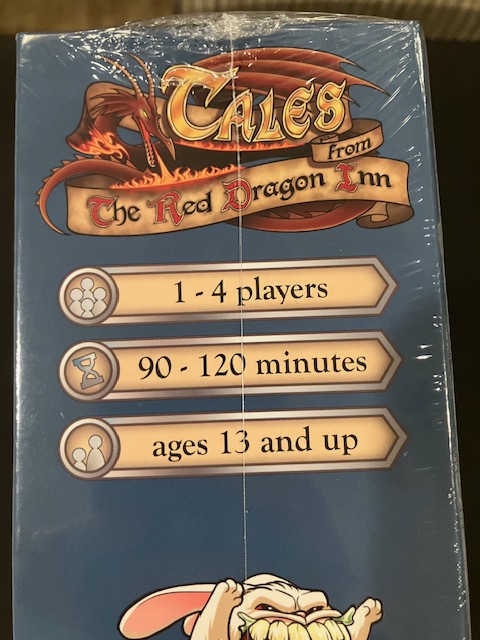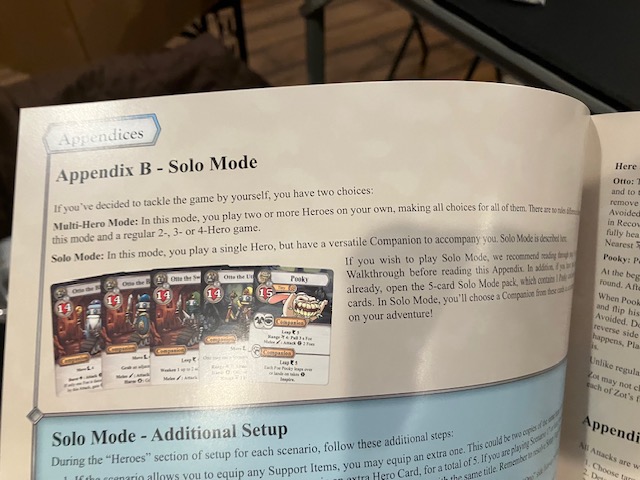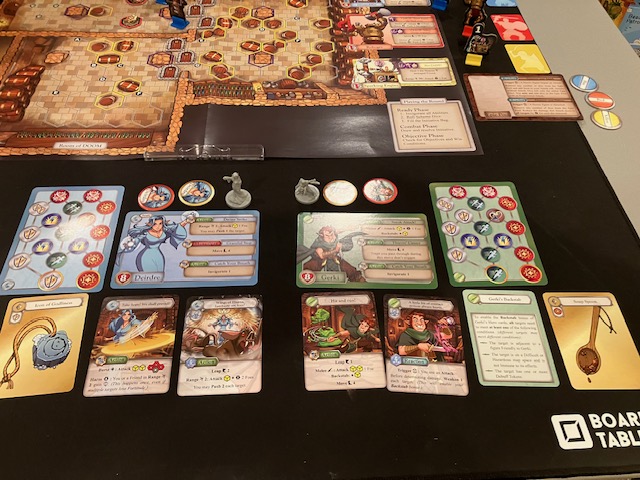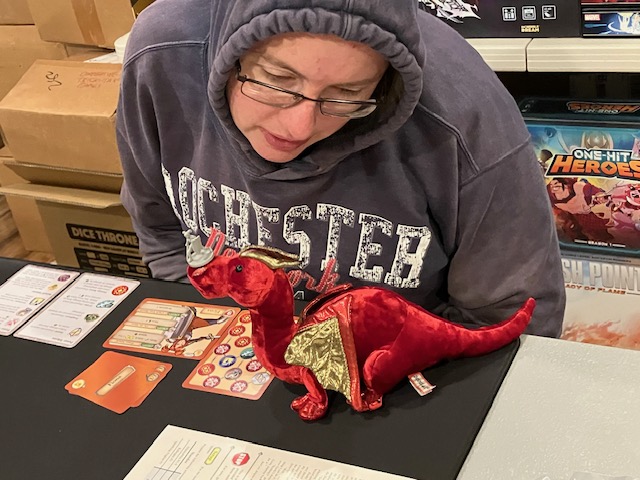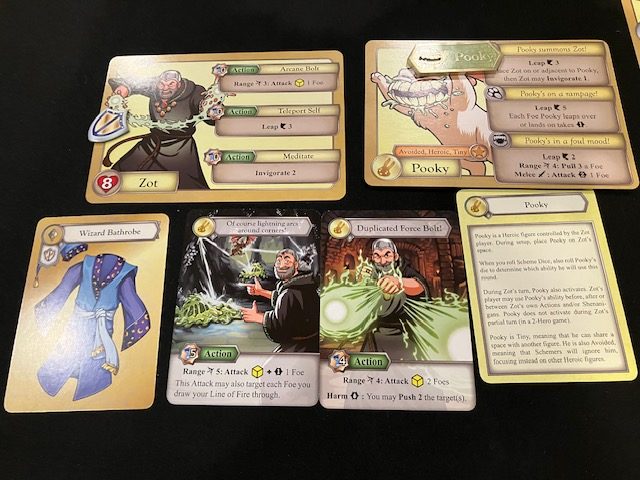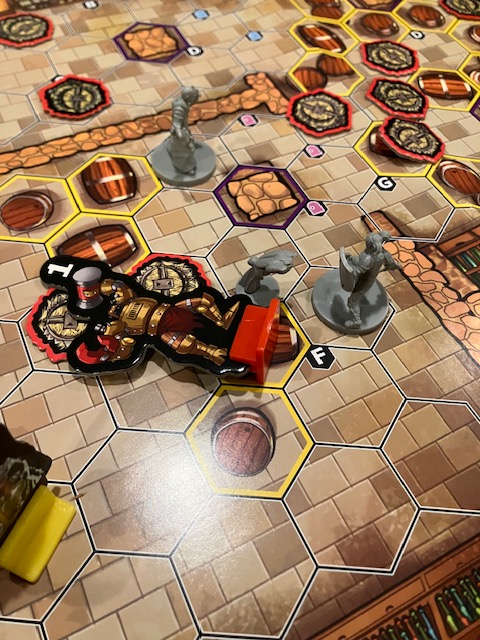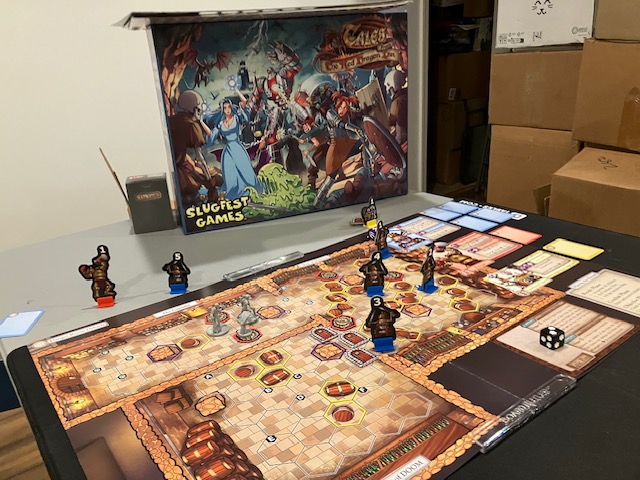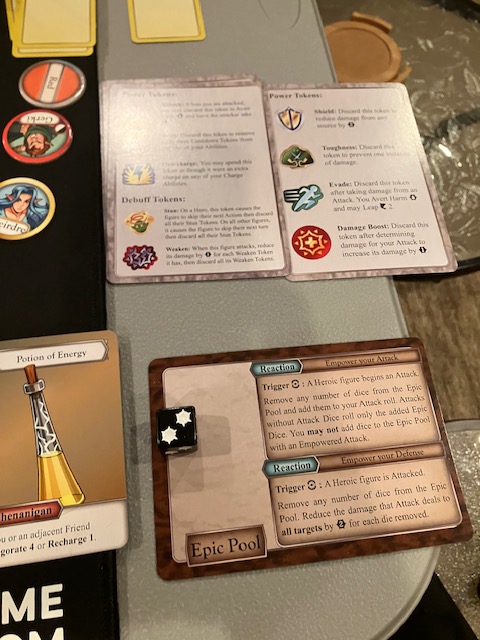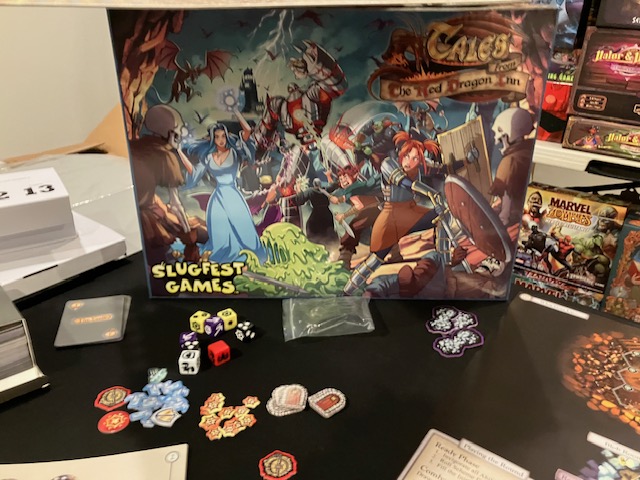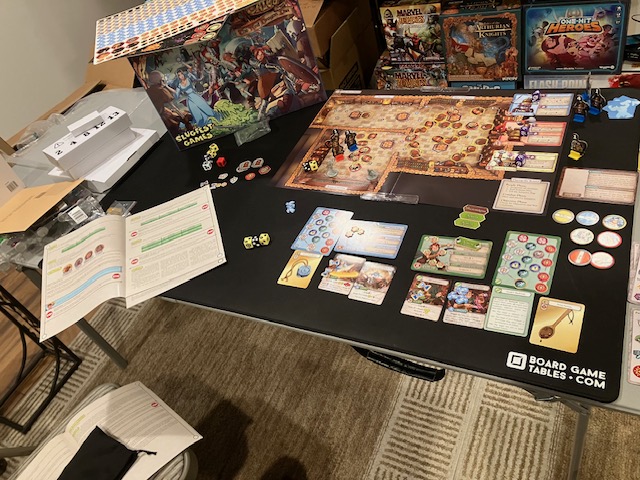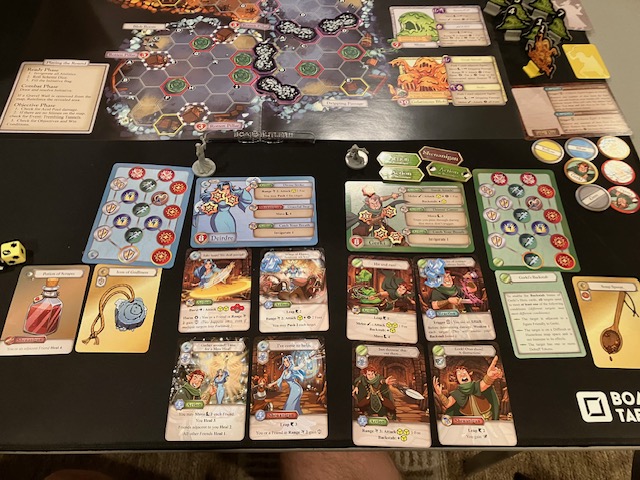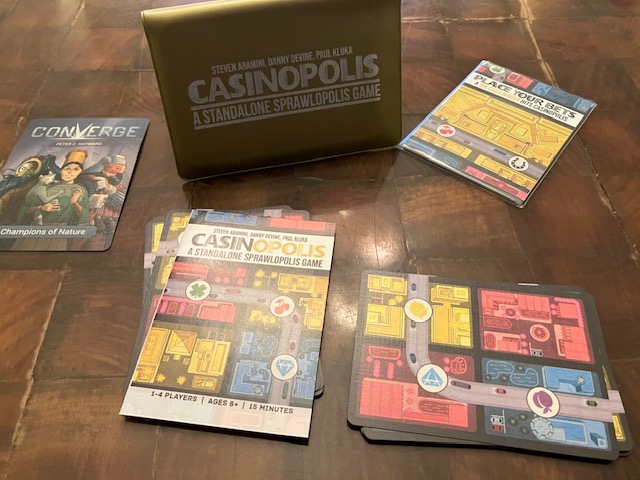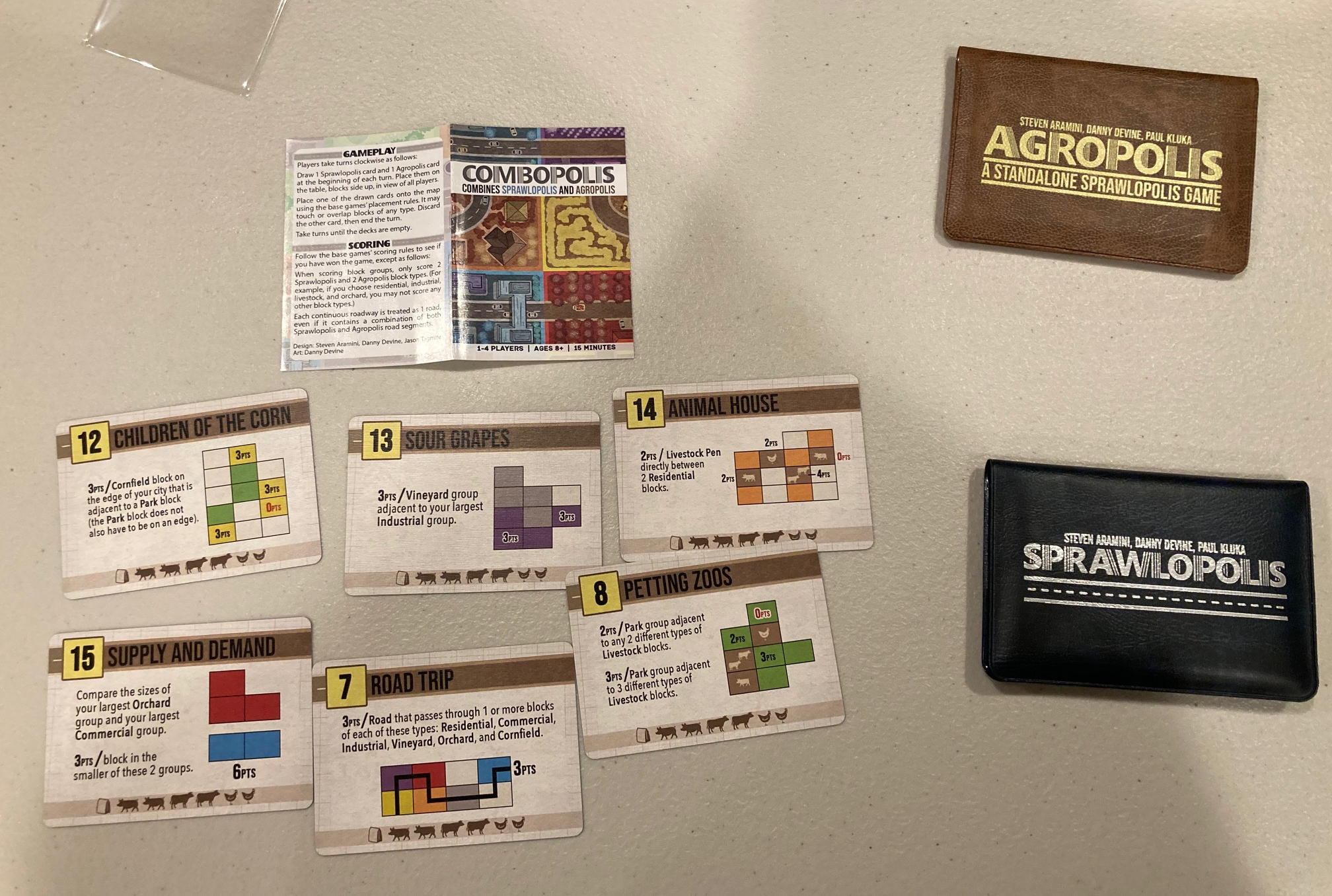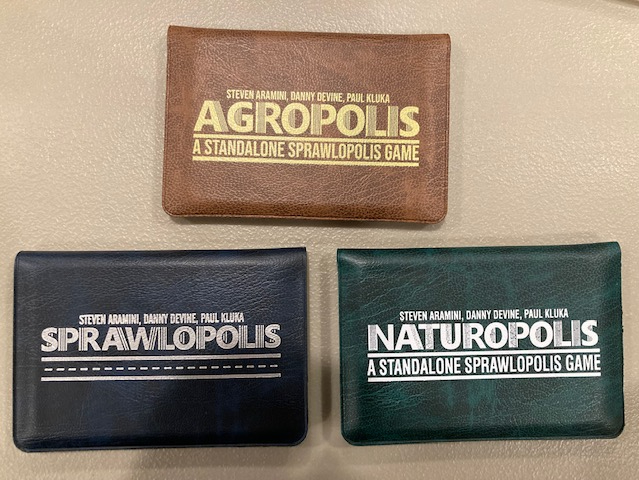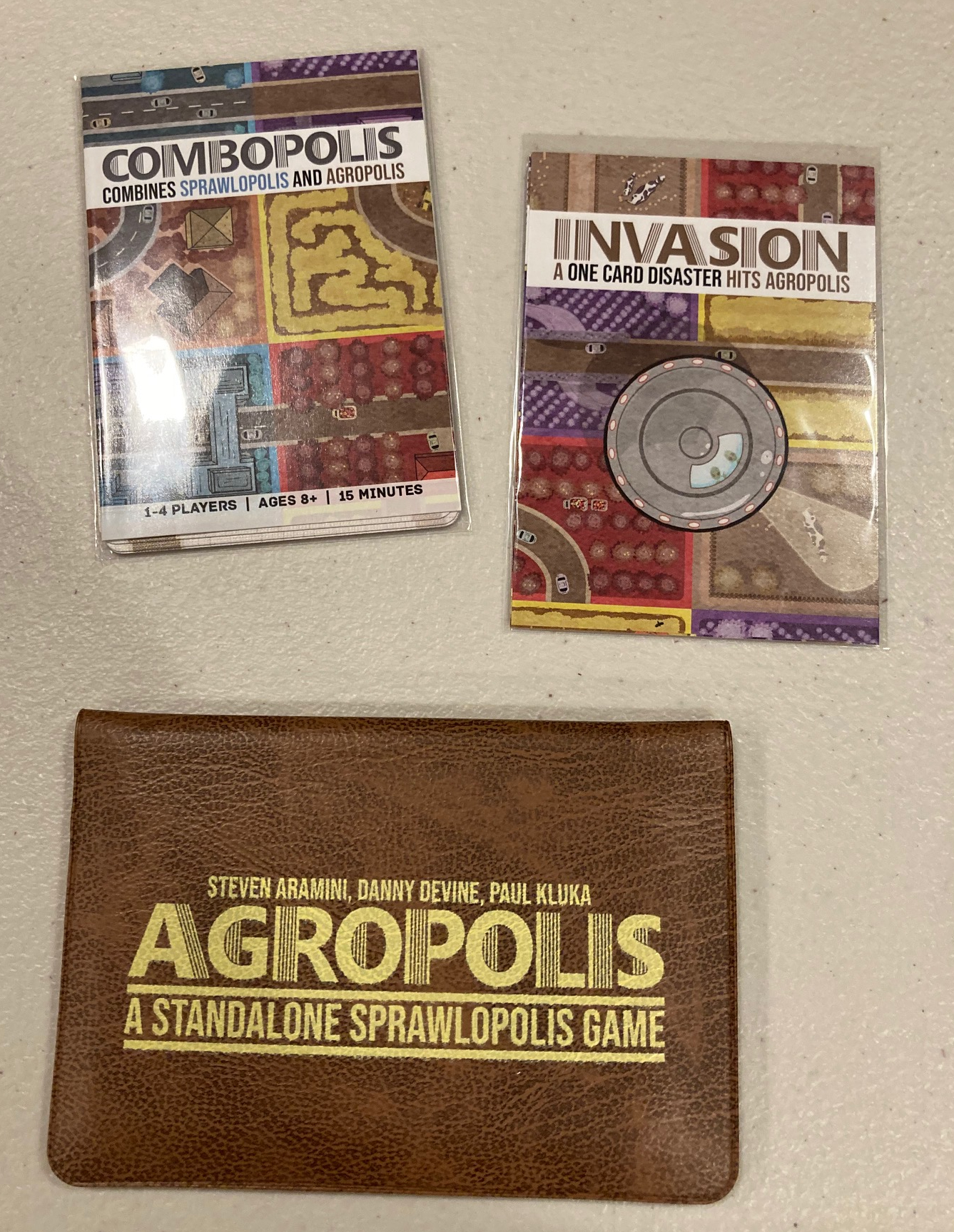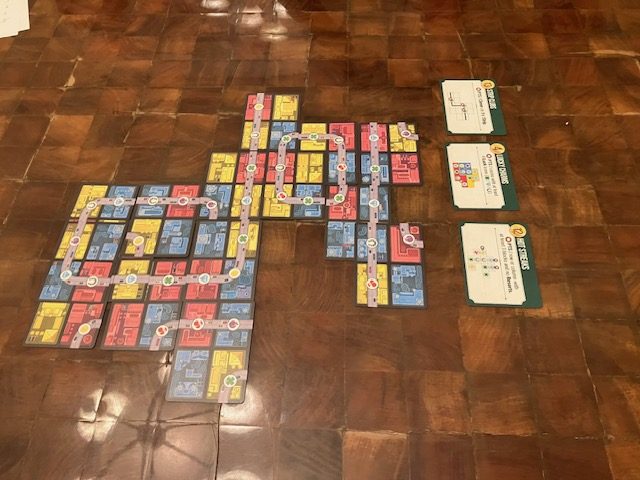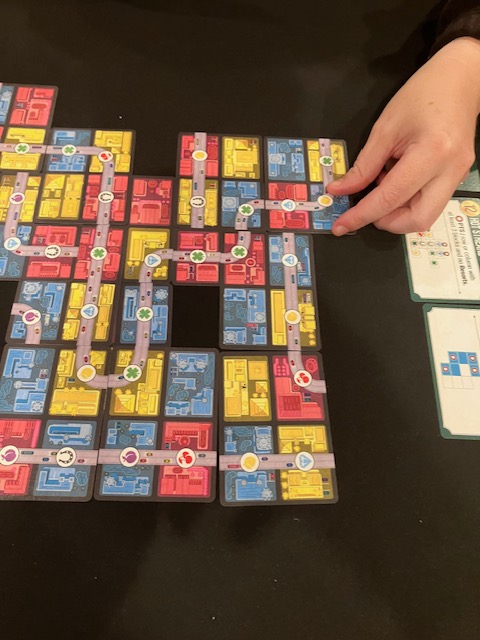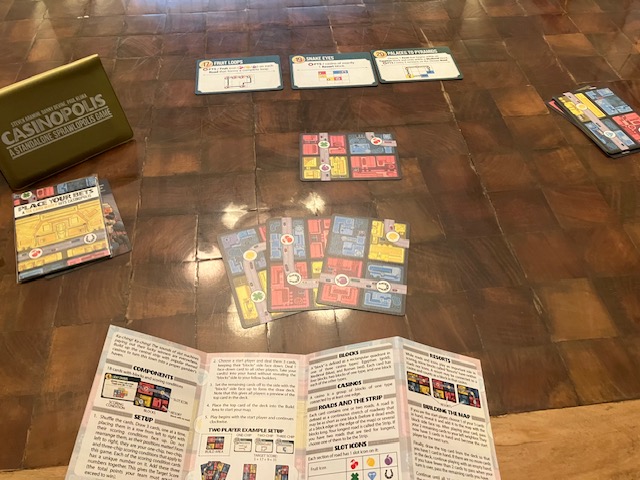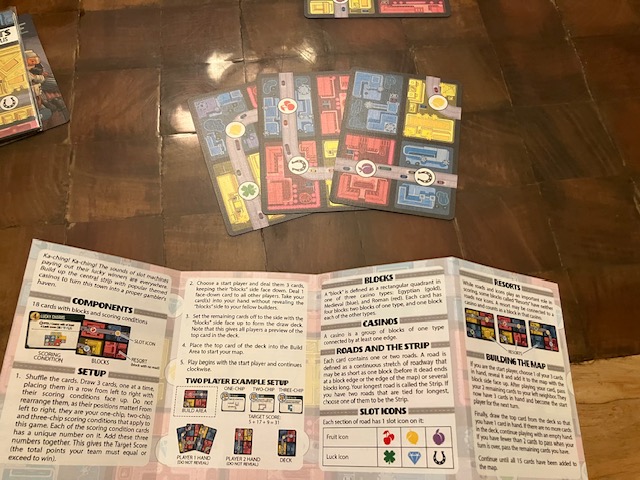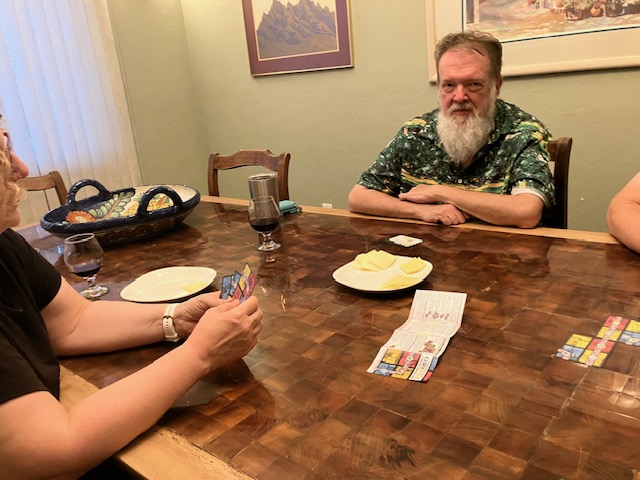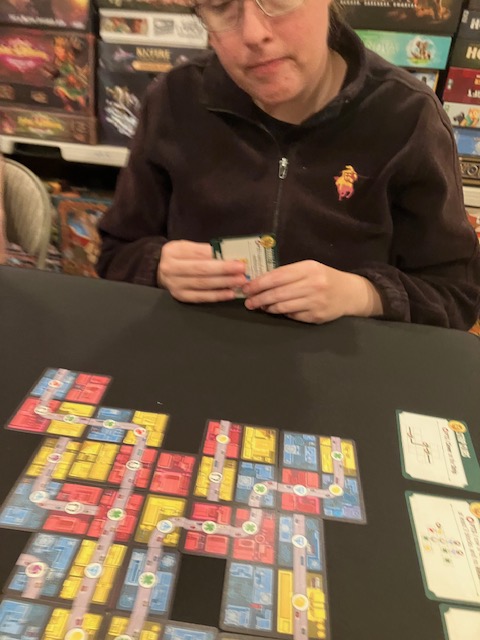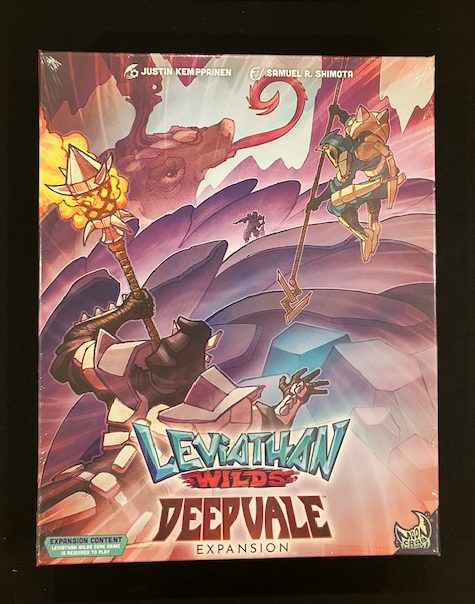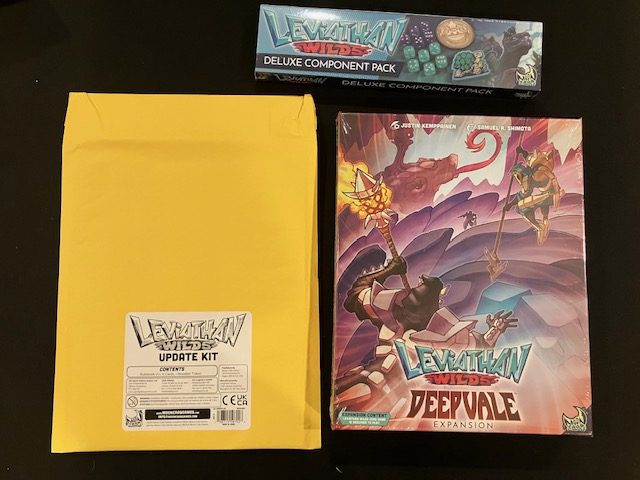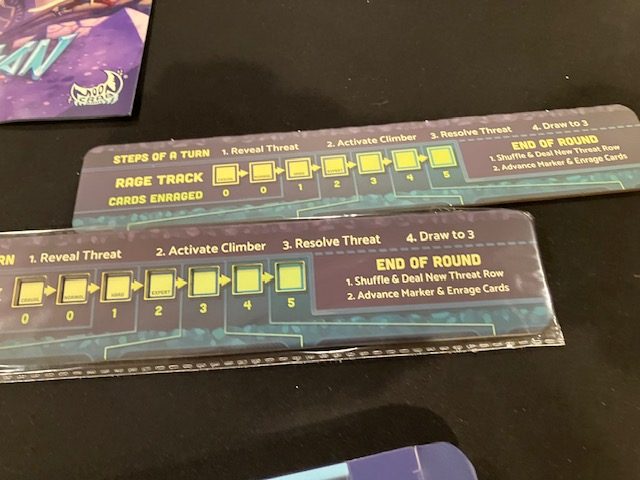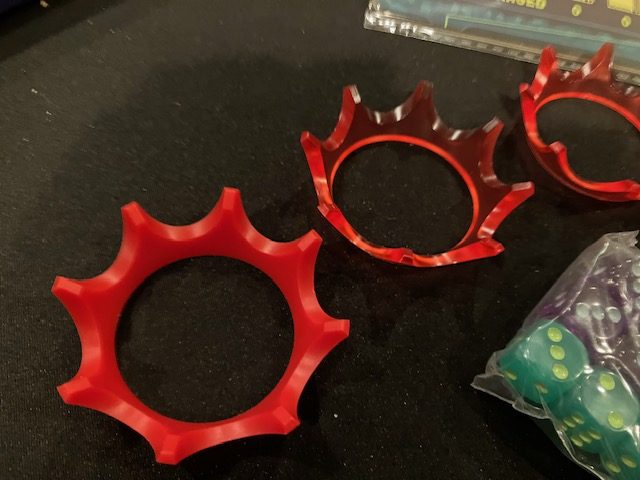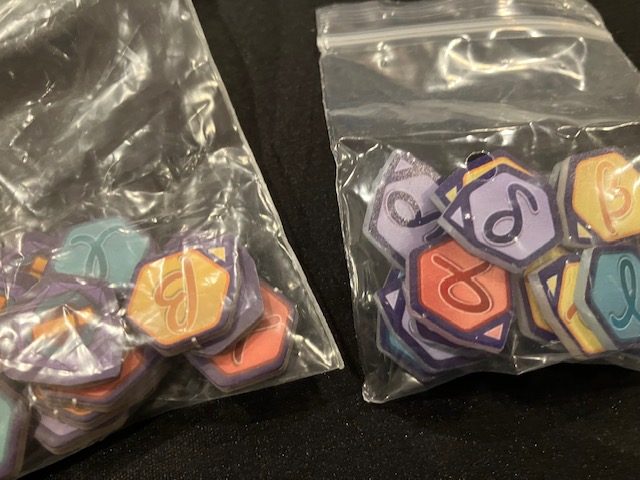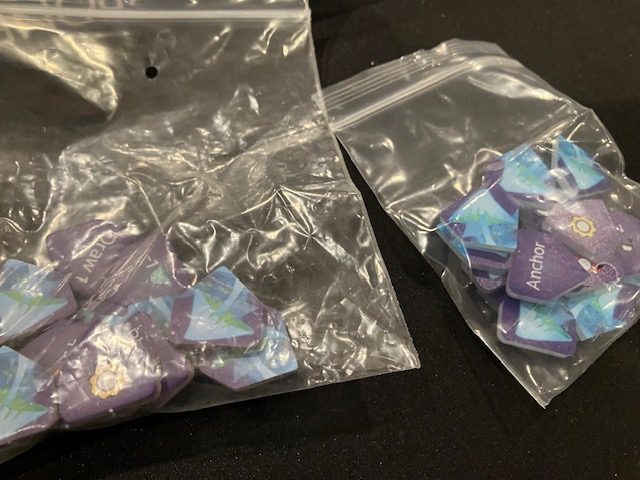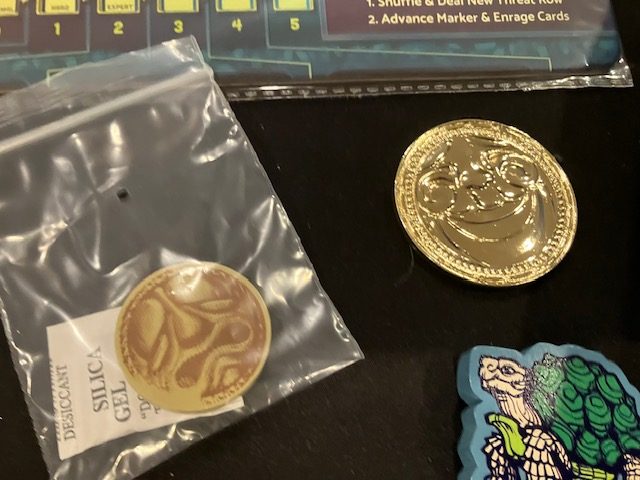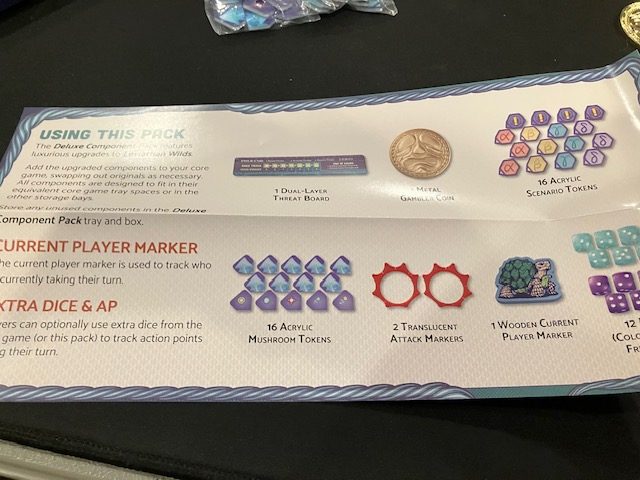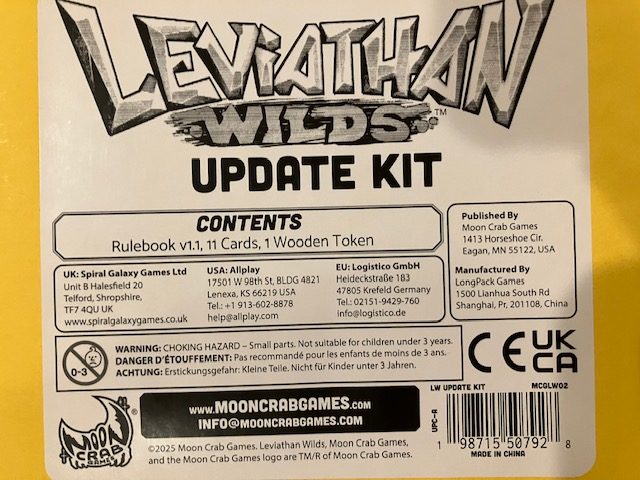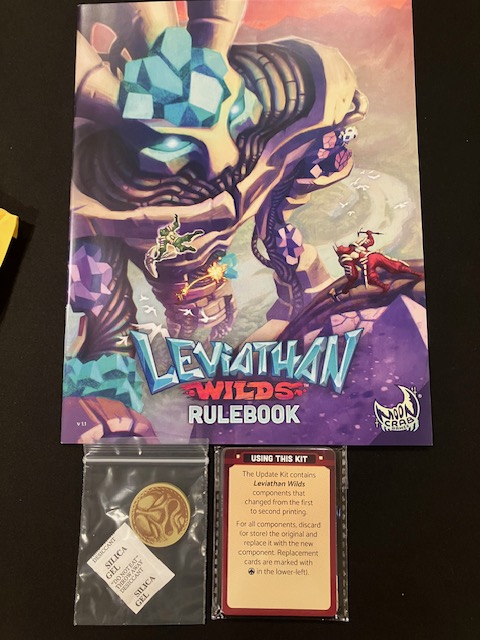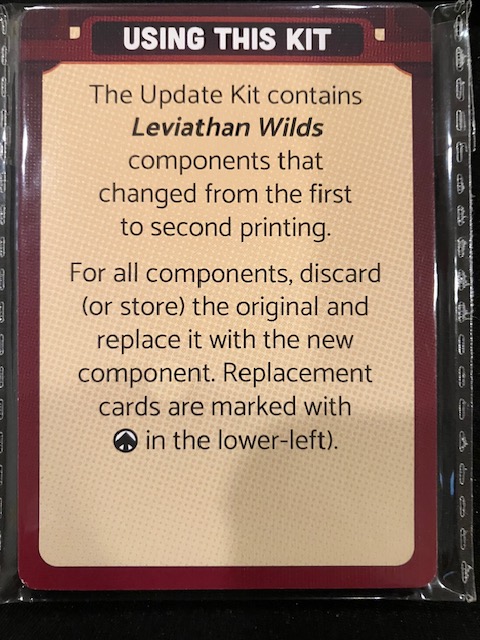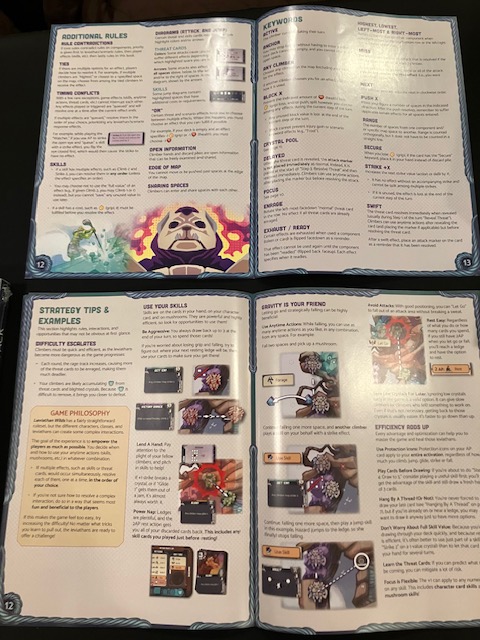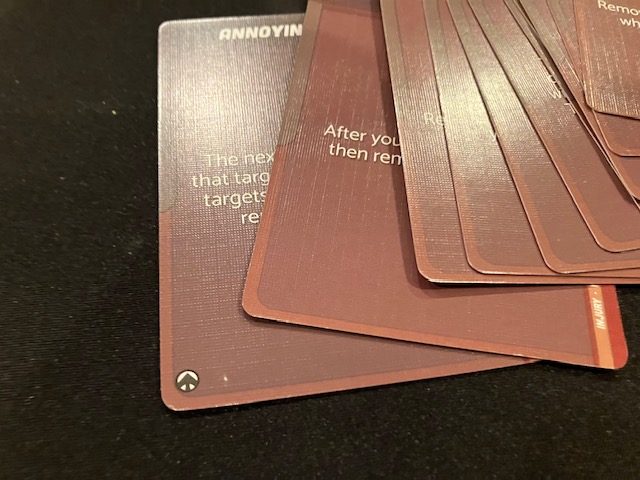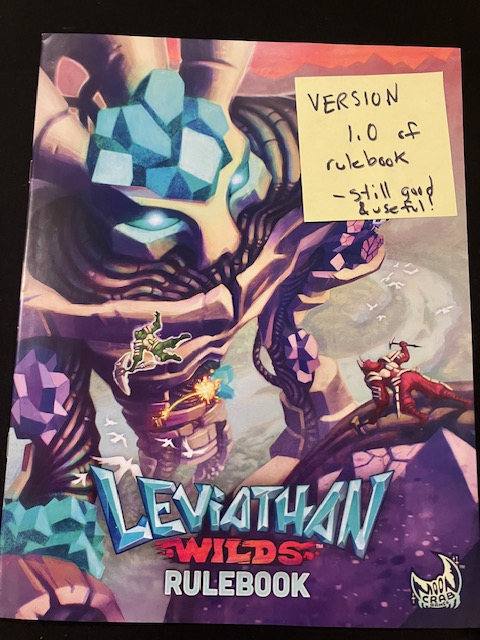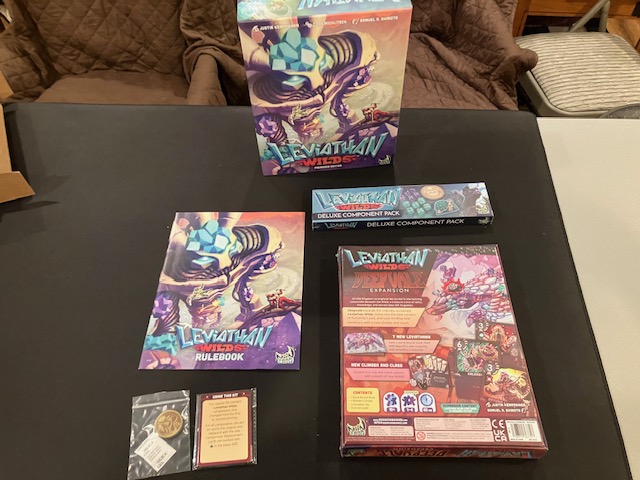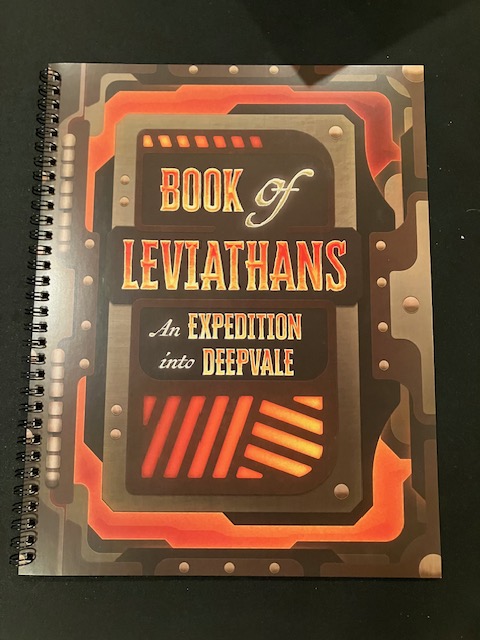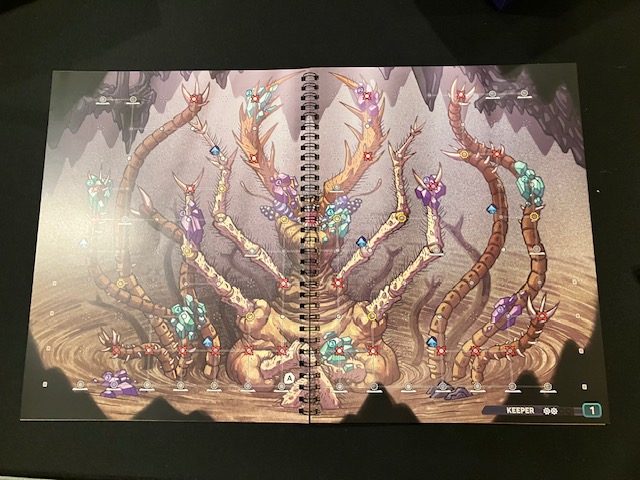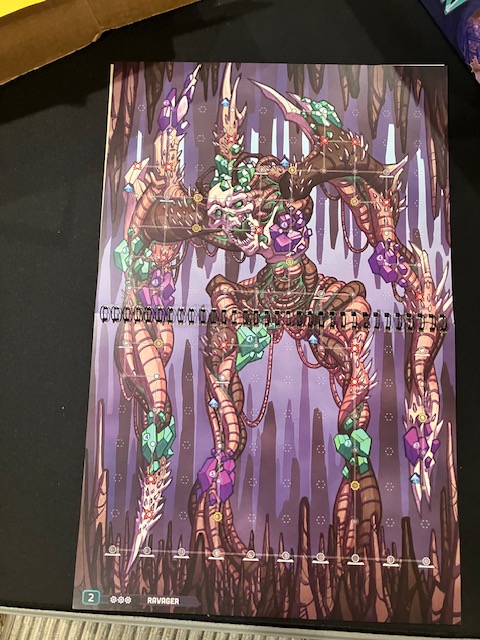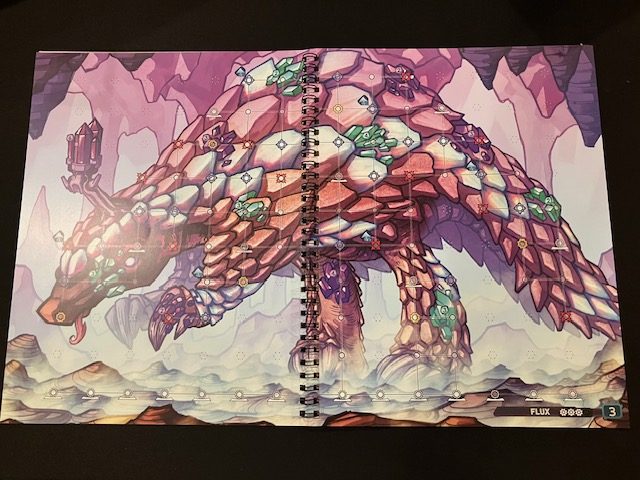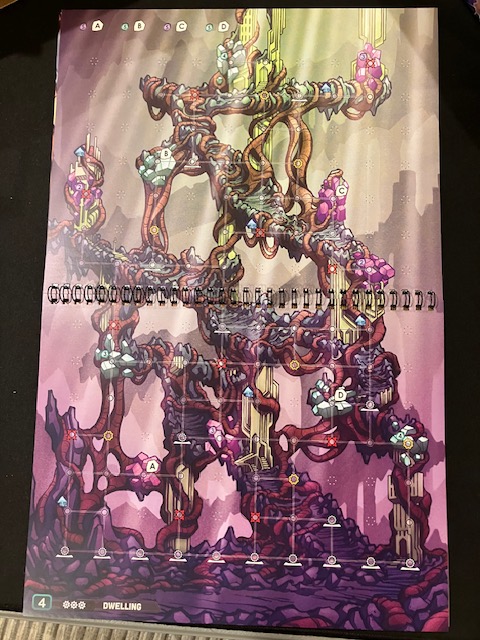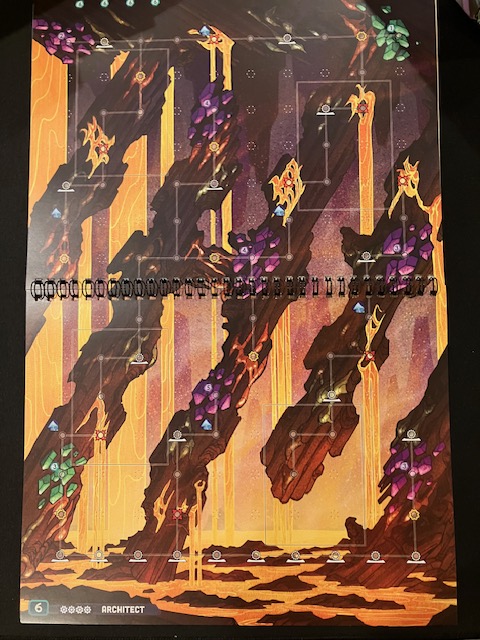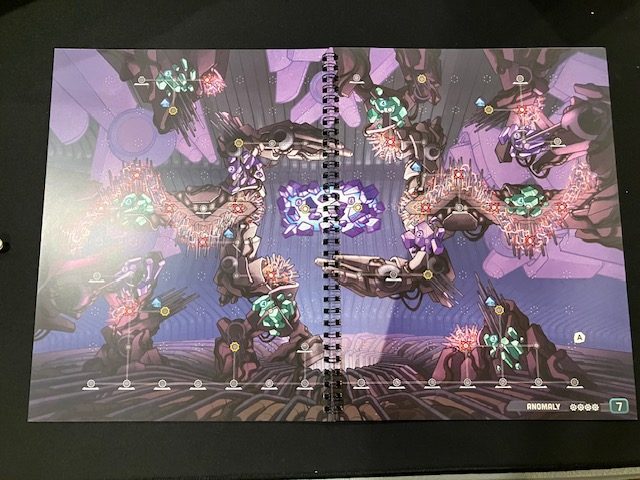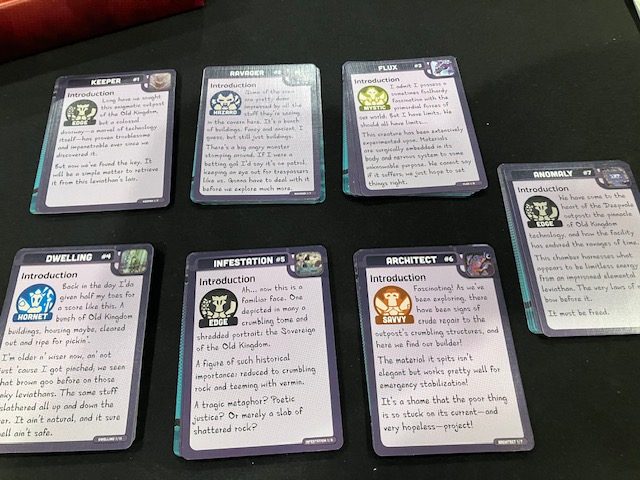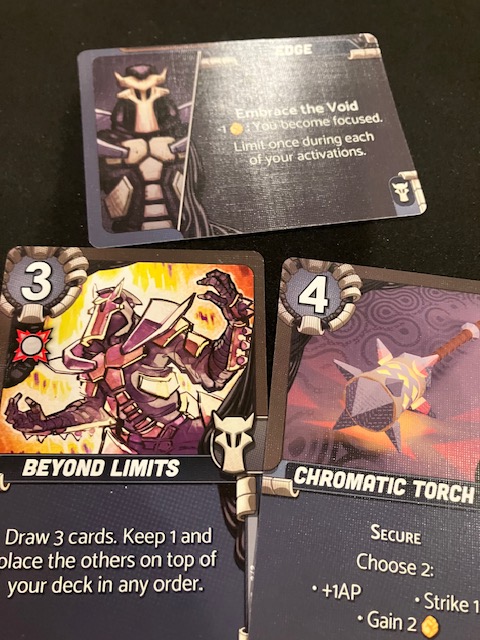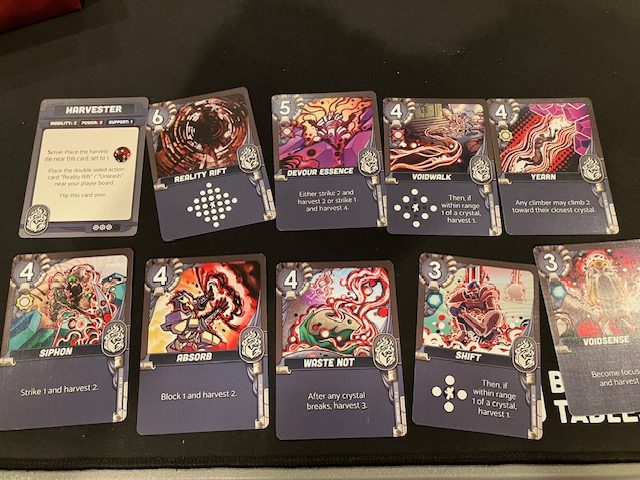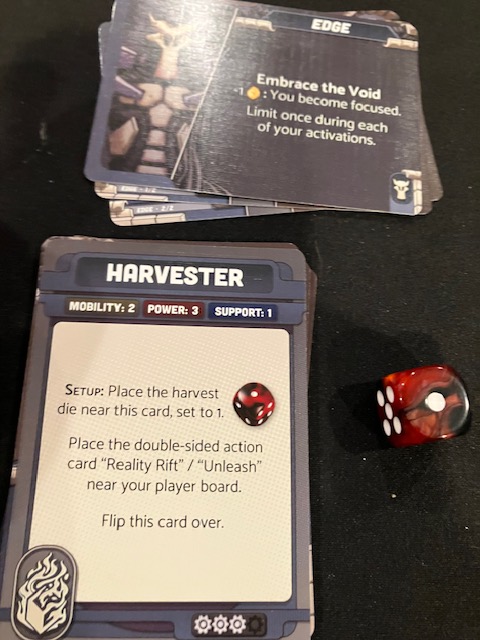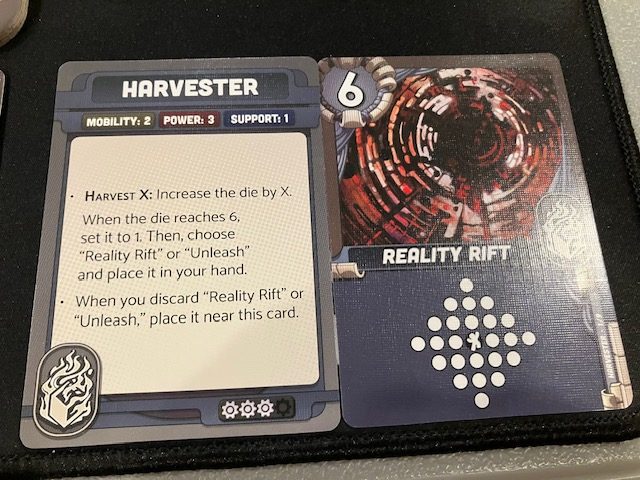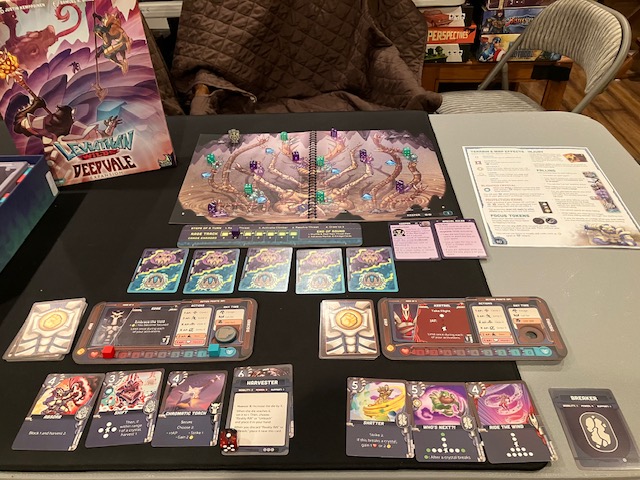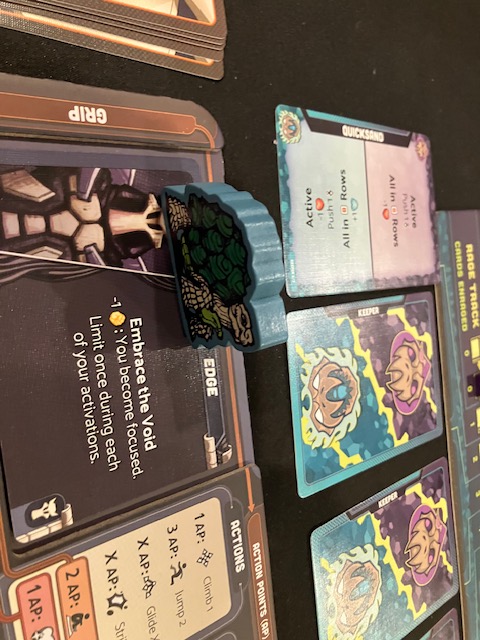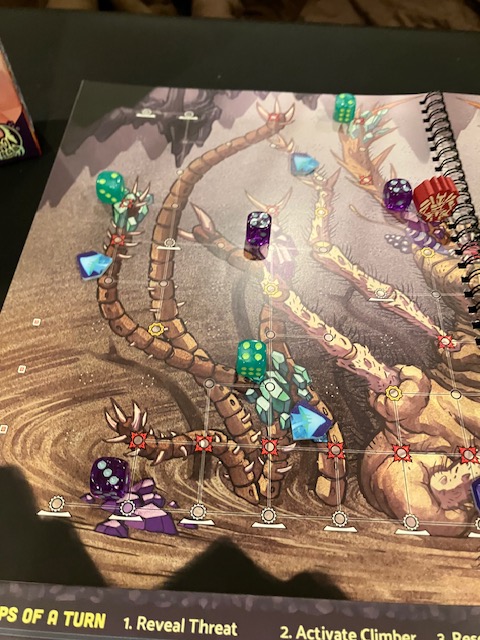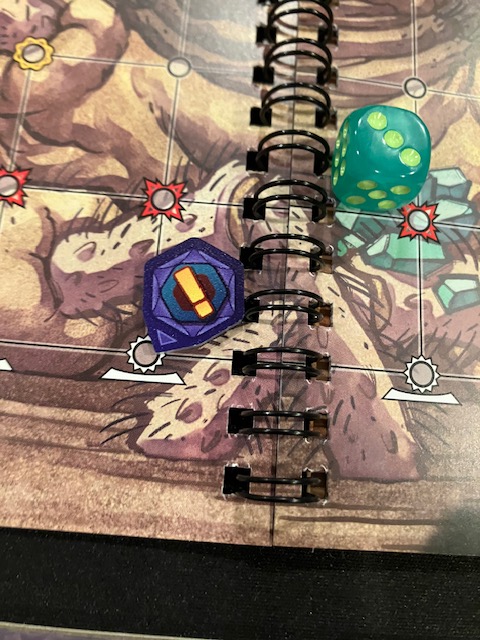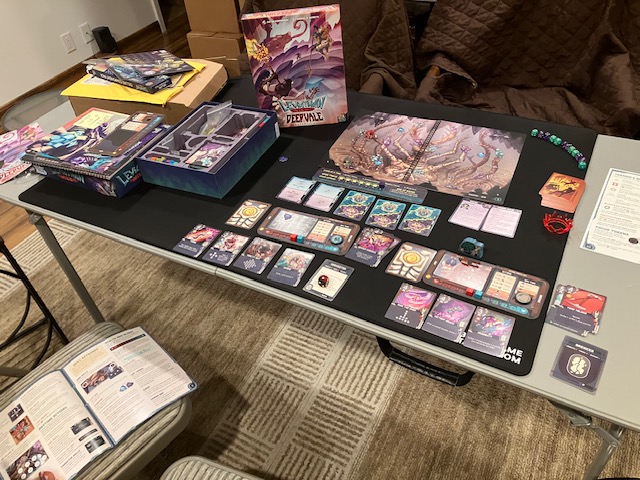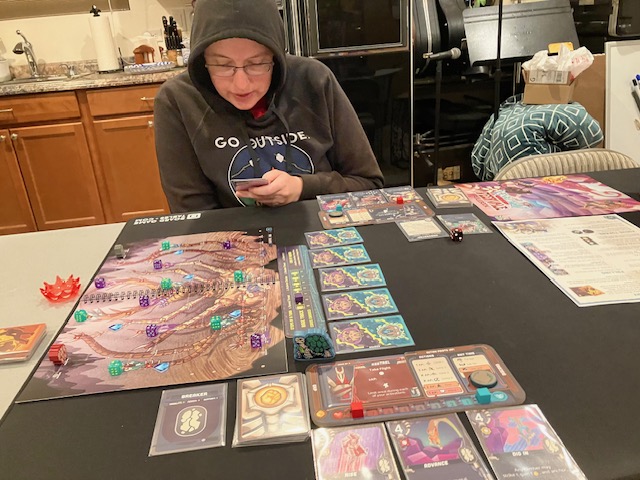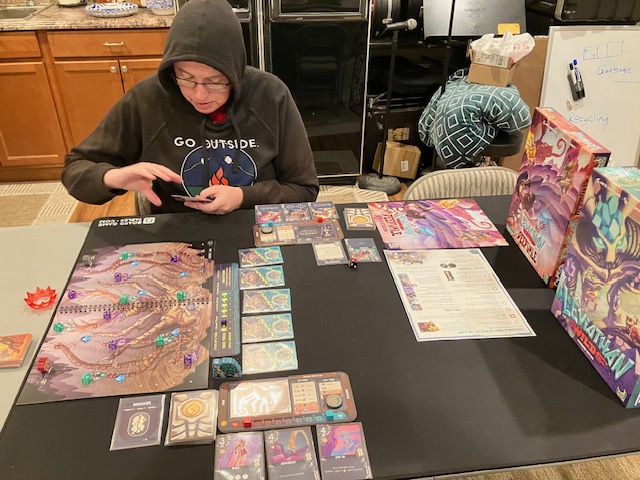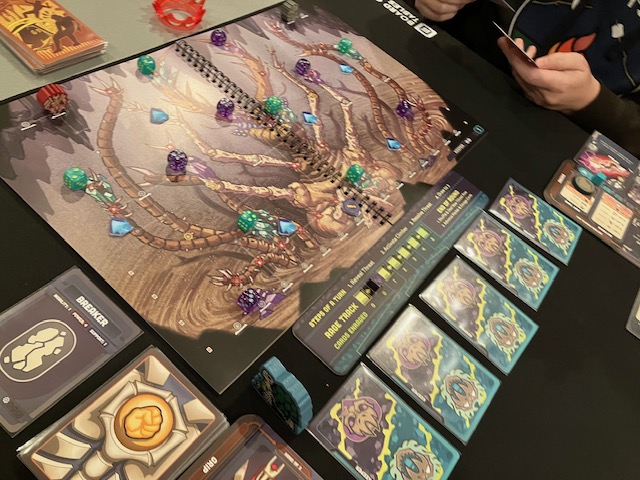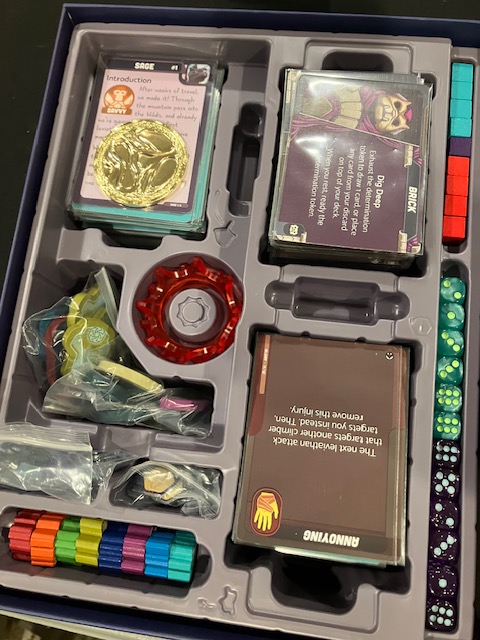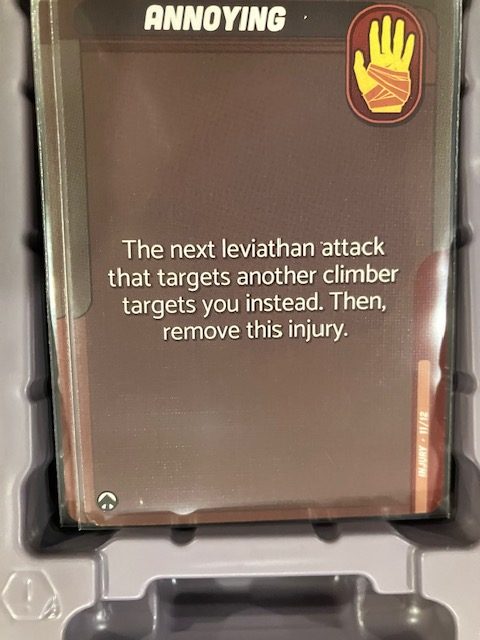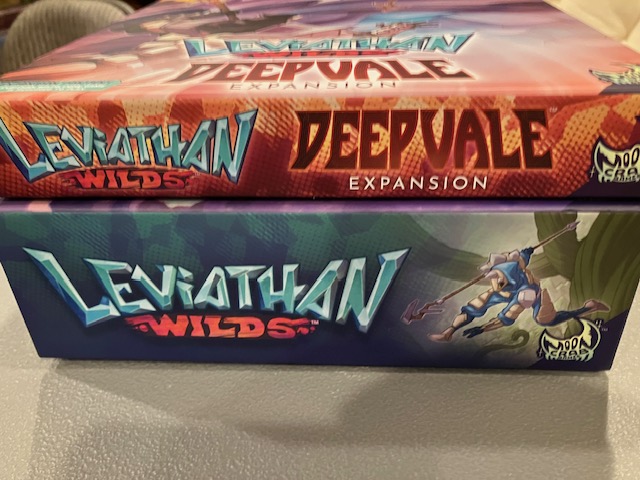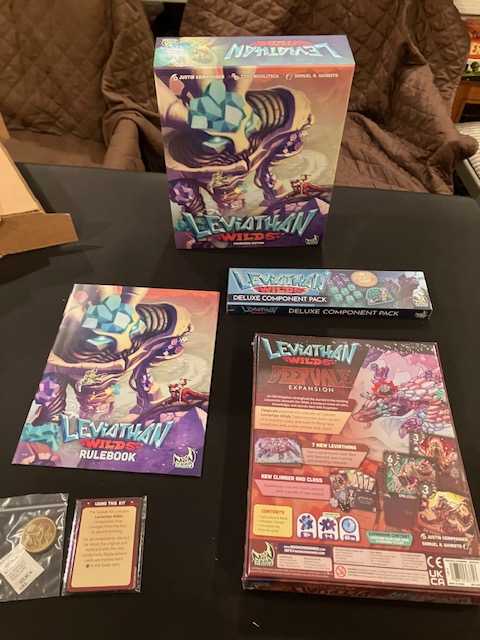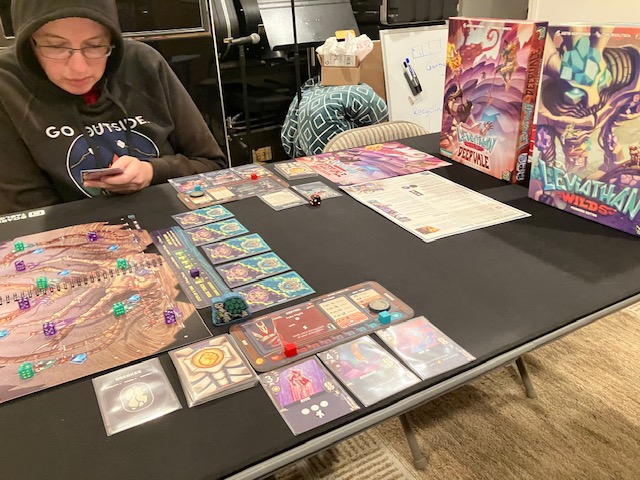This week we take a look at a very hot game called Vantage: this is an open world game with thousands of cards! We show pictures of the game with some cards, and although they could be classified as spoilers, all of these pictures are out of context so I don’t think they are really spoilers. If you are really worried about spoilers, just jump to the Conclusion and avoid all the pictures!

There’s already been a ton of reviews of Vantage: reviewers who got it early for free and Stonemaier Champions (members of a club who get Stonemaier games early with a discount). I am neither of these: I am a plain Jane game player who paid full price for my copy of Vantage! I pre-ordered it from the web site like any schlub and I just got my copy about 2 weeks ago. I am not a rabid Stonemaier fan, nor I am not a prepaid reviewer! I am just a guy who like cooperative games who pays for every single game he gets and never gets ANY consideration from any publisher. So, my review may sound a little different than the others.
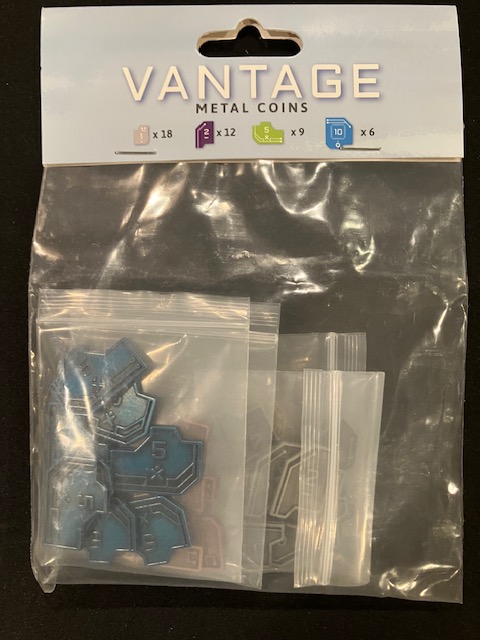
The funny thing is that I pre-ordered the Vantage coins about a year ago and they arrived a year ago. Yes, they actually had the coins for the game a year ahead of the game itself! That’s kinda funny. The fact that I ordered these tells you, yes, I was interested in the game.

We are going to try something a little different: we are going to talk about what Vantage is and what Vantage isn’t. Vantage doesn’t really fit directly into any mold of what other games are; it’s its own thing! But, is it something you will want to play? Is it something you will want to buy? Let’s look more closely.
Unboxing

Vantage is a fairly standard sized box: see Coke Can above for scale.

Let’s be clear: I bought ALL the extras for this game! The wooden skill tokens, the metal coins, and the 2 layer player boards (see above). I was very excited about this!
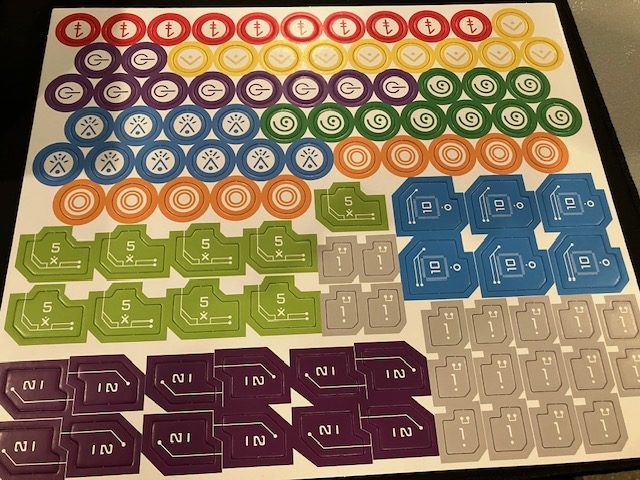
Because I bought all the extras, I didn’t need to punchout anything. I just left this sheet untouched.

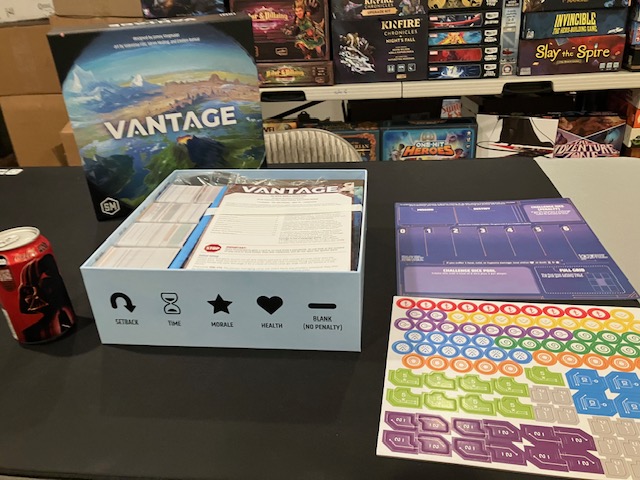
As you look at the box, you can see it’s got a lot of cards! It’s actually pretty heavy!

There are a LOT of books: see above.
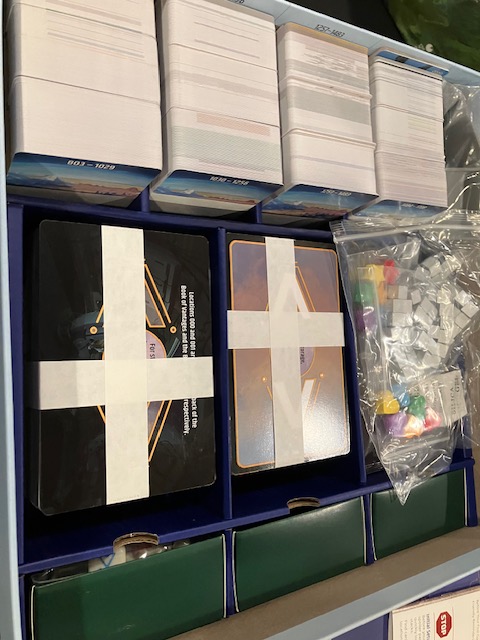
There are two flavors of cards: giant Location cards (see above) ..

And generic “little” cards which will come out as you play. Items, animals, … just different stuff that emerges with gameplay.

Notice just how many books there are! They are called Storybooks: we’ll revisit that nomenclature later.

There’s two kinds of dice: Challege (black) and Skill (white) dice.

And there’s a ton of tokens!
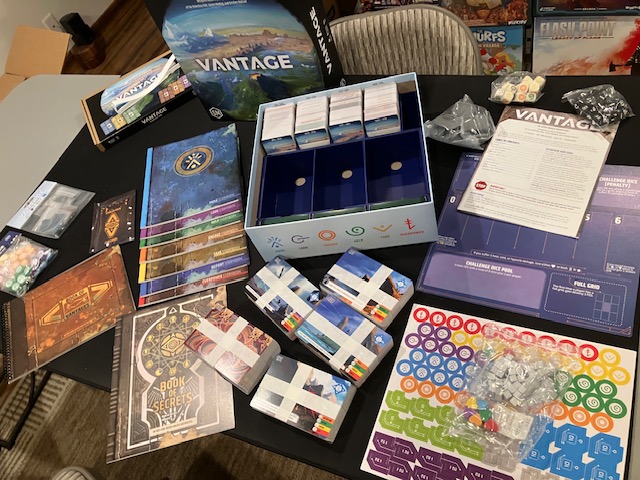
Overall, there is a LOT that comes with this box! It looks really nice!
Rulebook
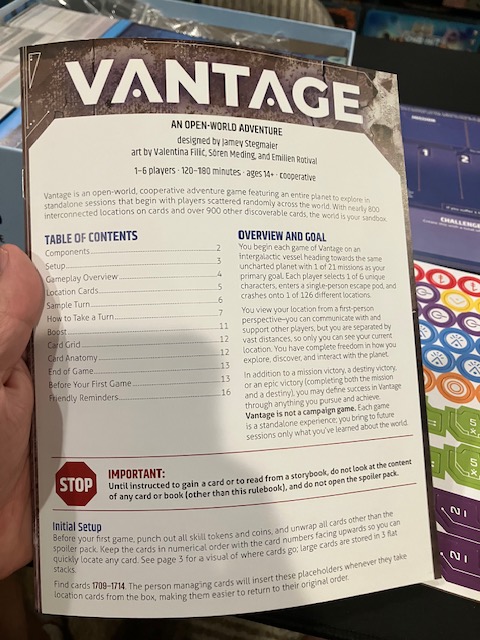
The rulebook is very good, modulo one or two issues. The paper is a special “silky” paper that feels really nice. Note! It has a Table of Contents! Yay! But no index! Boo!

The rulebook gets a straight-up A on the Chair Test!
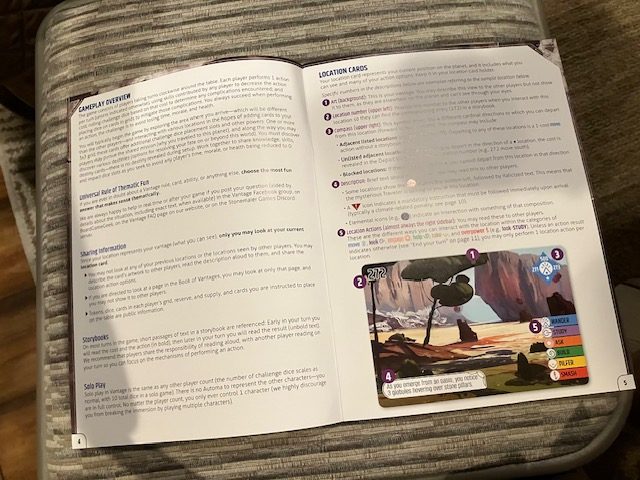
The rulebook fits PERFECTLY on the chair next to me, and it can lay open just right (see above). The font is nice: it’s a good size (not too small, not too big) and it very readable. It’s been a while since we’ve had a rulebook that gets a straight-up A on the Chair Test. Nice job!
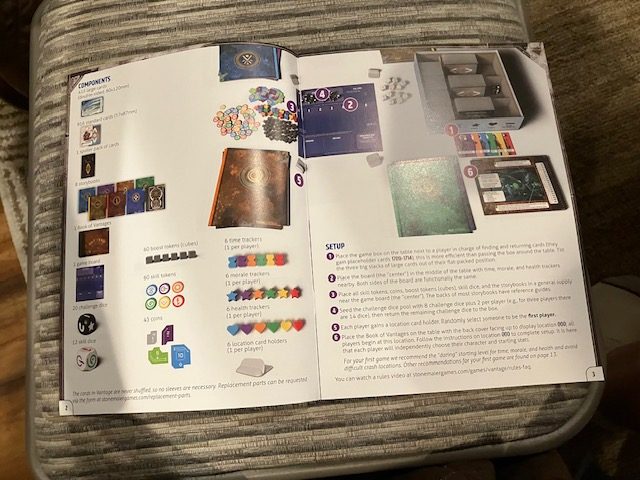
The Components and Set-Up are great: they are all on the same page, so it’s easy to correlate what things are and where they go! Granted, Set-Up is pretty “easy”, but this works really well. And the Components have pictures and are labelled. Very nice!
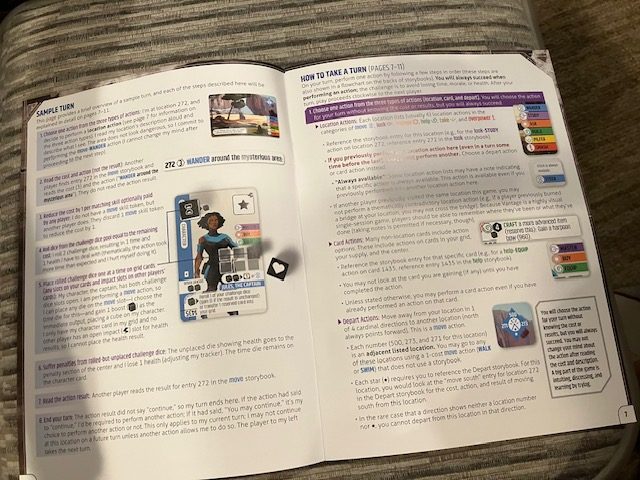
The rest of the rulebook is good: lots of pictures, lots of color to help distinguish things, and sidebars that help explain an issue (without being the only reference to that rule!).
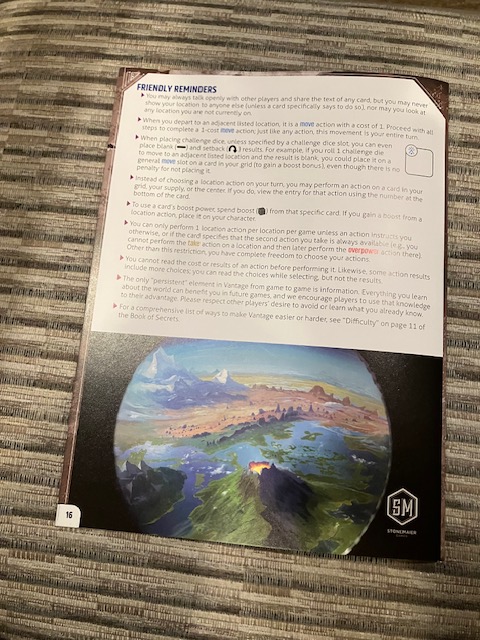
My only complaint is that the back of the rulebook doesn’t have a list of all Icons. It has friendly reminders (see above), but I feel like that should inside the rulebook.
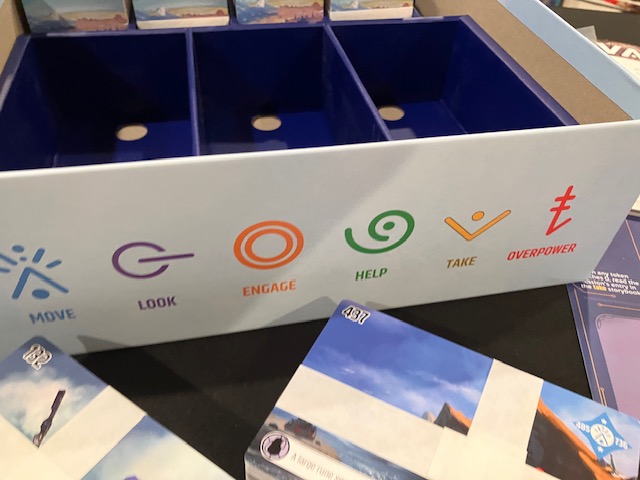
Now a lot of these Icons are on the side of the box (see above and below)
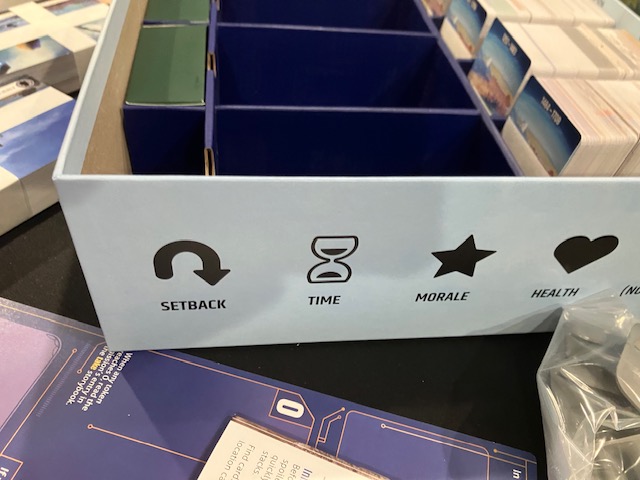
Or on the back of the books:
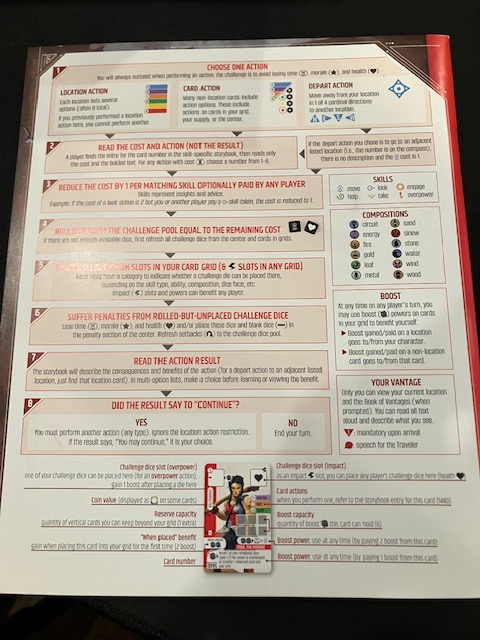
However, I was very annoyed that I couldn’t find what the little circle meant:
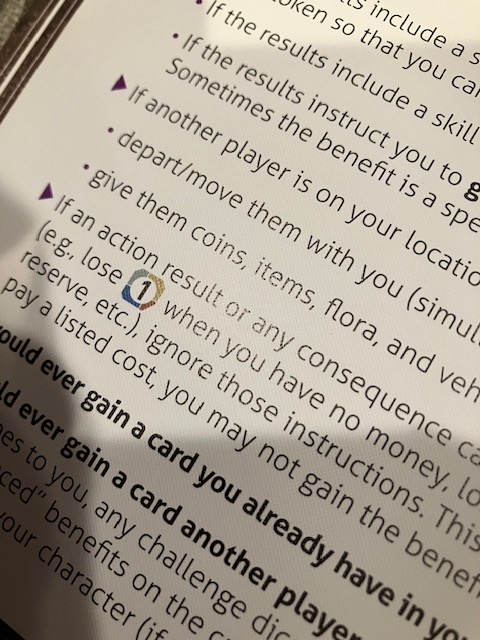
… until I just happened to find in the rulebook! I think that means MONEY! See, it frustrated me that I had to go searching for this. It should have been on the back of the rulebook with a list of Icons! I don’t know where this is defined except for the passing reference on page 10 where you have to infer the meaning!
That’s a pretty minor quibble, but it did slow me down for long enough that I was annoyed. And it really shouldn’t have been an issue, especially when the rest of the rulebook is so good!
But overall, the rulebook was very good.
What Is This?

The game bills itself as an Open-World Adventure (see the top of the page). What does this mean? We are going to explore this issue via what this game is … what this game isn’t ! If we hack away at the positive space of what the game IS and the negative space of what the game ISN’T, then hopefully that will be enough information for you to figure out if this is for you!
Is This a Storybook Game?
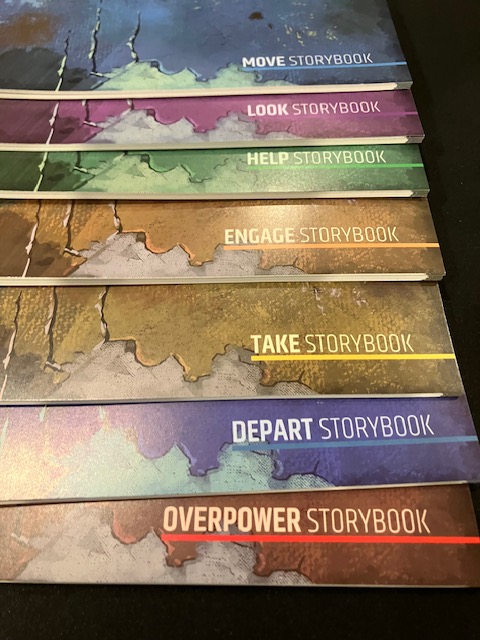
We’ve talked about Storybook games for years here at CO-OP Gestalt; we tend to love them! See our Top 10 Cooperative Storybook Games!
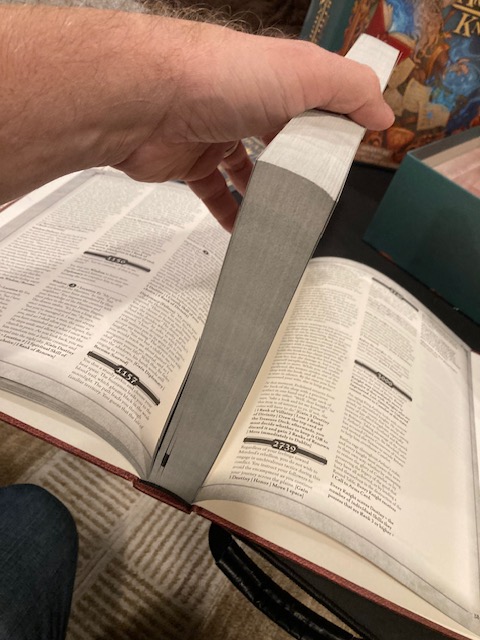
Recently, we reviewed and loved Tales of Arthurian Knights! There is no question Tales of Arthurian Knights is a Storybook game with a beautiful hardbound book and tons of text! See above!
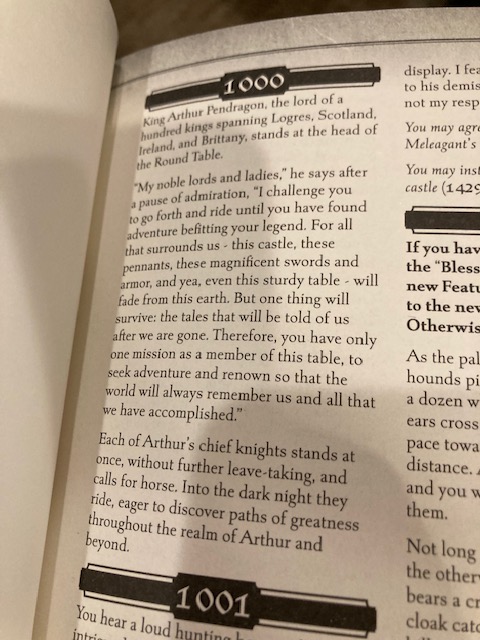
The text in the book flows and paints a picture of Arthur’s Knights! See how flavor exudes from the text above!

Another game that’s a Storybook game is Wandering Galaxy (see our review here). In fact, the recent Kickstarter included two ways to enjoy this Story! On way is a full text experience from the entry book (above and below)!


See more flavor exude from the text above!
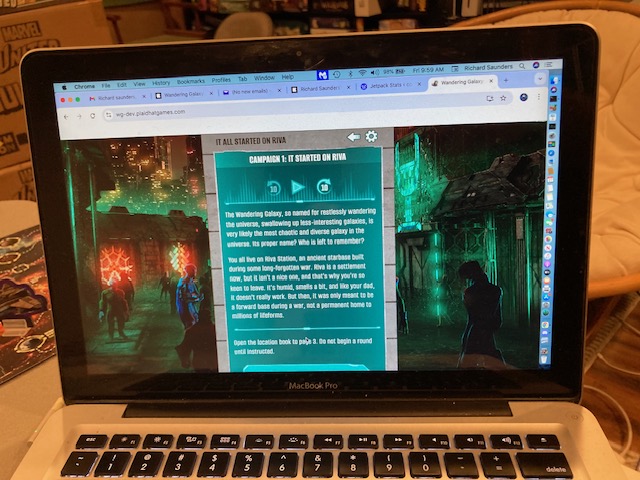
However, you can also enjoy the story text is from the app: it shows the story, but also has Voice Actors read out the text! But there’s still a lot of flavor! (And silliness) It’s very … flavorful!
Why am I going into so much detail about Storybook games? Because I think Vantage is both a Storybook game and NOT a Storybook game! It depends on how you look at it! What do I mean by this?
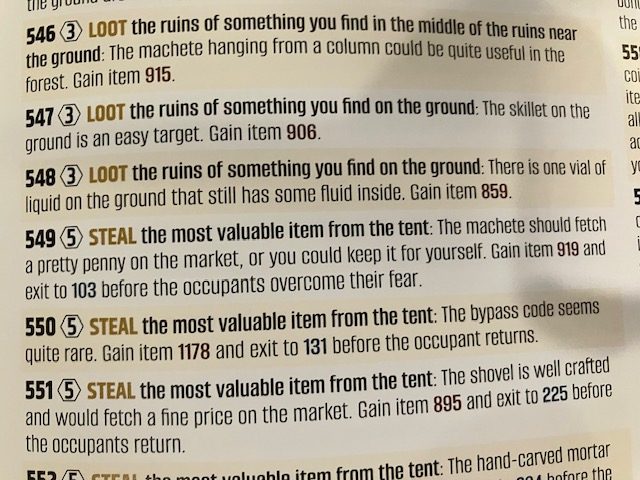
Many, if not most entries in the Storybook, are very very terse; almost like directions. See above for examples. There’s not of flavor or story in this text! Sure, there are entries with more flavor and story, but it feels like most of what’s in here is more directions than story. I struggle a little with the appellation Storybook when that’s not much story. That’s why I think this ISN’T a Storybook.

My friends LOVE Storybooks and text (see above), and Tales of Arthurian Knights is probably their favorite game of the year! There is so much flavor, so much story, so much … flowery text in the storybook! My friends LOVE this type of Storybook!
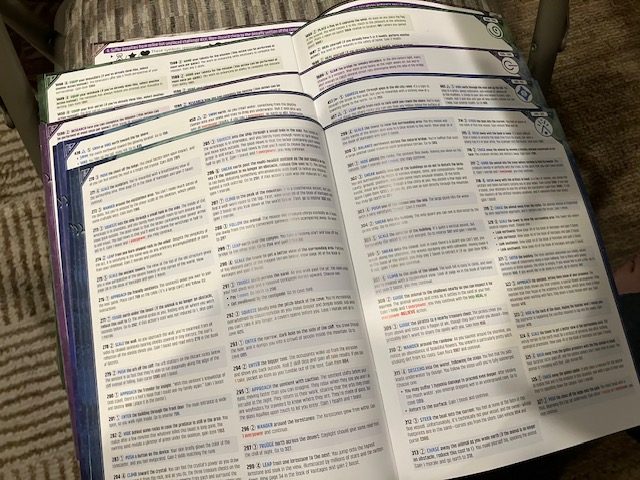
Before you go off and write me hate mail, I realize that a lot of people don’t like lots of flavor or Story text! Some people prefer to just get to the game! You could argue that this is just a very concise Storybook, but it’s still a Storybook! That’s a very reasonable argument!
But I wanted to point out that some people would see the lack of flavor as a reason NOT to call this a Storybook game.

It’s also worth pointing out that a lot of Story in Vantage comes from the Location cards! As you explore the world of Vantage, these little scenes truly paint a picture of what you see! There’s no need for flowery text in a Storybook because you have beautiful images to tell the story! Who needs flowery text when a picture paints a thousand words?
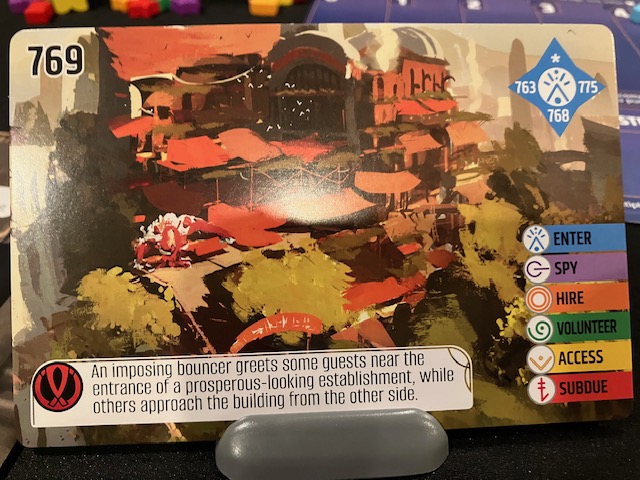
The Location cards are, strictly speaking, distinct from the Storybook. You could argue that because the Location cards are technically not part of the Storybook, that makes the argument that the-Storybooks-aren’t-Storybooks even stronger! The story is REALLY on the Location cards, not the Storybooks themselves!
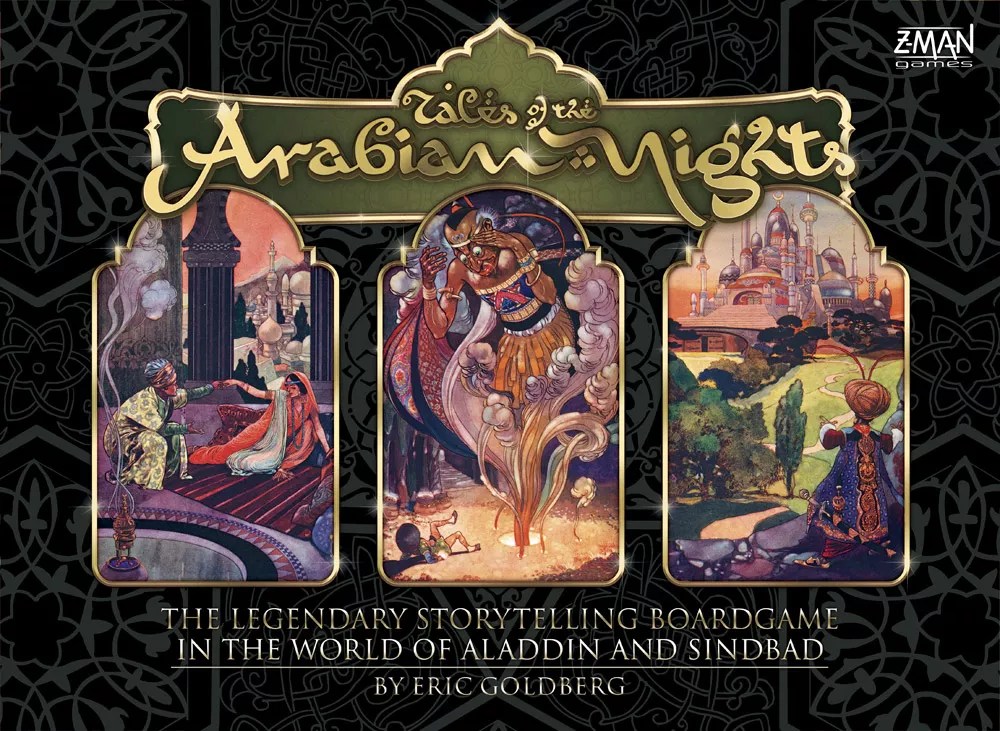
That’s a silly argument because Vantage as a full game includes lots of story. But this is why I wanted to talk about why you could consider Vantage’s Storybook NOT a Storybook! These distinctions helps define what this game is. There’s still story, but arguably it’s distributed among the cards and Storybook. The Storybook is NOT the traditional Storybook of Tales of the Arabian Nights. Vantage’s Storybook is … different: it’s more like directions.
If you love flavor text and like reading flowery text aloud (like my friends do with Tales of Arthurian Nights or Wandering Galaxy), then Vantage maybe isn’t the game you are looking for. But, you may still like the way the story comes out in Vantage (with the art and Storybook giving directional text).
Is This An Adventure Game?

On the surface, the obvious answer seems “Yes! Vantage is an adventure game! Players explore and go adventures and interact with the objects/stuff around them!”
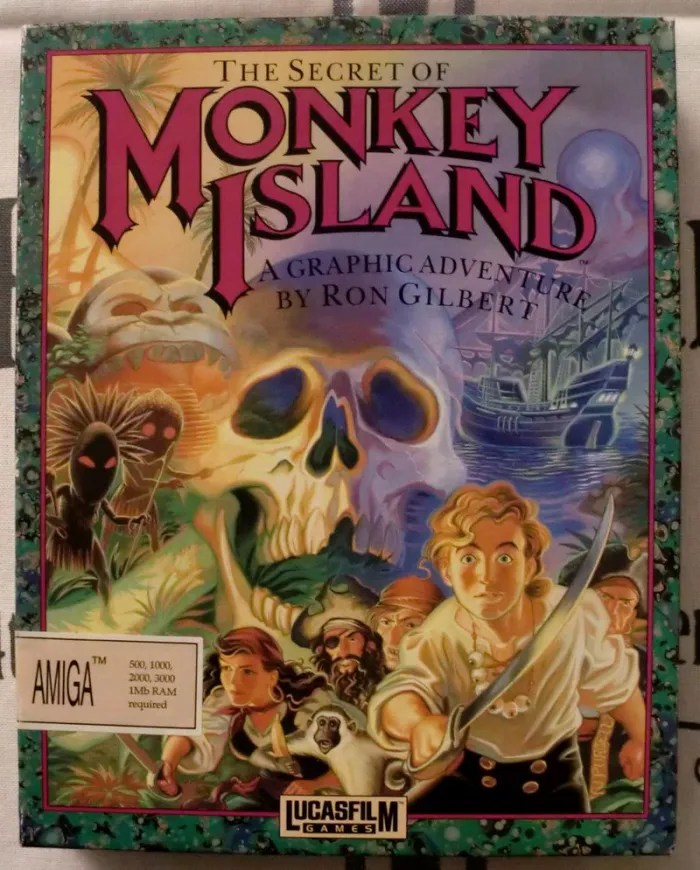
This is basically the same definition we gave for Point-And-Click Adventure games in our Top 10 Cooperative Point-and-Click Adventure Games!
“What makes a board game a point-and-click adventure game? For us, it breaks down into three fundamental elements:
- You move along in a story! You are part of a story: this is interactive fiction!
- You explore a world! The game is about exploration and discovery, as you “move” from location to location. In the point-and-click video games, you could “point-and-click” to move around a map!
- You solve puzzles by combining objects! You need to find objects and combine them in unique ways to solve puzzles. In the point-and-click video games, you would “point-and-click” on items/verbs to combine them!”
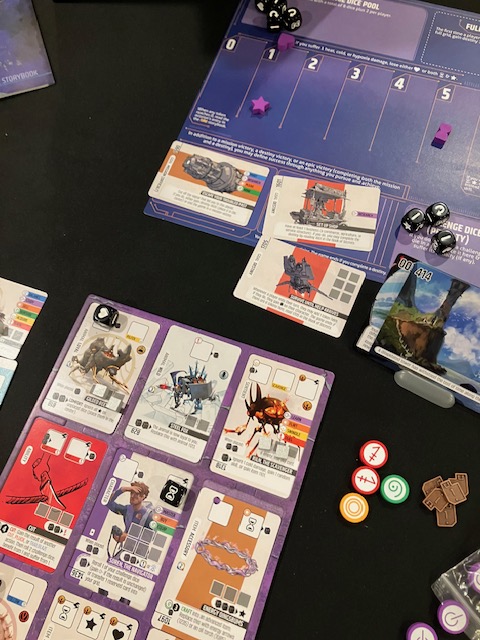
On the surface, it looks like Vantage meets these criteria … because it mostly does. But let’s look deeper into the interactive fiction portion: although there are stories that emerge as you play Vantage, it’s not “quite” the same as interactive fiction where there is an overall story./puzzle you are completing. This point can be countered by pointing out that there are many many stories in Vantage waiting to emerge! That’s a fair point, but it’s worth pointing out that there’s not some overall story to this. If you want a novel or plot to emerge (like The Secret of Monkey Island or Thimbleweed Park), Vantage is not the same thing.

The more crucial thing is the rule that you can’t interact with a Location more than once! See the rule from the Vantage rulebook above! In most point-and-click adventures, it’s fundamental that you can go back and revisit a Location and interact in a different way or multiple times or just look everywhere! This particular restriction seems … strange. It’s one major reason I would call this NOT an Adventure game. Or at least not a point-and-click Adventure game? Maybe that’s the difference?

Maybe we should revisit our definition of point-and-click Adventure games and add something like “You can generally interact with the environment over and over“. (And to be fair, there are places in Vantage where you do get a few extra chances to interact with a Location, so don’t go sending me hate mail).
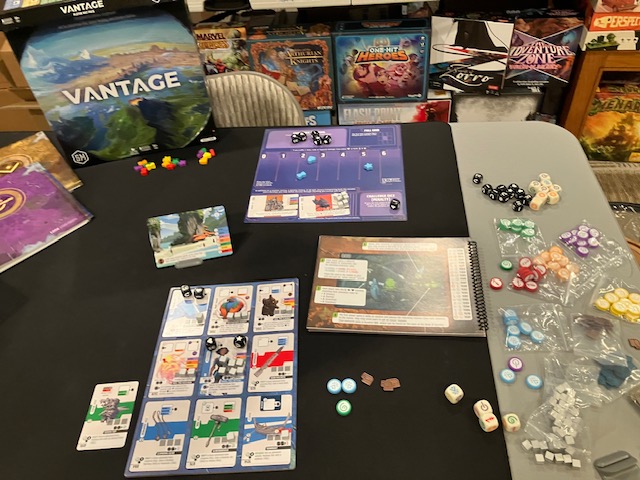
So, this is an Adventure game, but maybe not fully a point-and-click Adventure game?
One other thing also marks this down a little from the Adventure game for me: the exploration.
Is This An Exploration Game?
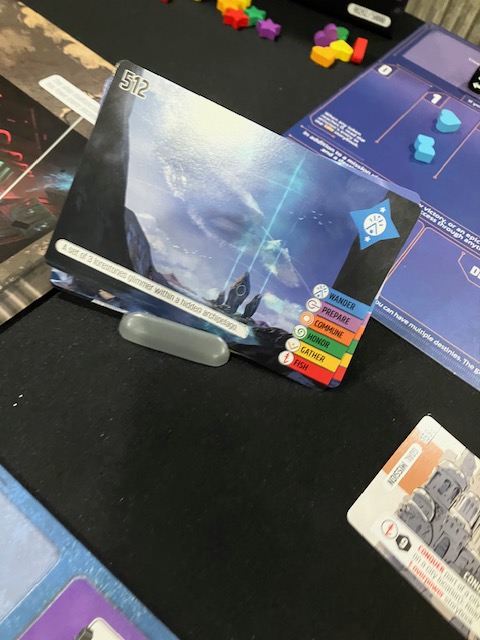
To say this isn’t an exploration game is crazy! Players wander! Players interact with new places! How could you claim Vantage is not an exploration game?

Consider Earthborne Rangers: a prototypical cooperative exploration game where I joke it’s a 4x game: Explore, Explore, Explore, and Explore! See review here!
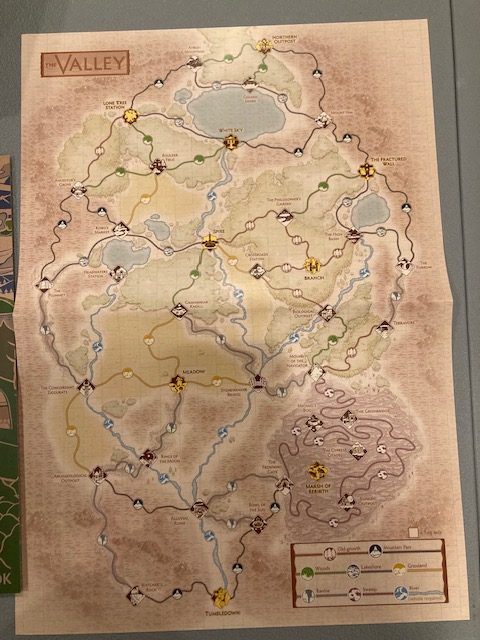
In Earthborne Rangers, you can play over and over and over … and come back to where you left off! You have a map, and you get a feel for the world! There’s a lot of adventures in this world … just like Vantage! Like Vantage, you can keep coming back over and over and see more of the world!
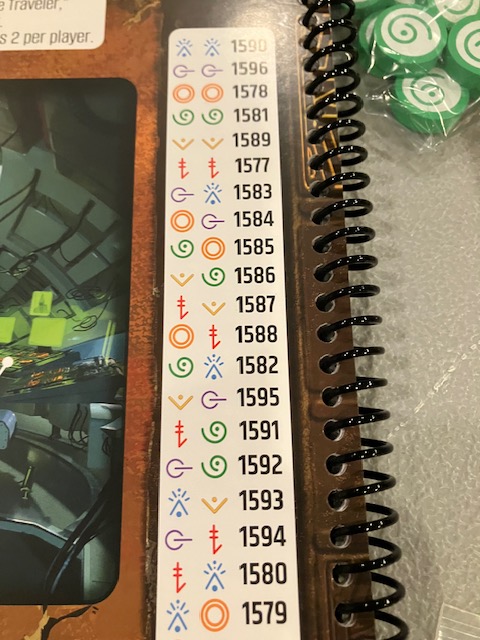
Vantage isn’t a campaign. You just crash land on the planet every time at a different place: see the chart above. Every game is different, as seeded by the chart above.

So I finish a game of Vantage. And it’s over. My progress is essentially lost. In Earthborne Rangers, I can continue where I left off and keep exploring. That’s the difference; your exploration is lost in Vantage (but see below).
When I say I want to explore a topic, when I want to explore an issue, when I say I want to explore … I don’t want to lose all my progress! Lack of progress can make the exploration feel pointless. If I don’t have any vested interest, if I don’t have a desire to continue, it doesn’t feel like exploration, it just feels like random-stuff-happening-to-you. And that (admittedly subtle point) is why the exploration in Vantage may not feel like exploration.
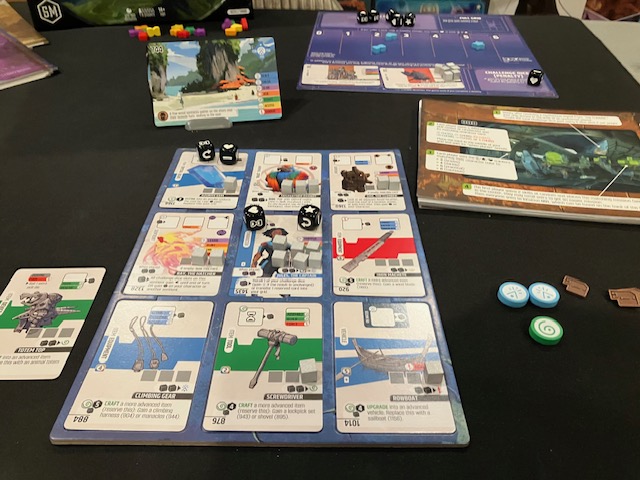
My first solo game of Vantage ended in a win… it was fine! But it felt vaguely unsatisfying as “Well, I explored this world, but so what? I have no idea where I was or what I was going! I may never come back this way again, so who cares?”
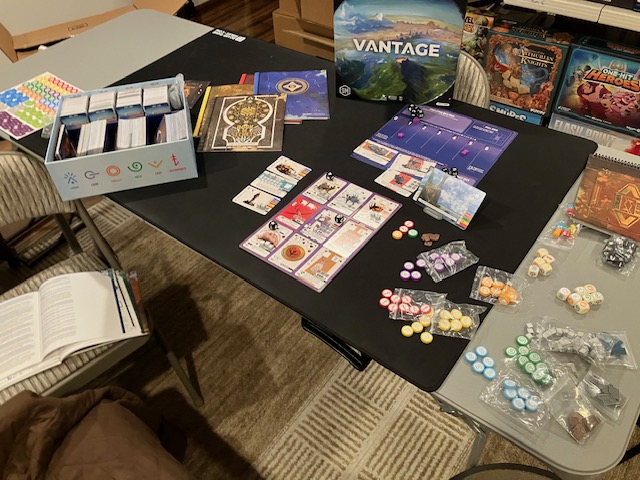
This unease went away a little when I played my second solo game: if you just take the game for what it is, as a carpe diem game and just enjoy it for what it is, then it’s a lot more fun! This isn’t a game about trying to explore and keeping track of this planet, you just make decisions and live with them!
Of course you explore when you play Vantage, but it’s not the type of exploration that persists from game to game. But see below.
Is This a Campaign?
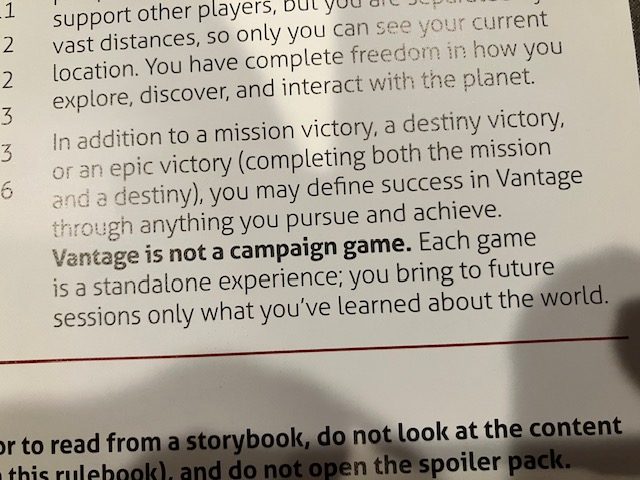
The rules state very clearly that this is NOT a campaign game. See rule above!

If you play this sporadically and infrequently, then this is absolutely not a campaign. There’s no memory of previous games.
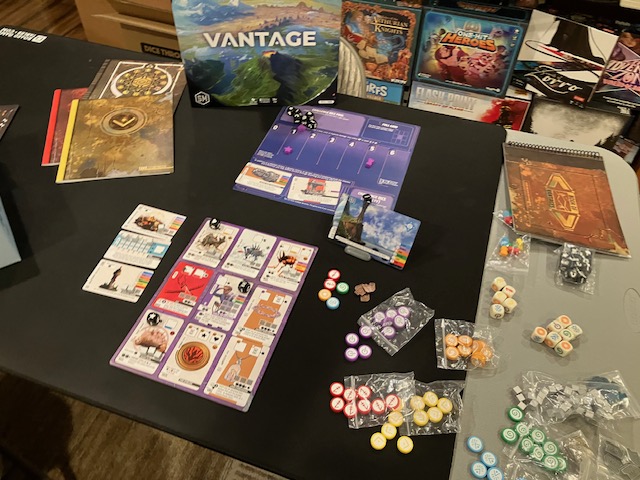
But what if you play just enough that you start to remember things? Then is it a campaign game because you can take advantage of what’s you’ve seen before! Stated in a more mathematical way, as the number of plays going to infinity, this becomes a campaign game!
I don’t know if you remember Dollhouse; it was a TV show where dolls (people) were wiped of their memories and implanted with new ones weekly. Over time, some of the dolls started to remember what they did in previous runs … and that’s kind of what Vantage feels like over time. You are a doll from Dollhouse, and some of those implanted memories … stick. I don’t know of any other game like this; It’s a very different way to look at a game.
Vantage isn’t a campaign game. But over time, it can become one. Sorta.
Starfleet Mode
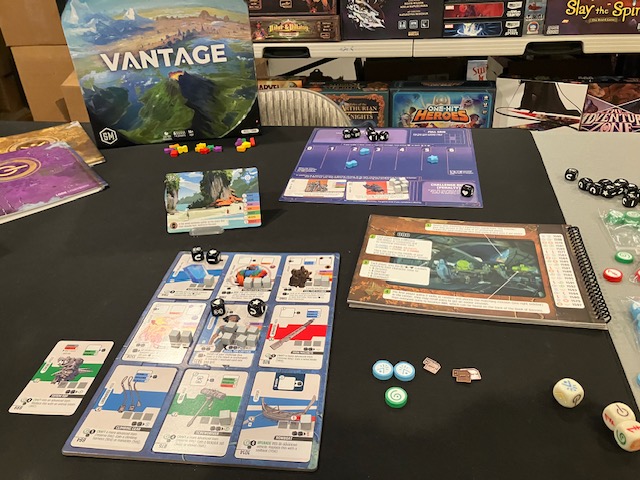
After my first solo play, I was a little depressed. I liked this world! I liked the pictures in the game! I liked the basic gameplay! And yet, all the exploration I did was lost. All that work, gone. In a later game (I want to say it was my third game), I got to a place where I could keep exploring for a while … and that was cool! I like being in this world! But whenever I finish a game, I think “I’d really like to come back to where I was and continue exploring and get to know this world better!” I get a little depressed when I did all that exploration … for no reason?
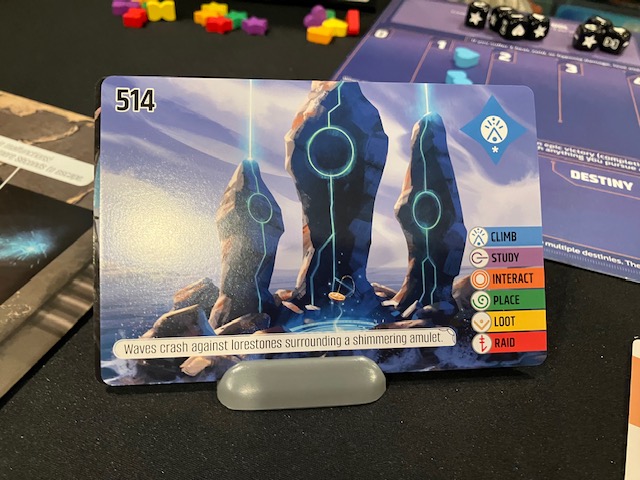
What I want is a Starfleet Mode or Exploration Mode or … frankly, a Campaign mode. I understand that the game is all about getting your nine cards in a grid, and once you do that, the game kind of ends. Maybe there could be a way to “continue” the game; maybe you just lose some of your cards and continue?
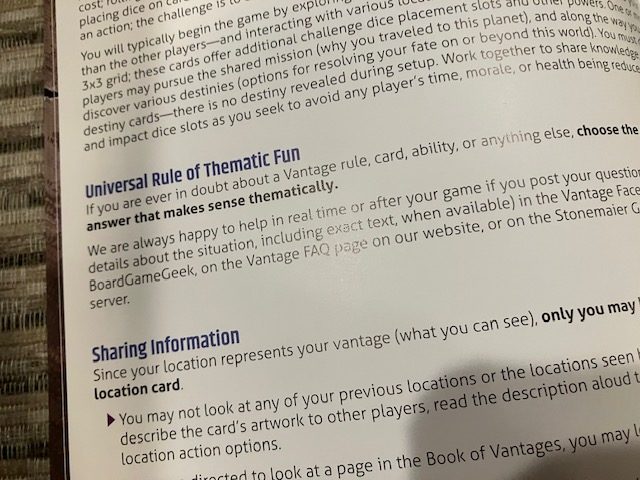
The rulebook is very “open” about how you play the game, from the Universal Rule of Thematic Fun (see above), to victory conditions even being kind of what you want! It’s very open. But I wanted a more systematic way to explore this world! Every game starts fresh with you crash landing on a new place on the planet! Sure, you can make up your own rules for a Starfleet Mode (My current set is: keep all but three cards and keep exploring, but get rid of your old destiny), but this feels like something we should more direction on (from the rulebook).
I want to continue exploring this planet in Starfleet Mode (my own term, it basically means Campaign Mode) but it kind of bugs me off that I don’t have a systematic or defined way as defined by the rulebook.
Solo Mode
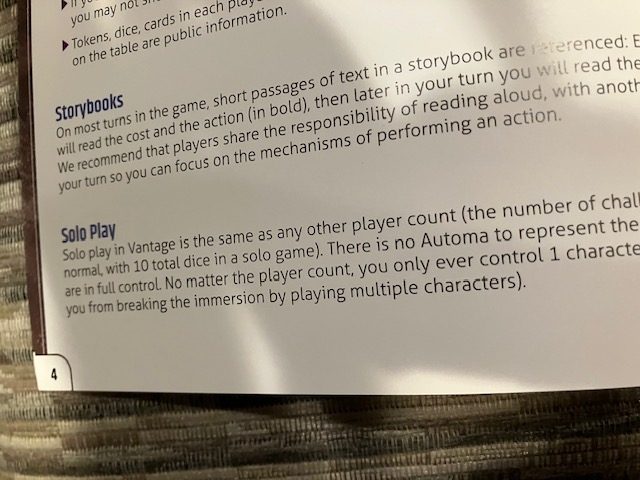
Vantage plays well solo: the rules are very well-defined at the bottom of page four. (Thank you for following Saunders’ Law)!
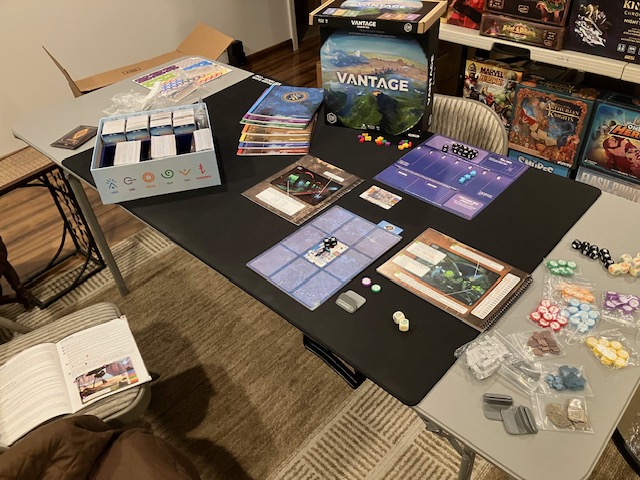
My first three games were solo games; I think it’s very important to play solo before you teach others. There’s just enough rules that it’s better to have a sense of the game before you bring this out to a group. Luckily, the solo mode is easy to get into and learn the game.
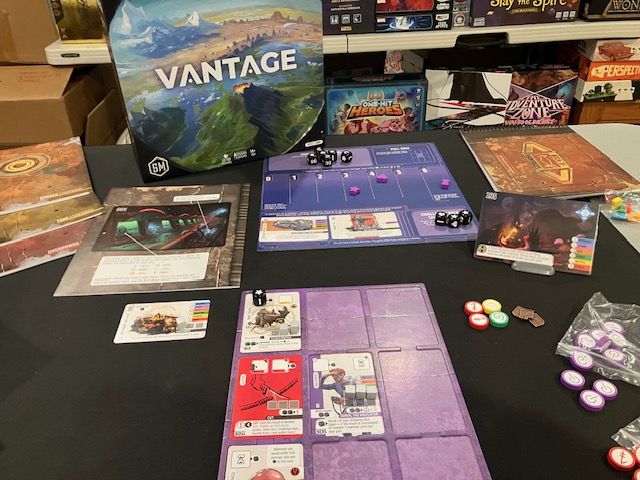
My first solo play left me a little … depressed. I wanted more exploration, but I felt a little unsatisfied that I lost all the exploration I had done. After thinking about this for a few days, I came back and played my second game. This time, I was in carpe diem mode: I just played, made decisions, and took the consequences of my actions without caring too much. I know I probably won’t come back to this part of the world anytime soon, so I just enjoyed what I was doing. And my second game was much more enjoyable. But I feel like I almost had to get depressed in my first game to appreciate what this is and what this isn’t.
A third solo game had get to do a little exploration. And after my third game, I realized that every single one of solo games was VERY DIFFERENT. I explored more Locations in some games, I interacted in others, the items I got influenced more what I did in other games. That’s quite an accomplishment for a game!
To teach the game: absolutely play this solo first, then bring this out to your friends. Do I like this game enough to continue playing it solo? Maybe? If you enjoy the carpe diem flavor of this, where you just enjoy this game for what it is, then I think you will love the solo mode! But, if you are like me, and wanted more persistent exploration, then you may feel a little unsatisfied.
I think a Starfleet Mode would make me want to play this again solo MUCH MORE. Sure, I can make my own rules for that, but why aren’t these in the rulebook? NOTE: (For all I know, the Starfleet Rules are in hidden somewhere in the Secret pouch, or the Books of Secrets, or somewhere else. But I can only tell you that after about 5 plays, I haven’t seen anything like that).
Cooperative Mode

I invited my Escape Room buddies (Charlie and Allison) to play this with me.
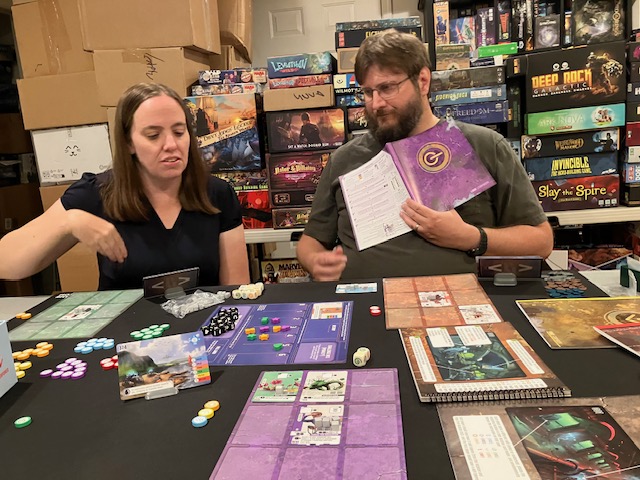
It was a hit! We played a two-hour game and had a fun time exploring and reading to each other! One of things you forget in Storybook games is that everyone stays involved as you read the Storybooks to each other!

I asked Charlie and Allison what they thought? Would you play again? Absolutely! The vague sense of dissatisfaction I had in the solo game went away in the cooperative game, as we all stayed involved and just enjoyed the game for what it was.
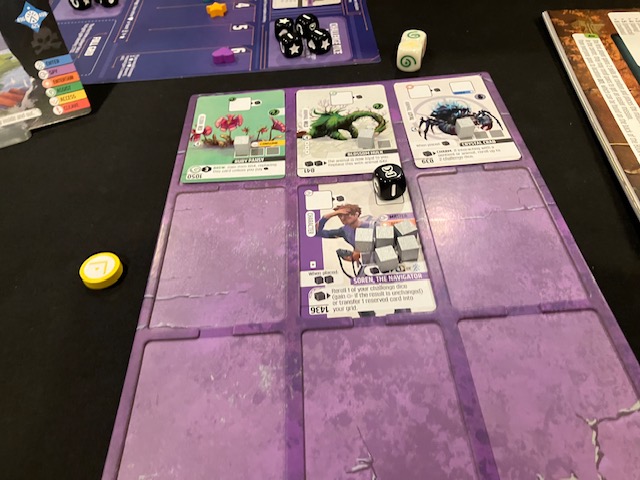
The cooperation was .. interesting. In the cooperative game, we have all crash-landed at different points on the planet, so we are “kind of” playing multiplayer solitaire. We each have our own viewpoint or vantage (see what I did there?), and we don’t really interact with other (although you can if you end up on the same space, but that’s generally not what happens).
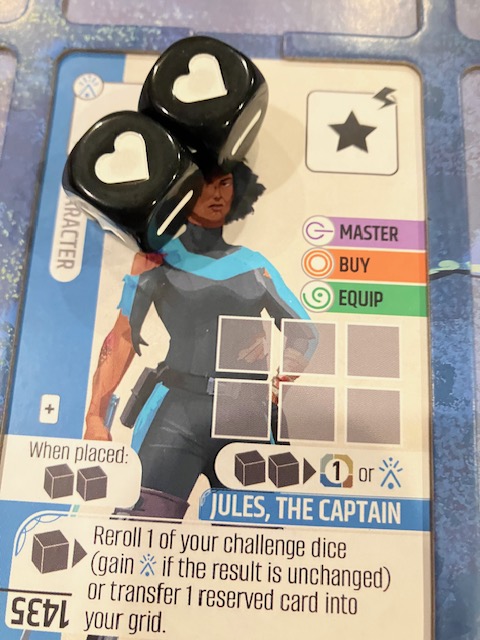
The cooperation comes in by either sharing skill tokens with each other (to mitigate die rolls), or sharing dice-placement locations with each other. When you make Challenge rolls, you have to deal with the consequences; you can mitigate the dice-rolls by doing dice-placement on appropriate spaces on characters. See above as the Blue character can always mitigate a die for a Explore (blue) type roll. Also, she has a “global” place for any character to mitigate Morale (the lightning bolt means “global: any character may use”).

Any dice you can’t mitigate are either Morale, Health, or Time losses. See above as each character has their own Morale, Health, and Time. If any of these go to zero, the game is “over”.
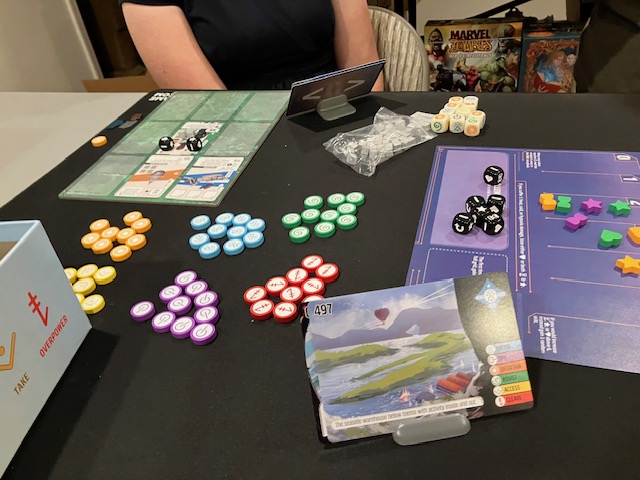
Thematically, it’s a little specious that we can share skill tokens and dice-placement spaces, because we aren’t on the same Locations (usually). My own interpretation of this: I like to think that we are all in constant communication over some intercomm system, and we can share each other’s expertise! So, the sharing skill tokens and dice-placement spaces, at least in my mind, is sharing expertise! “Don’t eat that! Purple plants are generally dangerous!” I kind of wish the rulebook had done more to explain this cooperation thematically. But hopefully my explanation of sharing expertise works for you.
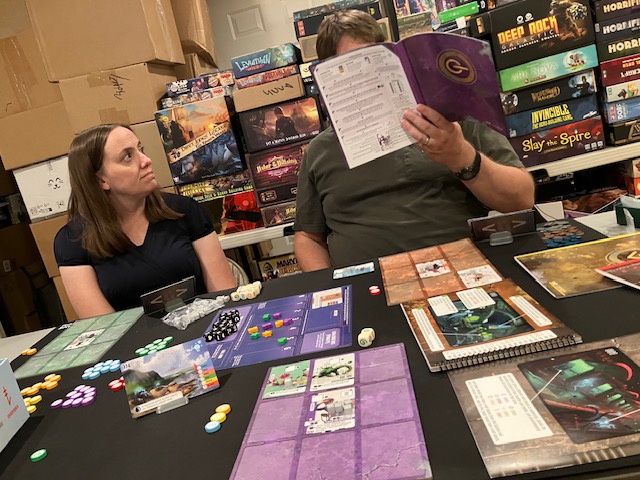
One more thing, I kind of think three or four is the best player count; With three, you are only “not involved” every third turn, and you can care about your friends stories … because there’s only three or four of them. At higher player counts, I think you will “stop caring” and the game will become much more multiplayer solitaire (and you might get bored waiting for your turn).
Things We Were Unsure About

Locations: Charlie and Allison didn’t love that we couldn’t see each other’s Location pictures: but the rules are very clear about this. I think the game would offer the explanation that it would “break immersion” if we could share pictures: you should only be experiencing your own story. While I understand this explanation and maybe even might agree with it in theory, it’s so much more fun and cooperative to say “Look how cool this Location is!” .. and show it to everyone. It would actually make the game more cooperative, or at least more interactive. In fact, if we go with premise that we have an intercomm system that we are communicating on, I’ve got to believe we have a camera on our phone! 🙂 Maybe the game should just allow you to share pictures every so often … the rules are a little draconian on this point, but maybe a little too much.
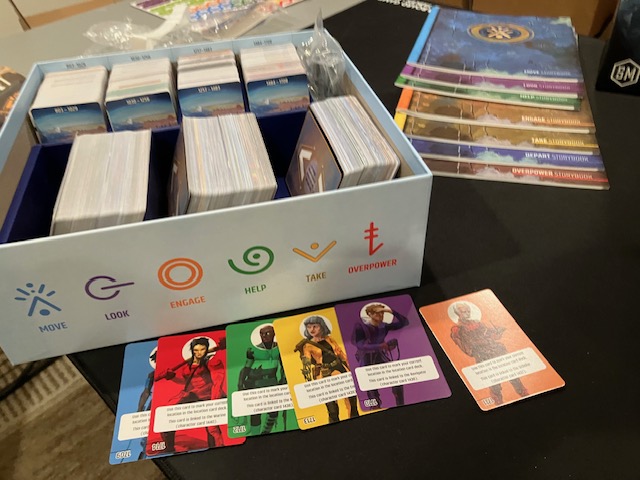
Bottleneck: The major bottleneck in the game was almost always waiting for Rich (me) to get the cards. It was probably the most annoying part of the game. The rulebook suggests that only one player should handle the cards … as it makes the game move faster … but it feels there could be a better way to share the load on this. Me, as Rich, ALWAYS did all the work and it was annoying. An easy easy thing would be to let one person handle the Location cards and one person handle the items. At least then 2 people would be doing that in parallel and share the load!! The decks can always easily be divided as well. Maybe it’s too chaotic to split these decks, but I feel like there’s got to a better way to share the load: this is a cooperative game for goodness sakes.
Conclusion

You might think, that after reading this, that I didn’t like this game. But I did! I just wanted to explore a lot of the issues so you understand what this game is and isn’t! It’s not a campaign game, but it can be over the long haul. It’s an exploration game, but it’s kind of not as you forget all the exploration you’ve done from game to game (usually). It’s an adventure game, but it’s kind of isn’t as you can only interact with Locations once. It’s a Storybook game, but it’s kind of not as the Storybook is more like directions (and the story exists in the Locations). Vantage is just a little different, and I hope you got that from this review.
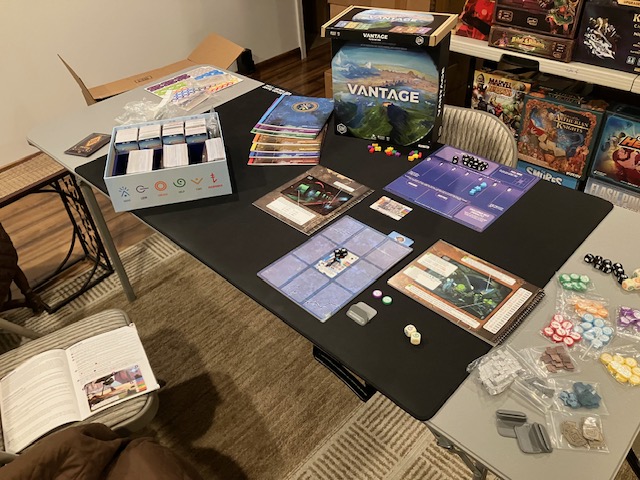
I liked the solo mode: it works well and it really teaches the game. Be aware that you might feel vaguely dissatisfied in the solo game because you don’t get to continue your exploration from game to game. If you go into the solo game with a carpe diem mindset, and just enjoy this for what it is, you will be much happier! I’d probably give this a 7/10 for solo mode, but if there were a more systematic way to explore the Planet and keep the exploration going (especially in the solo mode), I’d probably bump this up to an 8 or a 9/10. It’s a pretty neat world!

The cooperative mode was a hoot and we had a fun time playing! The cooperation feels a little athematic unless you think of us all sharing an intercomm system! Then the sharing of skills and dice-placement mitigation spaces is like sharing expertise amongst ourselves; that little premise really goes a long way towards making the game feel cooperative. Of course, the Storybook reading to each other makes the game very interactive and fun too! I’d give this 8/10 for cooperative play. I’d probably never play with more than four players though.

If you are interested in Vantage, you should give this a try to see if you like it: It’s very different from other Storybook games like those in our Top 10 Cooperative Storybook Games!! I freely admit I didn’t love my first play of Vantage that much; I had to play it a few times. Maybe you want more flowery prose, maybe you want more story, then consider Wandering Galaxy or Tales of Arthurian Knights instead. Maybe you want more persistent exploration, consider Earthborne Rangers instead. But Vantage is such a different beast than many games out there, don’t judge it right away. Give it few times to see if you like it. And it’s okay if you don’t like it. It’s also okay if you do like it!
